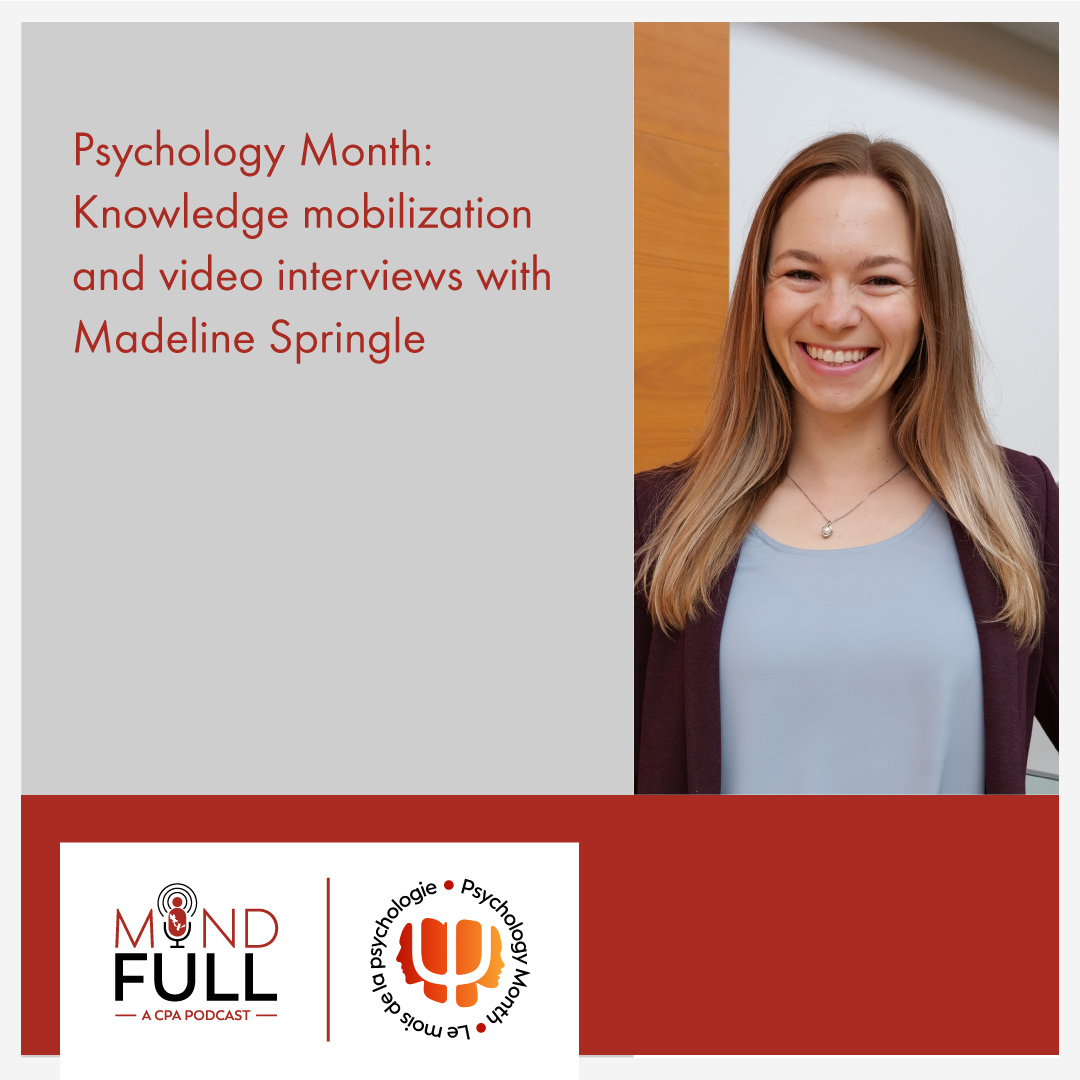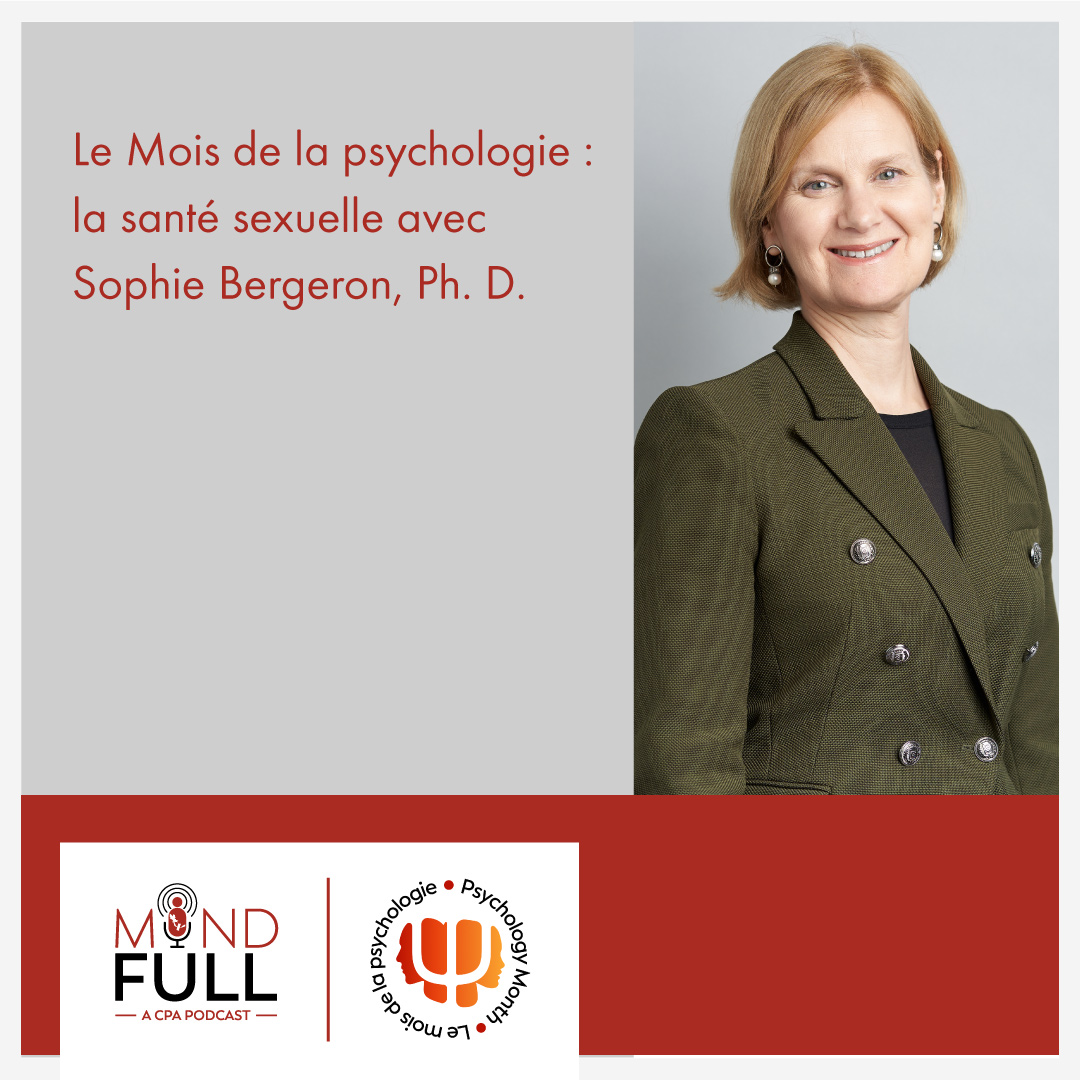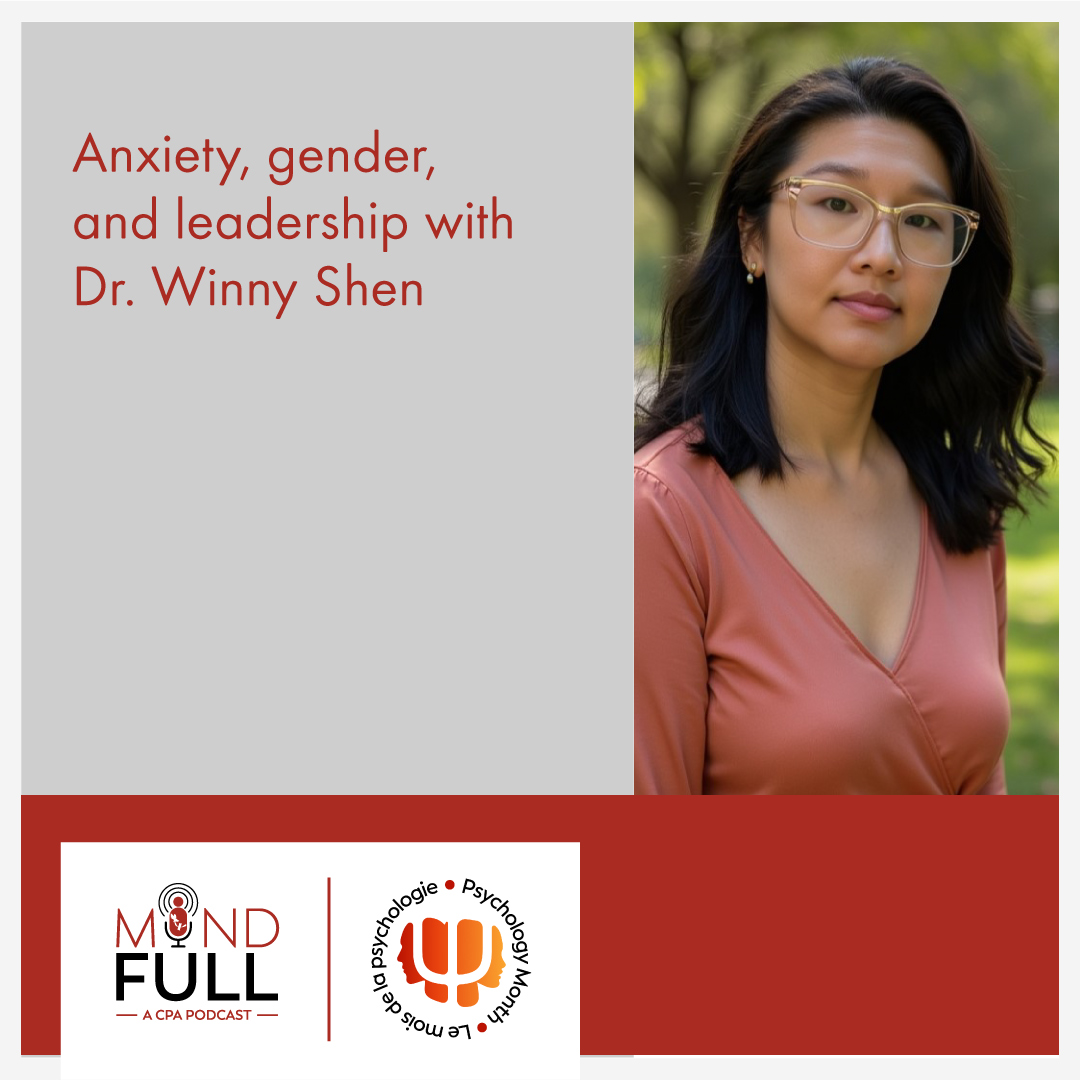Psychology is rooted in science that seeks to understand our thoughts, feelings and actions. It is also a broad field – some psychology professionals develop and test theories through basic research; while others work to help individuals, organizations, and communities better function; still others are both researchers and practitioners.
Profiles
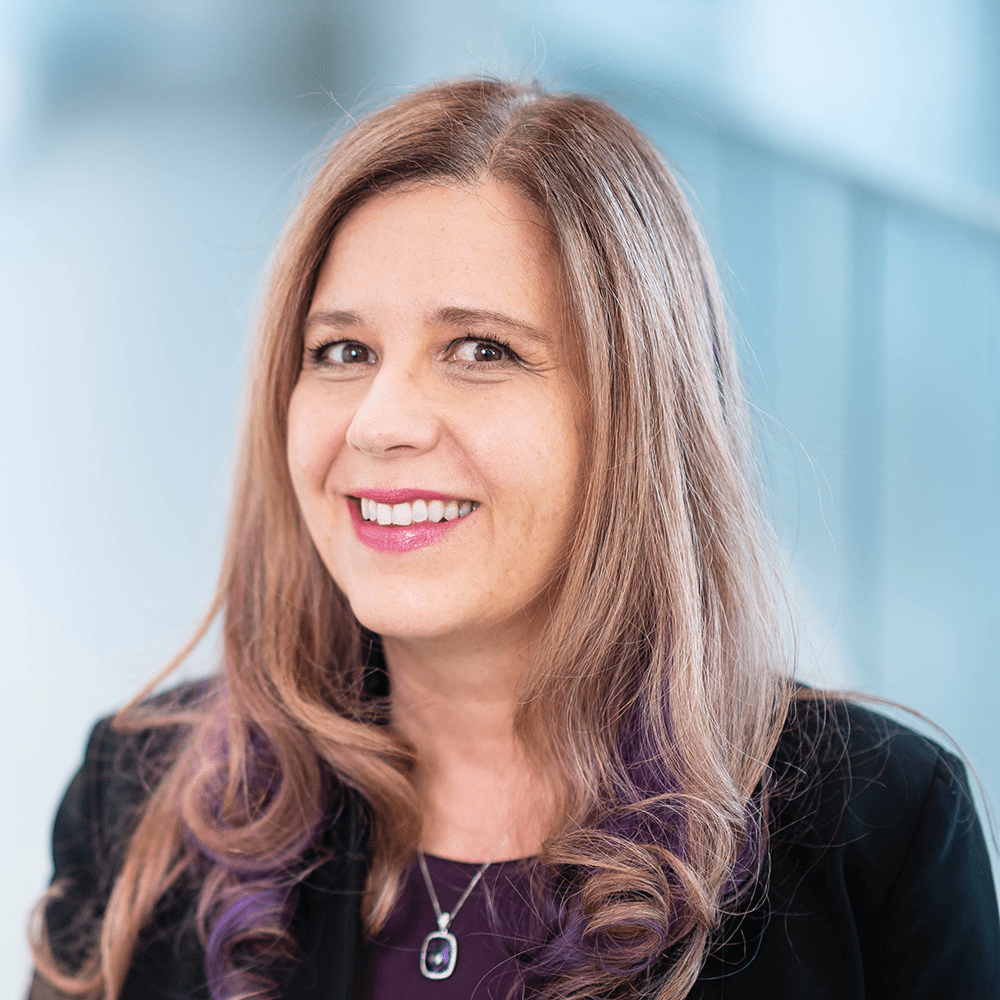
Liisa Galea
Dr. Liisa Galea is a scientific lead for the CAMH (the Centre for Addiction and Mental Health) program womenmind™. It’s a community of philanthropists, thought leaders and scientists dedicated to tackling gender disparities in science, and to put the unique needs and experiences of women at the forefront of mental health research.
Visit our 2025 Psychology Month page as we add spotlights throughout February.

Liisa Galea
Dr. Liisa Galea is a scientific lead for the CAMH (the Centre for Addiction and Mental Health) program womenmind™. It’s a community of philanthropists, thought leaders and scientists dedicated to tackling gender disparities in science, and to put the unique needs and experiences of women at the forefront of mental health research.
Womenmind™ Liisa Galea
“You know how to *take* the reservation, you just don't know how to *hold* the reservation. And that's really the most important part of the reservation: the *holding*.”
- Seinfeld, ‘The Alternate Side’, 1991
The National Institute of Health (NIH) in the US introduced a policy* in 1993 where applications for research that plans to involve human subjects for clinical trials must address the inclusion of women, minorities, and children in the proposed research. As a result, the scientists applying for research grants did exactly that. They included women, minorities, and children in their studies. But to what end?
It’s easy to include women, minorities, gender diverse people, but if you don’t look to see if it’s affecting outcomes for those individuals differently, then you’re doing only half of the work – and missing the part that makes inclusion important. But precious little research, since the introduction of that policy, has made that distinction.
*It should be noted that it is quite difficult, at the moment, to ascertain exactly when the NIH instituted that policy, or what the outcomes have been, since the new American presidential administration has scrubbed their websites and resources of any language involving “minorities”, “disparity”, “bias”, and even “women”.
Dr. Liisa Galea leads the Women’s Health Research Cluster at the Centre for Addiction and Mental Health (CAMH) in Toronto. She is the principal editor of Frontiers in Neuroendocrinology, the Past President of the Organization for the Study of Sex Differences and co-Vice-President of the Canadian Organization for Gender and Sex Research. She is also the scientific lead for the CAMH initiative womenmind™ and a Seinfeld fan.
“I grew up in a time when I had to wear a skirt in school because I was a girl. I’m so grateful to my parents for saying I was smart and could do anything I wanted to do…except perhaps become Pope! I was told I was different because I was a girl, but it didn’t upset me – it just made me curious as to why people thought that. When I started university, I got really interested in the area of female brains vs male brains and I wanted to know all about the differences and what that might mean for our health.”
womenmind™ is a community of philanthropists, thought leaders and scientists dedicated to tackling gender disparities in science, and to put the unique needs and experiences of women at the forefront of mental health research. Dr. Galea and Dr. Daisy Singla, a clinical psychologist who specializes in perinatal mental health, are womenmind™ scientists who do a lot of this important work.
The gender disparities in healthcare are real, and they are significant – particularly in the area of mental health. Diagnoses of mental health issues can take up to two years longer for women compared to men. There is a sense in the public sphere that men don’t talk about their feelings as much as women do, and are less likely to seek help with psychological issues. Despite this, just looking at mental health disorders, there is still a delay in diagnosis of more than two years for women. That delay can interfere with treatment plans – if you’re being misdiagnosed or dismissed with your symptoms you’re not getting the treatment you need, and we all know that earlier interventions lead to better outcomes.
A study done by the World Economic Forum showed that globally, women spend 25% more of their lives in poor health than men do. Dr. Galea thinks this is partly due to health science being historically dominated by men studying males.
“In terms of mental health specifically, there are many reasons for the delays in diagnosis, but one of the major reasons I think is because most of our medical knowledge – including the symptoms on checklists for diagnoses – are based on the experiences of men. So much so, that we often call symptoms for mental health disorders in females ‘atypical’. We use ‘atypical’ a lot in the context of neurodiversity – autism, ADHD, and so on. And there are more males diagnosed with those conditions. We see more females than males diagnosed with depression, but we also see that ‘atypical’ label applied to depression in women. If there are twice as many women diagnosed with depression as men, how are their symptoms ‘atypical’? I think it’s because our scales were developed a long time ago, thinking about findings in males and the experiences of men.”
As a result, healthcare providers don’t acquire enough knowledge about sex and gender disparities in disease presentation and symptoms. This has real consequences for women in the healthcare system, but also for funding bodies. As a researcher that’s been in this field for 28 years, Dr. Galea gets a lot of comments from editors and funding agencies that *this [female-centric subject]* isn’t a really important thing to study because it’s “only in a subset of the population”.
Dr. Galea and her team did a review, looking only at male/female studies in neuroscience and psychiatry. 68% of studies were using both male and female participants, but only 5% of those studies looked to see whether sex made a difference. As Dr. Galea says, “you can have 2 females and 8 males in your control group, but the reverse in the treatment group, and you can’t do the analysis properly because you don’t really have the sample size to see if it made a difference.”
27% of the studies were focused solely on males, and 3% solely on females. Dr. Galea’s team then looked at Canadian grants, which resulted in similar percentages. In 2023, mental health specifically for women made up less than 1% of the funding of the Canadian Institutes for Health Research (CIHR), the major federal agency responsible for funding health and medical research in Canada.
Funding for research is, sadly, a hot-button issue at the moment as the new American government tries to shut down funding at the NIH for everything they deem to be “woke”. This has impacted many of Dr. Galea’s colleagues and the work they do, especially since the cuts seem to have been attempted in the most damaging and misguided way possible. The new administration looked for the key words they didn’t like, and cut funding for everything that contained words like “bias” or “diversity” or “environmental”. They also targeted words like “trans”, “non-binary”, “female”, and “woman”.
This could result in the ending of studies into things like the gut microbiome, where one of the measures is alpha-diversity and beta-diversity – referring to the variety of bacteria that live in one’s gut. Electricity studies using vacuum tubes which require a current called “bias”. And studies involving women’s health. Dr. Galea says this is even more dangerous than it seems, because stopping the study of women’s health affects men as well. She gives an example,
“Lazaroids were a drug that was discovered for stroke recovery. It worked miracles for people who had suffered strokes. It was discovered pre-clinically first, where it worked on mice and rats, and then it went to double-blind randomized control clinical trials, our gold standard. It turns out most of the pre-clinical work was done in males. The early clinical trial was done all in men as well, since men are more likely to suffer a stroke earlier in life (but this switches to more women later on in life). It failed phase 3 clinical trials, which included women, and the drug is not on the market. It put the drug company out of business. But when people did secondary analyses, it turns out lazaroids work wonders in men – but not in women. In fact, in women it might have made things worse. But that’s a drug that’s now not on the market that might do wonders for men’s health! Isn’t it in our collective interest to find out what drugs work better in different populations?”
This upheaval could have devastating consequences for the future of women’s health, an area that has critical problems already. Consider menopause. This is something that will happen to 50% of the population. And yet, 0.5 % of all studies in neuroscience, and in the field of brain health in general, are on menopause. Physicians get about 1-3 hours of training on menopause and its effects on health.
When women go through menopause and have significant problems, they get sent to specialists – gynecologists. But – only 30% of American gynecological programs had anything about menopause in them. So well above half the time women get sent to see specialists for this, they’re going to see someone who hasn’t been trained in it, and may have learned very little about it. Says Dr. Galea,
“We have to become our own specialists, but we need informed research to know what we can do to offset our symptoms. Laura Gravelsin (one of my postdocs) and I just had a paper accepted called ‘One Size Does Not Fit All: Type of Menopause and Hormone Therapy Differentially Influence Brain Health’, because there are many hormone therapies and many menopauses, and we have to determine which one works for us individually.”
Not all scientists who study women’s issues are women, and not all women specialize in those issues. But having more girls going into scientific disciplines, and being supported along the way, can’t hurt. This is another of womenmind™’s goals. Dr. Galea points to the fact that there are more female psychologists, and physicians, than there are male. And yet, at the dean level, or director or supervisor level, the proportion of women steadily decreases the higher in rank you go, compared to men. She says,
“Girls are very interested in all scientific fields at a very early age, but as time goes on and we get further and further in our career, the disparity starts to grow. At the university level, you see more women and girls in the sciences, but the gap gets a little wider the further up you go, at the graduate level and then at the assistant professor level.”
With this in mind, womenmind™ has a robust mentorship program for all female and gender-diverse scientists that has seen remarkable results. About 60% of the female and gender-diverse scientists at CAMH have gone through the mentorship program, and there is a staggering 100% approval rate – every single person coming out of the mentorship program has said they would recommend it and they want it to continue.
And continue they will, with the passion and determination of the new scientists and the veterans like Dr. Galea. In addition to womenmind™, she runs her own lab investigating how hormones (mostly estrogens) influence the brain. They focus on stress-related psychiatric disorders like depression, and also Alzheimer's. Dr. Galea also runs the Women’s Health Research Cluster which in the realm of knowledge translation, and seems like a lot of fun! They just had an event in Toronto called ‘Galentine’s Day: Love your Brain’ which was about girls and women and anyone who identified as such loving their brains through hormonal changes like puberty and menopause.
The experiences of women and girls going through hormonal changes are varied and diverse. The path through adolescence, or menopause, is rarely a straight line. Nothing in life is a straight line! Even Dr. Galea’s journey to doing the work she does today (and Parks and Rec fandom) took numerous twists and turns. She says,
“I started in engineering first, and took Psychology 101 with Susan Lederman. She works in perception. She said ‘I’m the first Canadian, the first woman, and the first psychologist to be asked on a NASA panel’. She was there because astronauts were complaining they couldn’t feel anything through their gloves when they were out on a spacewalk. I was hooked. I thought, ‘that’s so interesting, I want to learn that’. It’s not at all what I ended up doing, but I took a lot more psychology as a result. I ended up studying women’s brains, and I’m always going to do it!”
Someone’s got to do it. And someone else entirely has to support them by making it a priority to ensure they continue to get to do it. With initiatives like womenmind™, the Women’s Health Research Cluster, and the research being done by Dr. Galea and her colleagues, the future of gender-inclusive health science looks promising. But if we want to make the most of that promise, the scientific community and policymakers must make it a priority to ensure this research continues.
Madeline Springle is a second-year Ph.D. student at the University of Calgary, who is winning awards for her ability to mobilize knowledge. Specifically, she is taking the research she has done into one-way video interviews, and using it to help people who might use this knowledge to better prepare for their own job search.
As we close out Psychology Month, we wanted to highlight knowledge translation (explaining the science for a more general audience) and knowledge mobilization (putting new findings into practice such that they help those they were designed to help) because without those, science exists in a vacuum!
Cette semaine, dans le cadre du Mois de la psychologie dont le thème, cette année, est « Les femmes et la science », nous présentons Sophie Bergeron, Ph. D., qui détient une Chaire de recherche du Canada sur les relations intimes et le bien-être sexuel au Département de psychologie de l’Université de Montréal, où elle dirige également le Centre de recherche interdisciplinaire sur les problèmes conjugaux et les agressions sexuelles (CRIPCAS), l’Équipe SCOUP Sexualité et Couple, et le Laboratoire d’étude de la santé sexuelle. Ses travaux portent sur les déterminants psychosociaux de la santé sexuelle des individus et des couples ainsi que sur le traitement des dysfonctions sexuelles.
There has always been a stereotype that women are “more emotional” than men, and even that they are “too emotional” for leadership roles. Dr. Winny Shen joins Mind Full to discuss the results of her study which suggest that not only is that stereotype untrue, the exact opposite might actually be the case.

Jessica Strong
We all plan to get older. So why do so few of us gravitate toward working with older adults? Dr. Jessica Strong is a Geropsychologist in the department of psychology at the University of PEI. She tells us about cognitive reserve, fights against ageism, and discusses how a passion for music led her toward her current career path.
“You see the hood's been good to me, ever since I was a lowercase g. But now I’m a Big G.”
- Montell Jordan
In his monster 1995 hit ‘This Is How We Do It’, Montell Jordan makes the distinction between a “lowercase g” and a “Big G”. In his case, he’s making reference to being a young child, understanding and evincing the gangsta part before he grew to adulthood and achieved proper, professional gangsta status by releasing a staggeringly popular debut single.
Like Montell Jordan, it was music that led Dr. Jessica Strong to her eventual career path, one where she too makes a distinction between lowercase gs and Big Gs. ‘Big Gs’ are the expert specialties, Geriatrics, Gerontology, Geropsychologists like Dr. Strong. ‘Lowercase g’ refers to the little competencies everyone needs to have. Social workers, family doctors, personal support workers at retirement residences, caregivers, or retail workers. Anyone who deals with an older population in their day-to-day lives. Says Dr. Strong,
“I have a lot of students who aren’t necessarily interested in Geropsychology (big G), but we work on developing this ‘lowercase g’ workforce, which is not working with older adults exclusively. They may be a generalist psychologist, but one who has the competency to work with older adults. They understand the cohort issues and generational differences, and know how to modify an intervention or screen for mild cognitive impairment.
I tell all our clinical students ‘you want to work in paediatrics, great! How many grandparents are raising children these days? For your paediatric client, if you’re noticing something off with their grandparent, you’re going to want to figure out whether this is anxiety and stress because they’re raising a nine-year-old, or could this be a mild cognitive impairment? And how am I going to figure that out in a way that serves the interests of my paediatric patient?’”
Dr. Strong is an assistant professor in the department of psychology at UPEI, and a registered clinical psychologist who specializes in Geropsychology. Geropsychology is a subsection of gerontology – the broad study of aging, lifespan, development and identity in late life. It’s a discipline that focuses on relationships, mental health, cognition and more generally the psychology of aging.
It was music that led her toward this career path, as she started playing piano at the age of 9 and soon picked up more instruments, playing alto sax in the high school marching band. It was in high school that she started thinking about music therapy as a career. But music therapy is a pretty specialized occupation, and Jessica is someone who likes to keep as many options open as possible.
In her final year of high school, right around the time we were all learning that “southcentral does it like nobody does”, she shadowed the music therapy program at her local university. She quickly realized that there was a way to get into this while keeping more doors open, and she ended up doing two simultaneous undergraduate degrees – one in music performance, and one in psychology. The idea was that from there she could get a Master’s in music therapy if she chose that path.
But psychology research really spoke to Jessica, who started to become far more interested in the mechanisms of why music makes a difference for people, rather than just using it as a tool. She had done a little bit of work with older adults at an occupational therapy lab at Washington University in St. Louis. Then she moved to Germany, where she worked at a mental health institute for older adults, the Central Institute for Mental Health in Mannheim. She had become a lowercase g.
Soon, she realized that what she really wanted to do was work with older adults. She had never heard the term “Geropsychology” before, but she lucked into a program at the University of Louisville in Kentucky, and was accepted into their Clinical Psychology program, working under the mentorship and supervision of two Geropsychologists. She earned her Ph.D., became a Big G, and says she has never looked back.
“One of the most rewarding things about working with older adults is that they are some of the more complex human beings in the world. They’re such a heterogeneous population because they have all of the demographic differences that any of the rest of us have – gender and race and so on – but they also have all their lived experiences and the changes that have come with those. Physiological aging, emotional aging, cognitive aging. It’s really intellectually stimulating and exciting for me because they’re so much more complex than any of the other groups I’ve worked with who haven’t done as many things.”
Soon, Dr. Strong was working in Boston at a rehab facility in the Veteran’s Health Administration. She studied how integrating music into a mental health group could destigmatize talking about mental health for older male veterans. They got some great feedback, the veterans felt like this group was different from others they’d been in before, and that the use of music made it easier for them to talk about things that both as men and as veterans they’d been conditioned to avoid. Music gave them a way to feel it without necessarily having to find the words.
One of the sessions Dr. Strong did with this group used “a bit of a music therapy technique”. They would start the group session by reading the lyrics to a song aloud, like a poem. They’d talk about the imagery, and what they thought the artist was trying to convey. Then they would listen to the song to see if it felt different than just reading through it. Did the addition of music take away from the message, or did it add something? The veterans in the group, men whose gender and military service compounded a reticence to speak vulnerably, went to deep places dissecting the music.
Dr. Strong says ‘What A Wonderful World’ was a group favourite. Given the age of the participants (some Vietnam veterans, others Korean War veterans, and some survivors of World War II) it makes sense that a song from the 60s resonated as much as it did. Music is often associated with memory and nostalgia, most particularly the music we heard around major life events in our adolescence and in early adulthood. Like a wedding song, a graduation song, or one you heard while you were heading off to war.
When similar sessions are held forty years from now, there’s a good chance a psychologist like Dr. Strong will be integrating much different music into this kind of group therapy. They will discuss what Mr. Jordan is trying to convey when he suggests we “flip the track, bring the old school back”. Dementia support groups that connect people through sing-a-long music will sound like one of those Pitch Perfect mashups. “I reach for my 40 and I turn it up / designated driver take the keys to my truck”.
Music not only triggers memories, it shapes our brains as we age. Dr. Strong is specifically interested in the brains of musicians, and the effect a lifetime of playing music has on the aging process. She talks about something called Cognitive Reserve. This is the idea that everything we do in our lives builds up a reserve in our brains. Dr. Strong describes it like a battery you can charge. Having a formal education, speaking a second or third language, having strong social connections, these are factors that charge our battery and make us more resilient against cognitive impairment later in life.
“If someone has a really high cognitive reserve, a scan of their brain might look awful, with disease, or vascular damage. But they might still function okay because they’ve built up this reserve over time that allows their brain to circumnavigate those damaged pathways. Someone with a lower cognitive reserve might have a brain that looks relatively okay on a brain scan, but they might be showing signs of mild or moderate dementia in their functioning.”
According to Dr. Strong’s studies, and similar studies by her peers, musicians tend to do better in some things as they get older, like in executive functioning and language, but not in all areas. One of the areas where they don’t tend to do better than non-musicians is in memory. Some have suggested that the tests for memory are flawed, and this may be the reason we don’t see a correlation between that and musicianship. When Dr. Strong takes a sabbatical next year, this is one of the things she’s hoping to learn from a longitudinal data set she has collected. But she has learned a lot already from her research up to this point.
“I’ve compared people who retired from playing versus those who continued to play. That was an interesting study, where I found that people who stopped playing lost the benefit they had in some of the more fluid abilities like executive functioning, but maintained the benefits they got in crystallized abilities, things like language. People who continued to play continue to have both benefits.”
There are many challenges to working with older populations, in particular defining what those populations are. The general (Dr. Strong says arbitrary) line at which Geropsychologists and Gerontologists start looking at people as “older” is the age of 65. But they’re also working with people who are much older than that.
“What gets complicated about using 65 as the arbitrary cutoff is that you’re still including people who are 80, 90, even over 100. There are people over 100 participating in research, and you get into this really interesting scientific conundrum of having people who span 30 or 40 years in a scientific sample. Which is absurd – never would we put 10-year-olds and 50-year-olds in the same sample, and this is somewhat of the same construct.
So this is a problem when we work with older adults, and a lot of Gerontology and Geropsychology splits those groups up into the ‘young old’ (65-74), ‘old old’ (75-84) and ‘oldest old’ (85 and up), trying to get a little more nuanced perspective. These people grew up in completely different ways and in completely different cohorts. And a 65-year-old shouldn’t and wouldn’t be expected to be in the same life place as a 95-year-old.
It's a lot easier to get access to research participants who are in that young-old group, so they tend to be overrepresented in research. It’s a lot harder to get a representative sample for the older groups.“
Another challenge is ageism. This is something that matters a great deal to Dr. Strong, and she gets impassioned when she talks about the ways we neglect our older population. Age is a diversity factor that is often overlooked, and Geropsychologists are constantly reminding their organizations, and anyone who will listen, that age must be thought of and included as a diversity factor. Not valuing older adults, the negative attitudes we have about getting old, looking old, and acting old, create real-world harms. Dr. Strong says these are some of the reasons we have a lack of action in overhauling Canada’s long-term care system.
“We know what works in long-term care, it’s just a matter of putting it in place. It wasn’t necessarily intended to be this medical-type institutional facility. People don’t want move there because it signals the beginning of the end, and they think that because of how those facilities work. They’re understaffed, underprioritized. Some of the most amazing models of long-term and dementia care are in Scandinavia. There are enclosed ‘dementia villages’ where people live in their apartments, but they can go shopping and go wander in the park. The person cutting the grass is a trained dementia nurse, as is the barista at the coffee shop. But many of us don’t see older adults, and particularly older adults with dementia, as important enough to care.”
We’re all going to get older. As Dr. Strong tells her students, “if you’re not aging you’re dead – we are privileged to grow older”. So why are there difficulties in recruiting young people, and students in particular, to work with older populations? Ageism, like negative attitudes or death anxiety, are big factors. So is exposure. Young people who have grown up around older adults, or who have teachers or parents who work with older populations, tend to be a lot more receptive.
“I attribute a lot of my interest in aging to my great-aunt Lila. My mom was her primary caregiver when I was growing up, so she spent a lot of time at our house and I spent a lot of time with her. I found her to be fascinating. She wore a wig and I saw her without a wig which was fascinating when I was nine. She told me stories about having a pet rat when she was my age and it was amazing to think about her having ever been my age. I had good relationships with my grandmothers and I had older adults in my life a lot when I was growing up.”
Geropsychology, as a relatively new field, is an exciting one. There is an enormous breadth of research that has yet to be done, and there are countless opportunities to work with people whose life experiences, wisdom, and stories are both fascinating and instructional. They represent a living history of a time the rest of us did not experience, and have lived lives we can’t imagine. Dr. Strong says it’s impossible to overestimate how rewarding this work can be.
“This is a group that has been marginalized, that doesn’t have much of a voice, and when you take the time to interact with them they are so grateful. They have so much wisdom and so many experiences that I can’t help but learn from them. They’ve lived in times and done things that will never be available to me.
The community of Geropsychology and gerontology is such a welcoming one, because we want people to work with older adults. And because the people who end up in that field are warm and welcoming by nature. It’s just a wonderful professional home.”
We need the Big G experts to learn more about aging and about creating a welcoming, flourishing, and healthy society for people as they get older. We also need everyone else to develop lowercase g competencies, so we too can be part of the solution. As each of us gets older, we will want the world around us to change so that we can continue to build community and live meaningful, impactful lives for as long as we are around. This is how we do it.
Research papers:
Mental health and music group development and evaluation (with manual published in the appendices)
Two articles on cognition in older adult musicians
- https://www.sciencedirect.com/science/article/abs/pii/S0278262622000410
- https://journals.sagepub.com/doi/abs/10.1177/0305735618785020
And one recent on attitudes towards older adults
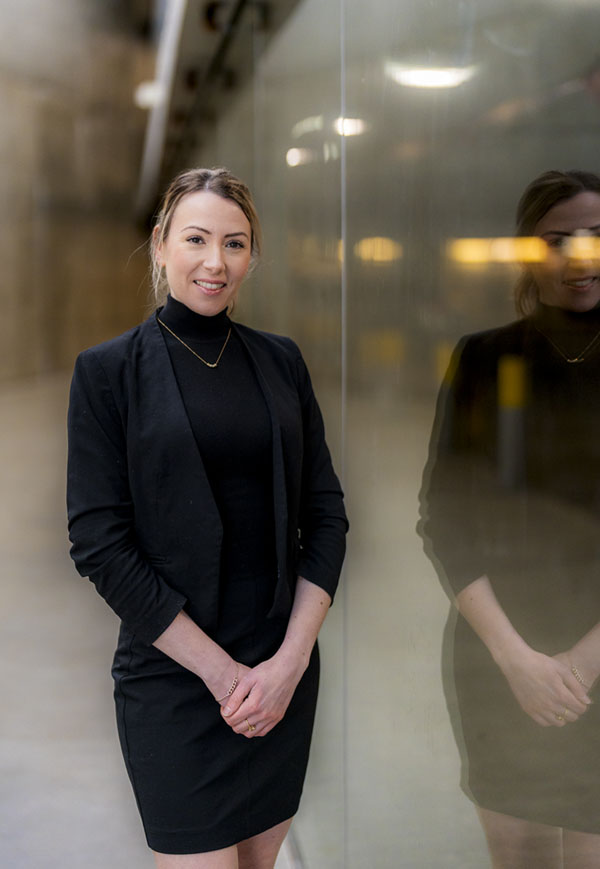
Laura Thomas-photo by Erik McRitchie
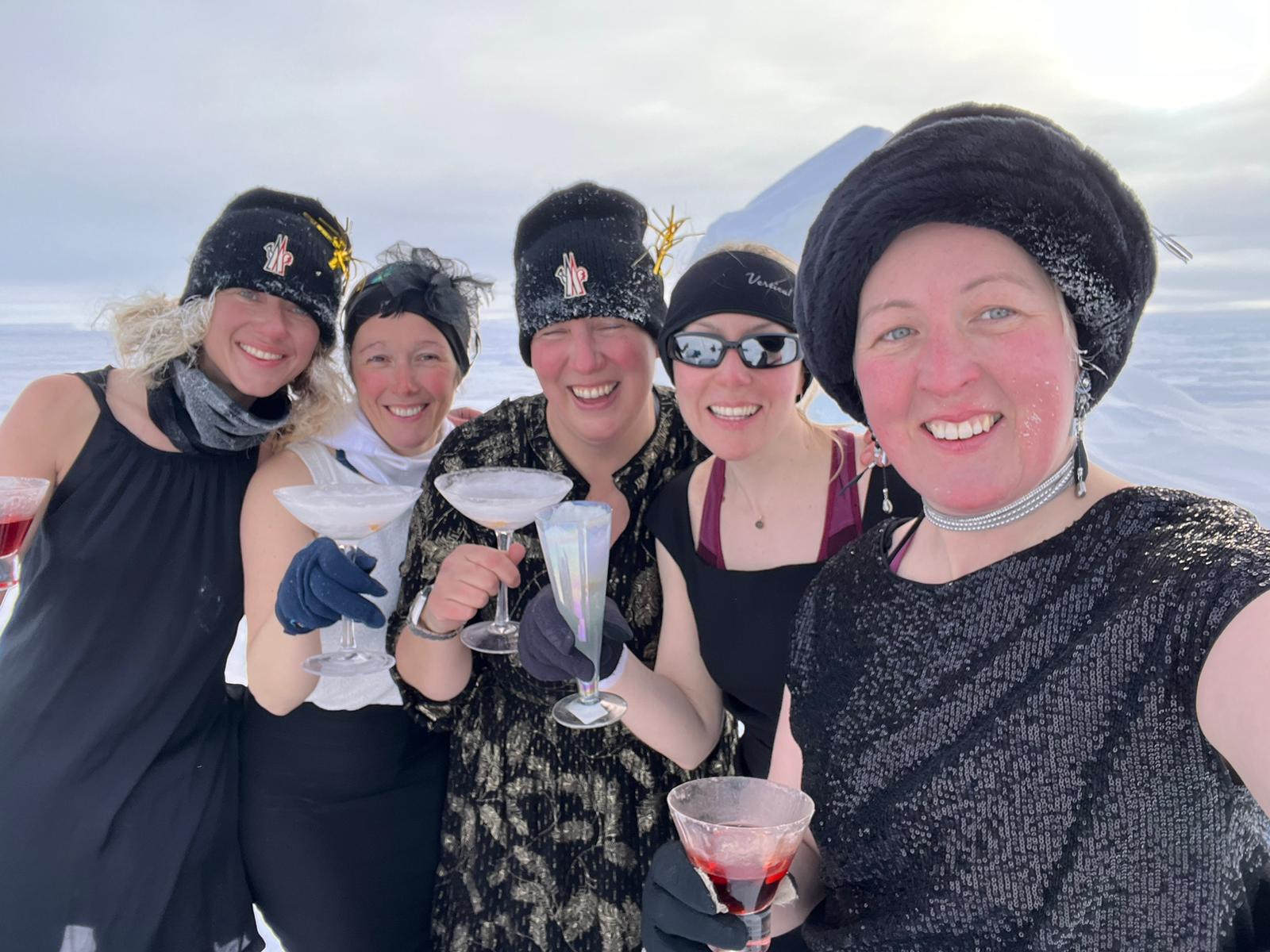
B.I.G. at the North Pole photo by Edel Kieran
Training astronauts for space flight requires a huge team, including psychologists who can help to prepare them for the close quarters and isolation for long periods of time. Laura Thomas is not only one of those psychologists, she has also experienced similar close quarters and isolation with all-female expeditions to places like the North Pole.
We kick off 2025’s Psychology Month: Women in Science with a look at Laura’s work, her travels, and the requirements for setting a Guinness World Record!
I am often in awe of the people I interview, many of whom are remarkably accomplished and doing work that matters to the world. At times, I’m even a little bit envious, in that I would love to have been a part of some of those projects. I confided as much in Laura Thomas toward the end of our Zoom meeting, but told her she is an exception. Not that I’m not in awe of everything she does – I certainly am. But I am not the least bit envious. I would love to have been a part of the World’s Most Northerly Cocktail Party (scroll down for canapé recipe). But very few forces on Earth could have convinced me to be part of the intrepid group that skied, camped, and braved the shifting ice of the North Pole for days in order to get there.
Laura Thomas, on the other hand, couldn’t wait. In 2016, she was a counseling psychologist in the UK and an afficionado of adventure tourism. She began to take an interest in extreme environments, and attended a lecture by British explorer Felicity Aston, MBE. They chatted, and before long Laura was joining her on a trekking trip to Ethiopia. A few years later, she was headed to the North Pole, living in Calgary, and going in a whole new direction with her career.
Trekking to the North Pole seems like a long way to go…because it is. Consider this – the distance to the current magnetic North Pole from Alert, Nunavut, the northernmost inhabited place on Earth, is a little over 800 km. The distance from the Earth to the International Space Station is only 400 km.
Do you ever look up at the ISS as it passes over us, and wonder what the astronauts are doing? Some kind of science, one assumes, and lots of freeze-dried cuisine? Some kind of exercise that looks like that scene in 2001: A Space Odyssey? As Canadians, we know that some of them practice David Bowie tunes on guitars, since there’s no way Chris Hadfield was able to do that performance without practice.
Laura knows what the astronauts are doing. Or, at least, what they could do. And how they can do it, what with the long months of isolation, the forced intimacy of close quarters, and the physical changes one undergoes while in those conditions. Laura studies people, and their behaviour, in extreme isolation.
Laura is the co-founder of PARSEC Space, a new company that exists to train commercial space operators. She works alongside scientists, pilots, and engineers from the likes of NASA, ESA, and the military to select, train, and develop the next generation of astronauts. These will not necessarily be space travelers who will be going to the ISS. There are many other plans for space exploration. Says Laura,
“Rather than space tourism, per se, we’re focused more on research and payload specialists. People who are going to go up and offer their expertise for various projects and research that’s being done in space. The thing about government agency astronauts is that it takes a huge amount of time and money to train them. And they’re generalists. They’re not necessarily the experts in the kinds of technology they’re trialing or the experiments they’re running up there. In the future there will be a lot more space research.”
Pharmaceutical companies, for example, want to test new medications in space. Things act differently in space because of the conditions. In microgravity, bacteria grows differently. There could be a lot of benefits from observing how things grow in the absence of gravity. Manufacturing companies are also leaning toward testing their products and systems in space. NASA is looking to build a permanent base on the moon, which would undoubtedly include a significant research facility.
When that happens, PARSEC will be there to train the astronauts who will go there, and Laura will be assessing the mental fitness of participants and training them to handle the rigours of space travel.
“The qualities that are desirable in an astronaut have changed a little over the years. We call it the ‘new right stuff’. Previously, missions were relatively short, so you needed people with the technical skills to get the job done. But if you’re looking at people surviving and thriving in space over the longer term, with that level of extreme isolation and confinement, you need to look at how people cope. Their innate resilience, their capacity to cope with different types of stressors, how well they get on with other people, how well they function within a team. The so-called softer side, the personality-related traits, become much more important.”
Laura can’t just go up to space to watch people and guide them in that exact environment, at least not yet, so analogue environments on Earth (those with the most similarities to conditions in space) will have to do. Subterranean cave systems, remote jungles and mountains, and of course polar regions. Laura, for example, was the crew psychological officer on one such “analogue” in the Mojave Desert where they were isolated for ten days.
“It was really interesting, we were in this habitat, which was a series of pods, basically. Eight women by ourselves, isolated in the Mojave and living like astronauts. We had a medical officer, an engineering officer, a crew commander. Our daily routine involved exercises and activities that we would need to do as astronauts.”
While there, Laura observed and assisted her crewmates to ensure everyone was coping well, identifying the best interventions and adaptations in that setting. It was the first ever analogue that was all-female, attracting scientists from all over the world. There were crew members from Jordan, New Zealand, the U.S. and elsewhere. It enabled Laura to further her research into salutogenesis in analogue environments. Salutogenesis refers to a focus on the factors that promote health, well-being, and positive outcomes for people.
A lot of people have very positive experiences in these kind of environments. Often, astronauts who go into space can look back on the Earth through the Cupola windows, which can create a profound feeling of transcendence. They come back to Earth with a different sense of the planet’s beauty and it’s fragility and develop more compassion for humanity. This is called the ‘overview effect’, and it lasts much longer than just the moment an astronaut looks out the window of a spacecraft. States of extreme awe and transcendence have also been seen in terrestrial-based analogues.
“You can see from a distance that the Earth is all landmass and water. We can’t tell where the border to one country begins and another ends. It gives you a real conviction that we’re all part of the same thing.”
There have also been reports of increases in feelings of personal strength, better stress resilience, and long-term physical health outcomes. Sometimes, the more stressful the situation is for the participants, the more profound the changes to their psyche. Laura says it’s almost like there’s a threshold of stress that must be met for the more positive benefits to take effect.
It’s hard to imagine an expedition more stressful than one to the North Pole. In 2024, Laura and her fellow explorers, all women, set out to take ice, snow and water samples at the 1996 position of the magnetic North Pole. The B.I.G. (Before It’s Gone) expedition had been planned since 2020, but delays caused by COVID and the Russian invasion of Ukraine meant that some team members had to drop out and Laura could step in.
Their team, led by British explorer Felicity Aston, MBE, trained in cross-country skiing in Norway and Iceland for weeks. Then they flew into Iqaluit, then to Resolute Bay, then to Isachsen – an abandoned weather station from the 70s which was the closest landing strip to the magnetic pole. Each of those plane flights was delayed by severe weather, which truncated the time they had to set off. On skis, pulling their equipment in their sleds, they headed toward the pole.

There were more delays along the way. Terrible weather had them stuck in their tents for almost three days. Despite being physically exhausted and seriously dehydrated, they had to push forward anyway to get ahead of an incoming storm. The team was always on lookout, for both shifting ice and polar bears. Says Laura,
“It’s an experience, but it’s hard. Being in those environments, anyone will tell you it’s hard. You need to have the right gear, but even then it’s brutal. You’re basically out there where everything’s trying to kill you. The cold, the sea ice, and even polar bears. When we got to Resolute Bay, the locals told us it was polar bear mating season and we’d definitely have an encounter with them.”
Along the way, the team collected data. They showed that all kinds of different microplastics have made their way into the North Pole ice, as have heavy metals like lead, and, importantly, black carbon. Black carbon is what is produced when we drive cars, run industrial plants, and experience wildfires. Its presence in the arctic ice is quite serious – the small black particulates make the ice melt faster than it already is, and this speeds up the effects of climate change.
Laura gathered data as well, for her salutogenesis project as she learned even more about how people respond when pushed to such extremes. Sadly, they didn’t quite make it to the magnetic north pole, thanks to the weather delays and shortened time frame for the trip. But they did stop to set a Guinness world record!
World records, at least as adjudicated by Guinness, are kind of a funny process. You have to contact them directly ahead of time, laying out your intention to break some previous world record, or create a new one (hi Guinness, it’s me! I plan to make the world’s largest Build-A-Bear, would that qualify for inclusion?) Then they have specific criteria that must be met in order for you to lay claim to that record.
And so it was that the B.I.G. team, in addition to their scientific equipment and survival gear, carried cocktail glasses, cocktail dresses, and a device to play music all the way to the North Pole with them. One of the trip’s sponsors was an alcoholic beverage company (Axia Spirit), and this was a tip-of-the-hat to them. But according to Guinness, it is not a cocktail party without tunes, a table, cocktail attire, and canapés.
An adventurous spirit, a quest for knowledge and experience, and a determined toughness made Laura Thomas an ideal candidate for a skiing trip to the North Pole. A dedication to comfort, a lack of physical fitness, and a penchant for variety in my cuisine made me the ideal person to sit at home and write about it. And it’s fun to write about a “space psychologist”. Several years ago, there might have been a handful of those on Earth. Now, as space is opening up, so are the opportunities for a vast array of experts to ensure the safety and effectiveness of this new enterprise.
Laura’s training as a psychologist and passion for research have served her well here on Earth. She is working on projects that shed light on some of the world’s most serious problems. And it is those qualities and qualifications that will serve the next generation of explorers. The ones who will head into the most unexplored regions of our world – those beyond our world. They will be in a position to succeed, thanks to a dedicated team of experts to help them with their work, and Laura to help them with their minds. Who better than someone with her kind of experience to accomplish B.I.G. things?
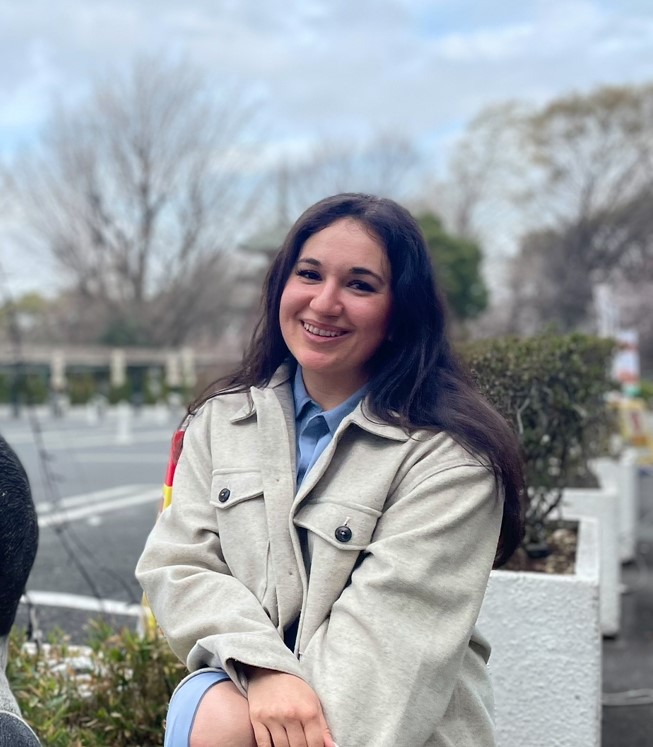
Maureen Plante was the recipient of a 2024 CPA Indigenous Psychology Student Award for her work at the University of Calgary studying disrupted orders of eating from an Indigenous perspective.
Maureen Plante est Iroquoise-Crie-Métisse du côté de son père, tandis que sa mère est d’origine allemande. Ayant souffert d’un trouble de l’alimentation à l’adolescence, elle a été amenée à faire une recherche de maîtrise à l’Université de Calgary, qui portait sur les troubles de l’alimentation dans une perspective autochtone. Elle a grandi en s’identifiant avant tout comme Crie, une communauté autochtone qui se souvient encore de l’époque où les bisons parcouraient les plaines canadiennes en vastes troupeaux quasi infinis.
L’éradication des bisons des plaines occidentales de l’Amérique du Nord au cours des 18e et 19e siècles est une illustration frappante du conflit entre les traditions autochtones et la philosophie coloniale européenne. À la fin des années 1700, on estimait à 30 millions le nombre de bisons vivant dans les grandes plaines nord-américaines.
Jusqu’à cette époque, les peuples autochtones de l’Ouest canadien vivaient aux côtés des bisons, qu’ils chassaient pour leurs fourrures et leur viande. La terre était un partenaire partagé qui assurait la subsistance de la population. Lorsque les colons sont arrivés, ils ont introduit une mentalité différente, celle de l’exploitation des ressources et du capitalisme. L’abondance de bisons des plaines et de bisons des bois permettait de réaliser d’énormes bénéfices sans grand effort, et la chasse a commencé sérieusement.
Pour les populations autochtones, cela signifiait qu’elles devaient elles-mêmes s’adapter à la nouvelle réalité. Elles devaient désormais entrer en concurrence avec les chasseurs blancs pour le moindre animal et étaient contraints, pour survivre, de passer d’une relation de coopération à une relation d’exploitation des ressources. Beaucoup sont devenus des chasseurs de bisons nomades, vendant des peaux et d’autres objets en échange des nécessités de l’existence. La nourriture n’était plus une partie évidente et intégrante de la vie, comme l’air et l’eau, mais une marchandise.
Il serait exagéré d’établir un lien direct entre l’éradication du bison et les troubles de l’alimentation qu’a connus Maureen Plante quelque 200 ans plus tard. Mais en même temps, il ne faut pas négliger ce lien. Ces dernières années, les traumatismes historiques ont fait couler beaucoup d’encre, notamment en ce qui concerne les souffrances subies au fil des siècles par les peuples autochtones du Canada. Mais nous commençons à peine à effleurer la surface de ce que cela signifie vraiment, et la façon dont les traumatismes historiques nourrissent les problèmes que nous observons aujourd’hui.
Maureen a grandi dans une très petite collectivité située à l’extérieur d’Edmonton, où l’accès aux services était très limité. Lorsqu’elle a développé un trouble de l’alimentation à l’adolescence, il y avait très peu de ressources dans sa région immédiate, et même dans les centres urbains voisins, il n’y avait guère de soutien centré sur les Autochtones. À l’âge de 16 ans, Maureen s’est juré d’aider d’autres personnes qui avaient le même type de comportements alimentaires perturbés, et elle n’a jamais cessé de poursuivre cet objectif depuis.
Elle a obtenu son baccalauréat avec spécialisation en psychologie à l’Université MacEwan d’Edmonton, sa maîtrise à l’Université de Calgary et elle prépare actuellement un doctorat en psychologie du counseling à l’Université de l’Alberta. Au cours de cette période, elle a travaillé au Eating Disorder Support Network of Alberta de différentes manières, notamment comme bénévole. Bien que Maureen ait toujours parlé ouvertement et avec vigueur des comportements alimentaires perturbés, ce n’est que lorsqu’elle a obtenu sa maîtrise qu’elle a pu commencer à explorer les points de vue autochtones dans le cadre de son travail.
À cette fin, Maureen a travaillé avec des femmes autochtones – thérapeutes, psychologues, travailleuses sociales – qui proposaient des thérapies fondées sur le modèle IFOT. L’Indigenous Focusing-Oriented Therapy (thérapie autochtone axée sur l’individu) est une modalité thérapeutique historiquement pertinente et adaptée, qui adopte une approche de la guérison basée sur les forces. Elle correspond à ce que font les chercheurs et les praticiens autochtones lorsqu’ils travaillent avec des Autochtones. La « grand-mère de l’IFOT », Shirley Turcotte, a travaillé avec Eugene Gendlin, créateur de la FOT, pour créer cette approche, estimant que les points de vue autochtones étaient négligés, en particulier la relation que nous entretenons avec nos ancêtres et toutes nos relations.
Maureen, qui prépare actuellement son doctorat, a déjà reçu le Prix pour les étudiants autochtones 2023 de la SCP pour le travail qu’elle accomplit et qui cherche à approfondir tout ce qu’elle a fait jusqu’à présent.
« J’ai entendu les praticiens qui dispensent l’IFOT, je veux entendre dorénavant les Autochtones. Certaines femmes vivant dans des centres urbains m’ont raconté qu’elles avaient vécu des perturbations des comportements alimentaires et qu’elles s’étaient parfois rendues à l’hôpital pour y recevoir des soins. Cela ne les avait pas aidées. Je souhaite également comprendre le rôle que jouent les traumatismes historiques dans le développement de comportements alimentaires perturbés chez les Autochtones, car j’ai l’impression que cet aspect a été négligé.
Les troupeaux de bisons n’ont jamais été près de se reconstituer complètement, et on estime aujourd’hui à 20 000 le nombre de bisons sauvages vivant en Amérique du Nord, soit 0,0007 % de ce qu’il était il y a 200 ans. Pendant ce temps, les communautés autochtones qui pratiquaient l’agriculture depuis des centaines d’années ont dû modifier leurs pratiques, car l’accent était mis désormais sur les monocultures.
Autrefois, les arêtes des poissons de la rivière fertilisaient les haricots qui fournissaient de l’azote au maïs. Les gens se nourrissaient de poissons, de haricots, de maïs et de courges qui étaient cultivées autour des cultures pour les protéger des animaux affamés. Lorsque le gouvernement canadien a commencé à construire un chemin de fer à travers le pays, la marchandisation de l’agriculture a été l’un des moyens qu’il a utilisés pour priver les populations autochtones de leurs droits. Dans cette région, on cultivait désormais de l’orge, et uniquement de l’orge. Dans cette autre région, c’était du lin, dans la région voisine, c’était du canola, tout cela dans le but d’expédier et de vendre le produit.
Les communautés autochtones agraires ont dû soit modifier leurs pratiques pour participer à ce nouveau paradigme, soit se déplacer vers des zones moins fertiles pour essayer de pratiquer une agriculture de subsistance, en espérant pouvoir cultiver suffisamment pour faire vivre leurs familles d’un hiver rigoureux à l’autre. Toutes n’ont pas pu le faire.
L’une des notions centrales de l’IFOT c’est qu’en se concentrant sur soi-même, on peut trouver son propre « remède », c’est-à-dire ce qui fonctionnera pour soi pour traiter ses problèmes de santé mentale. Lorsque Maureen a fait sa maîtrise, elle a été initiée à cette pratique. Pour elle, cela a fait remonter beaucoup d’herbe et de blé, et elle a découvert que le blé était son remède. C’était une prise de conscience étrange, car son trouble de l’alimentation faisait que son cerveau lui disait que le blé était mauvais. Cette révélation a changé son point de vue sur sa relation avec la nourriture et l’a éclairée sur le croisement entre l’identité autochtone et les comportements alimentaires perturbés.
« L’une des choses les plus importantes qui ont été partagées par les aînés et les porteurs de connaissances est la suivante : “Le DSM-5 [Manuel diagnostique et statistique des troubles mentaux, la classification standard des troubles mentaux utilisée par les professionnels de la santé mentale] est basé sur des catégories dans lesquelles on retrouve différents types de troubles du comportement alimentaire (anorexie, boulimie, etc.).” Les gardiens du savoir autochtone affirment que ce type de pensée eurocentrique rompt l’interconnexion. Ma recherche de maîtrise soulignait vraiment l’interconnexion et l’enracinement dans le contexte du colonialisme. Depuis le contact avec les Européens et tout au long de l’histoire, l’accès des peuples autochtones aux aliments traditionnels et aux droits de chasse, entre autres, a été très controversé. Beaucoup de choses se sont passées ici, qui ont modifié notre relation avec la nourriture et notre lien avec la terre. Comme la Loi sur les Indiens, des lois qui ont des répercussions sur notre relation. Un aspect sur lequel j’ai vraiment insisté dans ma recherche de maîtrise était la nécessité de commencer à changer notre relation avec le terme « troubles de l’alimentation » afin de ne pas les pathologiser, mais plutôt de les situer dans le contexte du colonialisme ».
Dans le cas des comportements alimentaires perturbés, le poids, la forme du corps et l’idéalisation de la minceur sont des préoccupations très présentes, du moins, en Amérique du Nord où le DSM-5 est le plus utilisé. Maureen est curieuse de savoir si cette idéalisation de la minceur est un phénomène qui touche toutes les cultures. Il est difficile d’obtenir des données sur les taux de comportements alimentaires perturbés chez les Autochtones et sur la répartition entre zones rurales et urbaines, car la plupart de ces données proviennent des programmes de traitement, auxquels très peu d’Autochtones sont inscrits. Certains chercheurs non autochtones affirment qu’il faut que les Autochtones s’expriment davantage sur le sujet.
« Beaucoup d’articles que j’ai trouvés parlent encore du DSM-5, du taux de prévalence, etc. La dimension narrative fait défaut, et nous ignorons un grand nombre de choses, ce qui, je le crains, nous amène par inadvertance à mettre des étiquettes sur les Autochtones (ou même sur les non-Autochtones). »
Maureen est en passe de devenir une voix autochtone forte sur le thème de la perturbation des comportements alimentaires. Son histoire se nourrit de son expérience personnelle, mais aussi de la décimation de la population de bisons, du passage à l’agriculture de subsistance, de la famine qui régnait dans les pensionnats et de toutes les autres indignités qui ont bouleversé la relation des peuples autochtones avec la terre et leur nourriture. Son avenir se nourrit de cette histoire, mais aussi de l’IFOT, du DSM-5 et d’un parcours universitaire remarquable et primé dans certains des meilleurs établissements d’enseignement supérieur de l’Alberta. Nous sommes impatients de découvrir les enseignements précieux que cet avenir radieux nous apportera!
Questions pour faire connaissance
Avez-vous un livre préféré?Je crois que oui… Les Méditations de Marc Aurèle. Il y a quelque chose dans ce livre qui fait vraiment réfléchir, qui est philosophique et qui donne de bonnes leçons de vie. Je suis quelqu’un sur les médias sociaux qui en parle beaucoup, et cela m’a donné envie de m’y plonger. Je l’ai lu entre ma maîtrise et mon doctorat, et je me concentrais vraiment sur la psychologie. J’ai trouvé que la TCC comportait un élément de questionnement socratique, et ce livre semblait intéressant à lire dans cette perspective. Lors du congrès de la SCP de 2022, j’ai assisté à une présentation donnée par deux messieurs sur le stoïcisme et la TCC, qui m’a fait penser aux Méditations et m’a donné l’impression d’une certaine convergence de vues avec les miennes!
Si vous pouviez être une experte dans un autre domaine que la psychologie, quel serait-il?
Quand j’étais plus jeune, je voulais devenir biologiste marine. J’aime les animaux, et je suis folle des raies. Récemment, j’ai beaucoup lu sur le comportement des loutres. Je sais que des recherches sont en cours sur les loutres et que les chercheurs travaillent avec les communautés autochtones pour savoir comment favoriser les relations entre humains et loutres.
J’ai lu une étude sur les loutres et les dauphins, car les loutres et les dauphins peuvent tous deux utiliser des outils, mais les loutres ont précédé les dauphins en ce qui concerne l’utilisation d’outils.
Avez-vous un sport préféré?
Non, pas vraiment, mais j’ai commencé récemment à regarder le hockey avec mon copain. J’aime aller au centre d’entraînement physique et être active, alors je fais de la musculation et d’autres choses de ce genre.
Si vous pouviez passer une journée dans la tête de quelqu’un d’autre, ce serait qui?
Je pense que c’est parce que je suis à ce stade de ma vie, mais je dirais mon conjoint. C’est un charpentier certifié Sceau rouge et son travail est complètement différent du mien. Il travaille de ses mains, c’est un as des mathématiques, et il est capable de visualiser un espace et de savoir comment y configurer les choses. C’est un travail difficile, et j’aimerais vraiment passer une journée dans son cerveau pour comprendre son univers et sa façon de voir les choses. J’admire les gens de métier, qui font des tas de choses extraordinaires, et je reconnais que je ne suis pas très douée pour tout ça! En outre, en tant qu’êtres humains, nous ne savons pas vraiment comment nous sommes reçus par les autres!
Quel est le concept psychologique qui vous a le plus surprise lorsque vous en avez entendu parler pour la première fois?
J’ai fait un baccalauréat en psychologie sociale, et j’aime encore beaucoup cette discipline. Je pense à l’étude de la prison de Stanford, l’expérience de Asch, qui font ressortir, en quelque sorte, le côté sombre de l’expérience humaine, et je trouve tout cela vraiment fascinant. Aussi, tout ce qui a trait à la personnalité me fascine, comme le modèle de personnalité à cinq facteurs. En ce moment, je lis des travaux de chercheurs qui parlent de cela dans le contexte du travail, des études, etc.
Si vous ne pouviez écouter qu’un seul musicien ou chanteur jusqu’à la fin de votre vie, ce serait qui?
J’aime beaucoup la musique classique, alors je répondrai Bach.
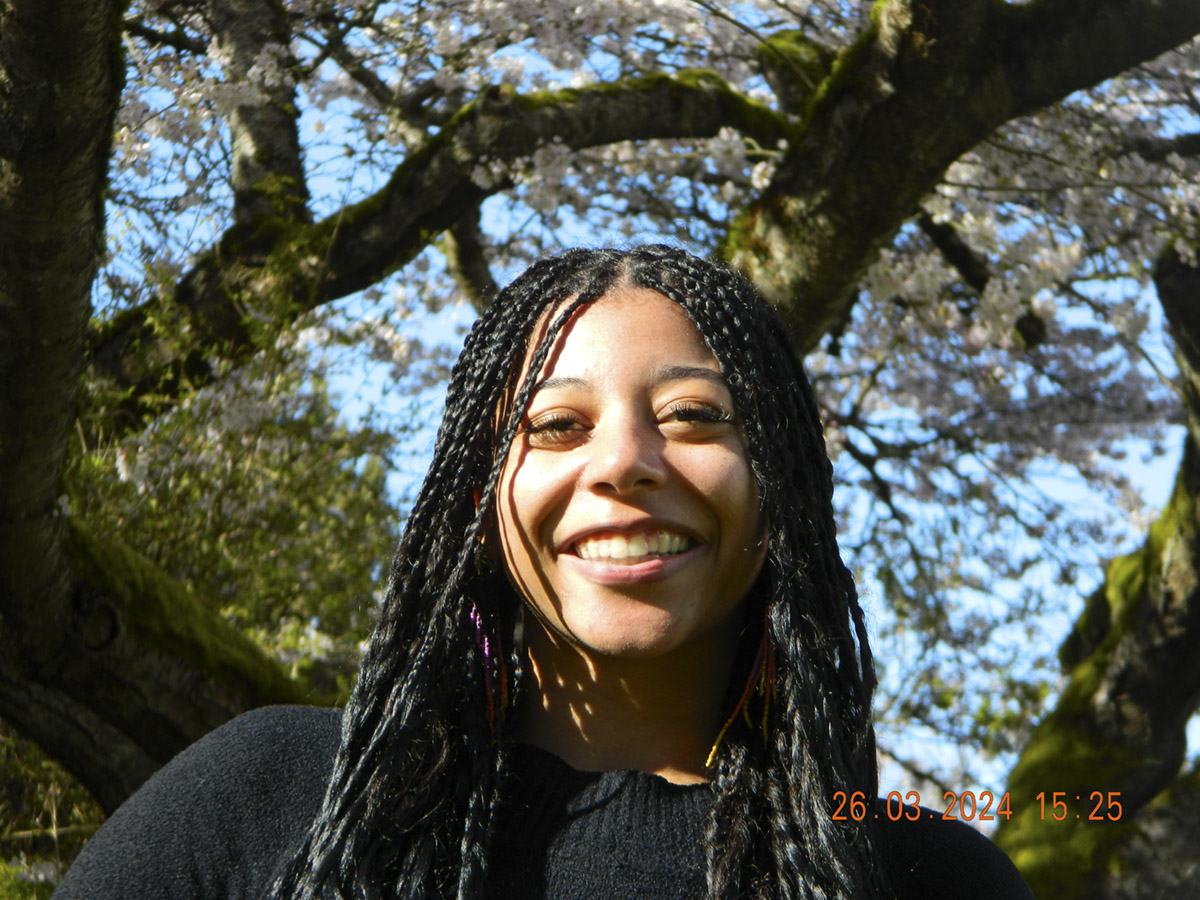
Trinity Stephens was the recipient of a 2024 CPA Indigenous Psychology Student Award for her unconventional work as an undergrad at UBC.
There are certain things we expect from other people in terms of their behaviour. We expect people to turn right when their right turn signal is on. We expect that when we order a coffee that the barista will put it in a cup, and that fellow bus riders will refrain from doing chin-ups on the hand-hold bars. Or, that when we get on an elevator, everyone will face the door and the buttons, avoid eye contact, and ride up to their floor in silence. And these expectations are mostly confirmed by others. Unless, perhaps, you get on an elevator with Trinity Stephens.
“Even when I was a child I never did what other people did, but it was when I became a psychology student that I realized how odd it is. We had this one social psych class where the prof sent us on missions. Like, go into society and break social norms. So for a week straight, I would go into the elevator and face everyone. While everyone faces the one direction, I was looking the other way. Just forcing myself to overcome the idea that I had to do what everyone else was doing. People hated it, especially if I was with my friends. They got really annoyed with it, and I could see the anxiety it provoked in people.”
Trinity is going into her final year of her undergrad at UBC. She’s Mi'kmaq, Métis, and Jamaican, and recently received a CPA Indigenous Psychology Student Award for her work in school – where she is doing a bachelor of arts with a psychology major, and also a minor in law & society and a minor in education.
Ever since she was a child, she had an instinct to help other people. A psychology course in high school intrigued her, and she became rapt with the idea of learning about the actions of people, and the motivations for those actions that often go unnoticed. Soon, she was looking to start an undergrad in psychology, with the goal of one day becoming a counselor for people in her community.
Trinity visited the UBC campus and immediately fell in love. Coming from the chaotic, bustling environment of Toronto, the feel of a community network, in close proximity to nature was appealing – and something far different from her familiar hometown feel. She says she feels peaceful while she’s there.
“There are actual forests on campus, and there are cherry blossoms all over, and there’s even our own Zen garden that’s really well kept up. I thought if I’m going to spend any time anywhere doing anything, I want it to be for psychology and I want it to be here.”
While at UBC, Trinity has been working at the Alpine Counseling Clinic in Vancouver as a neurofeedback technician. She works on weekends, where she sees anywhere from 4-12 clients a day, ranging in age from 4-80 years old. As Director of Feedback, she’s providing what she calls a Western form of healing, a dynamic she finds very interesting. She has 30-minute sessions with clients helping them “connect with themselves”, honing in on how they’re feeling inside and what’s causing stress and anxiety in their lives.
The connection between Western ways of healing and traditional ways is a subject of particular interest for Trinity. She is enthusiastic about both and believes that the one can enhance the other and vice versa.
“My main goal was to be a counsellor for BIPOC people, specifically in Black and Indigenous communities. There’s a lot of stigma around therapy because it’s something we’re not really used to, but it is something all our ancestors have done. So I thought that by being able to study the Western side would give me an advantage because I already have a lot of my ancestral and holistic knowledge. Even while studying psychology, I’ve noticed there’s a lot of overlap with traditional medicine and traditional ways of healing. It made it a natural thing for me to learn.”
Her love for UBC and the campus community led Trinity to apply for her Master’s program there – and only there. She was not accepted, so for the time being she is considering some other options before once again trying for her Master’s. One option might be becoming a life coach for post-grads, recognizing how much of a whirlwind it is for them right now. Another option is to become a doula.
Doulas help mothers through their pregnancies. They work with them up to the point of giving birth, and also work with them after the birth to help with things like feeding and support. Says, Trinity, “it’s especially helpful in Black and Indigenous communities to help mothers with their birthing journeys, reducing trauma for both the mother and the child. I think that would be a really nice accent to my resume when I do apply for the Master’s in the future. It can also be really expensive so I want to have a sliding scale for people who might not otherwise be able to afford it.”
It would be an unconventional choice of gap year activities, but unconventional choices are on-brand for Trinity. Iconoclastic thinking, an embrace of numerous ways of knowing and healing, and a desire to help the people around her suggest that no matter what Trinity chooses to do, her communities will be all the better for it.
Get to know me questions
- You can listen to only one musical artist/group for the rest of your life. Who is it?
- Do you have a sport? What is it and do you watch, play, follow it?
- Favourite book
- Favourite quote
- If you could spend a day in someone else’s shoes who would it be and why
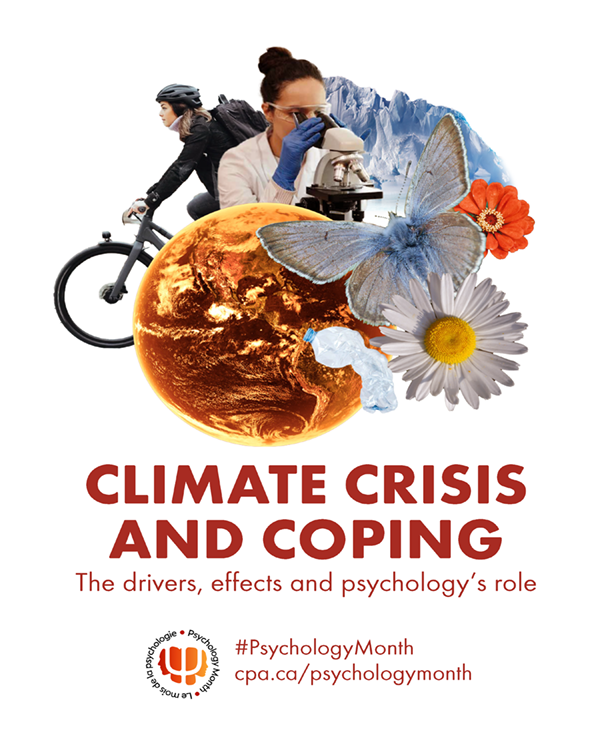
Psychology Month 2024 was on the subject of climate change and psychology’s role. Our communications specialist reflects on the campaign, the key messages, and the next steps we can all take in tackling the biggest threat of our lifetimes.
Reflections on Psychology Month, climate change, and the path forward
My name is Eric Bollman, I’m the communications specialist at the Canadian Psychological Association. I am introducing myself here because I don’t normally write from my own perspective – I am usually writing about others, or their work. I thought I would write this final Psychology Month article from a personal perspective, as I have learned a lot over the course of this month and I want to share that – but I also want to make clear that these are personal opinions and perspectives from what I have gleaned. In our weekly Psychology In The News email that I send to membership, this would go under the ‘Blogs and Opinion’ section.
I started writing this piece with the explicit intent to walk the fine line that action on climate change demands – the acknowledgement that it is a crisis that can terrify many, if not most of us, but that framing it positively is the only way to encourage people to get on board in taking action. Upon re-reading what I initially wrote, I realized that despite my stated intent of looking to strike that balance, I had absolutely not done so. In fact, I had spent so much time immersed in the topic of climate change and online disinformation that I didn’t notice the negativity that had seeped into my thought process and permeated most every sentence I wrote, until I stepped away for a few days.
I feel like this is something that happens to many of us, so I hope the personal anecdotes I relate through this final Psychology Month article are helpful and, perhaps even a cautionary tale! What follows are the things I took away from the multitude of conversations I had this month. I present three areas where I think psychology can help the most, and where we can all (psychologists and non-psychologists alike) focus our efforts and attention.
Frame the conversation – and the solutions – in the most positive terms possible
It was clear to me, from the beginning, that the framing of Psychology Month in a positive way around climate change would be difficult. So much so that when I tried, I initially failed to do so. This is the most existential threat we all face right now, and in coming years it will become more chaotic and more catastrophic. It’s objectively terrifying. The more we talk about the climate crisis, and the circumstances that face us now and in the coming years, the more (rightfully) frightened we become.
That said, framing the conversation around climate change as a terrifying one is, generally speaking, not helpful. Doing so produces anxiety, fatalism, and actually discourages people from working toward solutions. Imagine being a child and learning about melting polar ice, disappearing species, sea level rise – and trying to imagine a happy future. As Paul De Luca, a student at the Prime Family Lab at York University says,
“By drawing upon the principles of positive psychology, and focusing on subjective well-being, we can potentially integrate our relationship to the environment to bolster or foster positive mental health outcomes in children and adolescents who I think are probably the most affected by anxiety because it’s their future at stake.”
Paul is right – a focus on subjective well-being can both alleviate distress and anxiety and also bolster pro-environmental behaviours. In her TED Talk, and her conversation with me on the CPA podcast Mind Full, Dr. Jiaying Zhao makes this point over and over. I believe she will make it once more at her upcoming plenary address at the CPA convention in June. There is no reason why pro-environmental behaviours can’t make us happy. Being outside on a bicycle makes people healthier, and as a result happier. Why not integrate that into our daily lives? For many people (me included) getting outside in the summer and tending to a vegetable garden can produce a great sense of peace (and a great crop of peas).
Every person in the world contributes to climate change in some way. There is no way to avoid it all. Every time I get into my car I think about it. When I make the decision between running the dishwasher and washing pots and pans by hand, I’m subconsciously calculating the impact of one versus the other. Thinking about things in this way can overwhelm us – and has overwhelmed me at times. Taking concrete steps that I know are good (maintaining my indoor garden, planning meals so I use up all the vegetables in my fridge) can take me out of a negative headspace while also boosting the health of my family.
These choices we have to make are, I think, best encapsulated by the magnificent TV show The Good Place, where Ted Danson presides over – for lack of a better word – Hell. People are making efforts to be good, and when they die they hope they’ll have been good enough to make it into Heaven – but the complexities of modern life have made it literally impossible for anyone to achieve the proper level of “goodness” and nobody new has been admitted to Heaven for centuries. Danson’s character sums it up –
“Just buying a tomato at a grocery store means that you are unwittingly supporting toxic pesticides, exploiting labour, contributing to global warming. Humans think they’re making one choice, but they’re actually making dozens of choices they don’t even know they’re making.”
There is good news in the struggle against climate change. A decade ago, part of the debate was framed as either you embrace renewable energy but sacrifice the economy and GDP, or you ignore renewables in order to ensure economic growth. Today, those concepts have been decoupled – and renewable energy is an economic driver of its own. Heat pumps, solar panels, and electric vehicles are becoming cheaper and more accessible. Major countries, and companies, have pledged to crack down hard on methane emissions, one of the most effective ways to limit global warming in the coming years. There is reason for optimism!
Holding ourselves to an arbitrary standard makes little sense. We can’t deny ourselves every pleasure for fear of our carbon footprint or impact, or we will become like Michael McKean’s Doug Forcett on The Good Place – living life in a perpetual state of anxiety where our entire world crumbles whenever we accidentally step on a snail. Instead, we can focus on making ourselves happier – and the world better – through actions that we know can do both.
Win the war on trust
As McMaster environmental science Ph.D. student Kyra Simone points out, there has long been a narrative pushed by those who would deny climate change exists – namely, attacking the messenger rather than the message. Calling out hypocrisy from those who are the most vocal about solutions as though that somehow means that what they’re saying on climate must be false. Al Gore flew to a conference! David Suzuki has houses! Greta Thunberg owns clothes! Sure – some of those things can be framed as hypocritical, but none of them makes the message a false one.
This particular kind of disinformation seems relatively recent when it comes to things like vaccination. But it has a long history in the realm of climate change, starting with oil and gas companies funding fraudulent studies decades ago to muddy the waters around the conversation such that no one could tell what was true and what was invented. Presenting those counter-narratives in a ‘scientific’ sort of way is a big reason many people continue to be skeptical of science today – particularly climate science.
We hear a lot about a War On Truth. That the current political climate and online discourse is designed to make Truth subjective – well, that may be true to you, but I have an alternative set of facts. I think really this is a War On Trust. Concerted efforts to delegitimize academic institutions, the media, and experts of all kinds have allowed charlatans and disingenuous public figures to replace the trust people once had in those institutions with trust in them, and in their podcasts and Substacks and supplement brands. These efforts have worked to some degree. Americans now trust what they read on social media more than traditional media. In Canada we’re not there yet. But we’re trending in that direction.
As someone who spends a lot of time on social media – I’m the person who puts out the CPA’s social media content and monitors the trends and responses and direct messages, I probably spend more time on social media than the average person, and (I assume) more than a psychologist would suggest is healthy. Spending time in that space, Twitter especially, is a constant barrage of people and bots who want nothing more than to contradict an expert in the area of their expertise, attack their character, and seek online clout through the most negative means possible. It becomes hard to remember that those people are a very small minority, since those platforms have made that minority the loudest one in our collective history.
I feel like Dr. Katherine Arbuthnott would tell me I’m not seeing this stuff as often as I feel like I do. Which is probably true – I can think of only twenty or so direct examples, but those do occupy an outsized place in my memory bank. She’s evangelical about the fact that we, North American human beings, have been conditioned to trust others too little. That we consistently underestimate the willingness of strangers and even friends to be helpful, to do the right thing, and to put the needs of our collective neighbourhoods and communities above some of our own.
I failed to keep this in mind throughout all of February. It was only when I was about to write an angry response to a bizarrely un-factual and conspiratorial tweet from a well-known Canadian public figure about climate change that I had to stop and take stock of my headspace. I realized I was outside the bounds I had set for myself. So what to do?
We can work on our own media literacy – does this story come from a reputable source? Are we sure the scientist who created the study being referenced is in fact a scientist? And an expert in the field in which the study was conducted? Is the story being hosted on a platform that actually fact-checks?
Another option is to counter the un-factual with the factual. I don’t mean commenting on the meme your Facebook friend shared about Al Gore being rich ergo climate change is not real. As Rachel Salt of Science Up First says, commenting or quote-tweeting or sharing a post so as to debunk it really does little more than amplify the wrong information. She suggests screenshots of the content that can then be addressed without adding to the destructive algorithms that got us here in the first place. Or, just post your own thoughts and your own science and your own content – the more truth there is online, the less able it is to be drowned out by the outsized volume of the clamorous minority.
We can trust that most of the people we know, and most of the people we meet, have a similar level of concern about major issues like climate change. We can believe that any action we take will also be taken by a multitude of others, and that doing this enough times will create the large-scale changes those actions are intended to create. And we can ignore the loudest voices in the room and on the internet, secure in the knowledge that the majority of people feel the way we do, act the way we do, and are moving toward the same goals we are.
They’re just not as loud about it – you might get internet clout for a few days by sharing a theory that Kate Middleton is in fact a Manchurian Candidate-style brainwashed operative installed in the British Royal Family in order to make cheese illegal. You’re less likely to get clout for telling people about your radish garden. And so I, a regular user of the internet, am far more likely to hear about the illegal cheese than I am about your radishes. More’s the pity.
Lean on others
The solutions to climate change are interdisciplinary. That’s a word that usually refers to experts from different spheres working together to advance a science they would not be able to do as effectively on their own. Like that time Amy and Sheldon shared a Nobel Prize on The Big Bang Theory. This is true in terms of the climate crisis as well – one scientific breakthrough builds on another, and one discipline enhances the others merely by virtue of their collaboration.
Witness the young scientists in Dr. Heather Prime’s Prime Family Lab at York University, Paul De Luca and Alex Markwell, integrating climate change into their studies with families and children. They don’t have to do the work of determining whether climate change is a threat, or is real – they can treat that as a fact and take a further scientific step from there. Environmental scientists have done that work over the course of decades, through cuts in funding, official muzzling, and the vocal skepticism referenced earlier that seeks to undo their work.
As Paul and Alex build on climate science, McMaster PhD student and Science Up First contributor Kyra Simone is creating new climate science based on decades of environmental work, and setting the stage for breakthroughs in dozens of fields for decades to come. Psychologists are combining their specialties at University of British Columbia, where Canada Research Chair in Behavioural Sustainability Dr. Jiaying Zhao has partnered with happiness researcher Dr. Elizabeth Dunn to find ways to encourage behaviours that will both help the environment and increase happiness.
In community action, emergency room doctor Dr. Kyle Merritt has partnered with many other healthcare professionals to form Doctors and Nurses for Planetary Health in Nelson, B.C. Psychologist Dr. Todd Kettner is also a member, and they learn together about ways they can make their own jobs and practices more climate-friendly (anaesthetic gases are a major contributor to global warming!) As a group, they consult with city officials on ways to improve sustainability through infrastructure projects and municipal policies.
The Environmental Psychology Section of the CPA is a section that does not specifically look at environmental issues, per se – as in pollution and emissions and disappearing sea ice – they look at peoples’ behaviour in relation to their environments. That includes physical built environments like their homes, offices, or the streets and blocks they go through on their commute. It also includes natural spaces like parks, forests, or waterways. This year they decided to create a working group to bring together psychologists of all types to work together on climate solutions. Dr. Phoenix Gillis took the first step , Section Chair Dr. Lindsay McCunn quickly got on board, and the meetings have been lively, informative, and well-attended.
Their initiative could produce some great results, with the variety of expertise psychologists bring to the table. Industrial/Organizational psychologists, who study human behaviour in the workplace, collaborate with Environmental psychologists to design climate-friendly offices where people are happier to come to work. Clinical psychologists whose patients are expressing anxiety about this existential threat can work with Social and Personality psychologists to come up with concrete actions that can increase sustainability while lessening the dread people feel.
I am the person responsible for the Psychology Month initiative at the CPA. Which meant that this year I sat with the impacts of climate disasters, the missed targets of the past several decades, and the existential dread – mostly alone. I needed someone else to point out my increasing negativity, to which I had been largely oblivious. In this case it was my wife Jen who made an offhand comment about it which elicited in me a moment of clarity. I have spoken with so many wonderful people, dozens of them, over the past four months in preparation for this campaign, but by the end I missed or forgot several of the lessons that I myself was trying to impart this month.
We can all reach out to someone we know to get on board with their work, to get them on board with ours, or to get the ball rolling on something new. We can trust that the people to whom we reach out will more often than not be of a like mind on climate change, and will embrace the chance to act. Collaboration makes us happier, and the steps we take in tandem lessen our trepidation and anxiety when it comes to existential threats.
Postscript: the Earth is a collaborator too
After finishing this article, I had one more conversation this month that I think might add a fourth area for consideration. I spoke with Kohkom Beverly Keeshig-Soonias, an Anishinaabekwe psychologist and member of the Chippewas of Nawash First Nation. We were speaking about land acknowledgements – the reason we do them and the meaning behind them.
Indigenous people have been doing land acknowledgements for thousands of years. It is only recently, in the spirit of Truth and Reconciliation, that they have invited the rest of us to join them in doing so. A land acknowledgement is much more than simply pointing out that Ottawa is the ancestral home of the Haudenosaunee, and that settlers and colonialism displaced them forcefully decades or centuries ago.
A land acknowledgement is a verbal, or written, expression of the understanding that not only did the Indigenous people live on this land before Europeans arrived, they had a relationship with that land. It’s an acknowledgement that, even though that land might now have a golf course or a Jean Coutu or the CN Tower on it, the relationship between the people and the land remains ongoing.
Kohkom Beverly speaks about land as a partner, the other half of a relationship that feeds both of you. The land provides you with food, water, and shelter. The air you breathe and the sustenance you require to stay alive. In return, you provide the Earth with what she needs. You maintain the soil, you help get water to the plants and plants to the animals and you treat her, the land, as an equal partner in a relationship that benefits you both.
It is only when we start to see the land as a thing, as inanimate, that we are able to use it, to extract resources for our own gain at the Earth’s detriment. The Indigenous people who were caretakers of the land for thousands of years, and are still caretakers of the land, would never act this way. To do so would be to abuse a partner, to ignore a relationship, to exploit a family member.
And so perhaps the final way we can approach the issue of climate change is to look at the Earth, and the environment, and the very land on which we stand, in a different way. Not as a thing we’re trying to help, or as a victim to whom we’re trying to atone for the harm we’ve done. But instead as a collaborator and an entity with whom we have a relationship. A partner with whom we are working to improve the circumstances for us both.
We have a long way to go, but we always go further together.
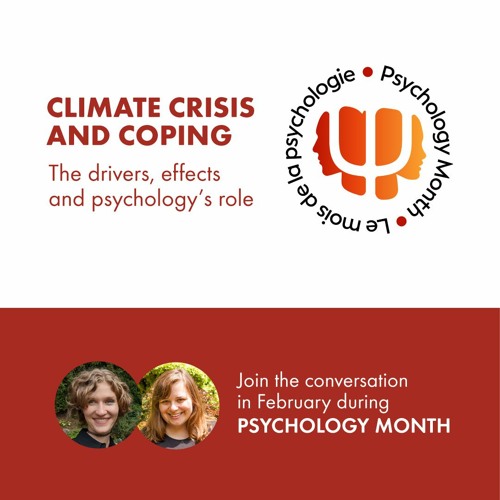
Throughout Psychology Month in February, the topic of disinformation when it comes to climate change has arisen time and again. To close out the month, we spoke with Kyra Simone and Rachel Salt at Science Up First about our responses to disinformation, ways to combat it, and difficult conversations with friends and family.

This summer wildfires ravaged the Northwest Territories, forcing the evacuation of about 70% of the population. Yellowknife psychologist Merril Dean was one of the evacuees, and saw the devastation from many perspectives. In this Psychology Month episode of the CPA podcast Mind Full, Merril shares her own experiences, as well as some thoughts on the government response and where the northern communities might go from here.
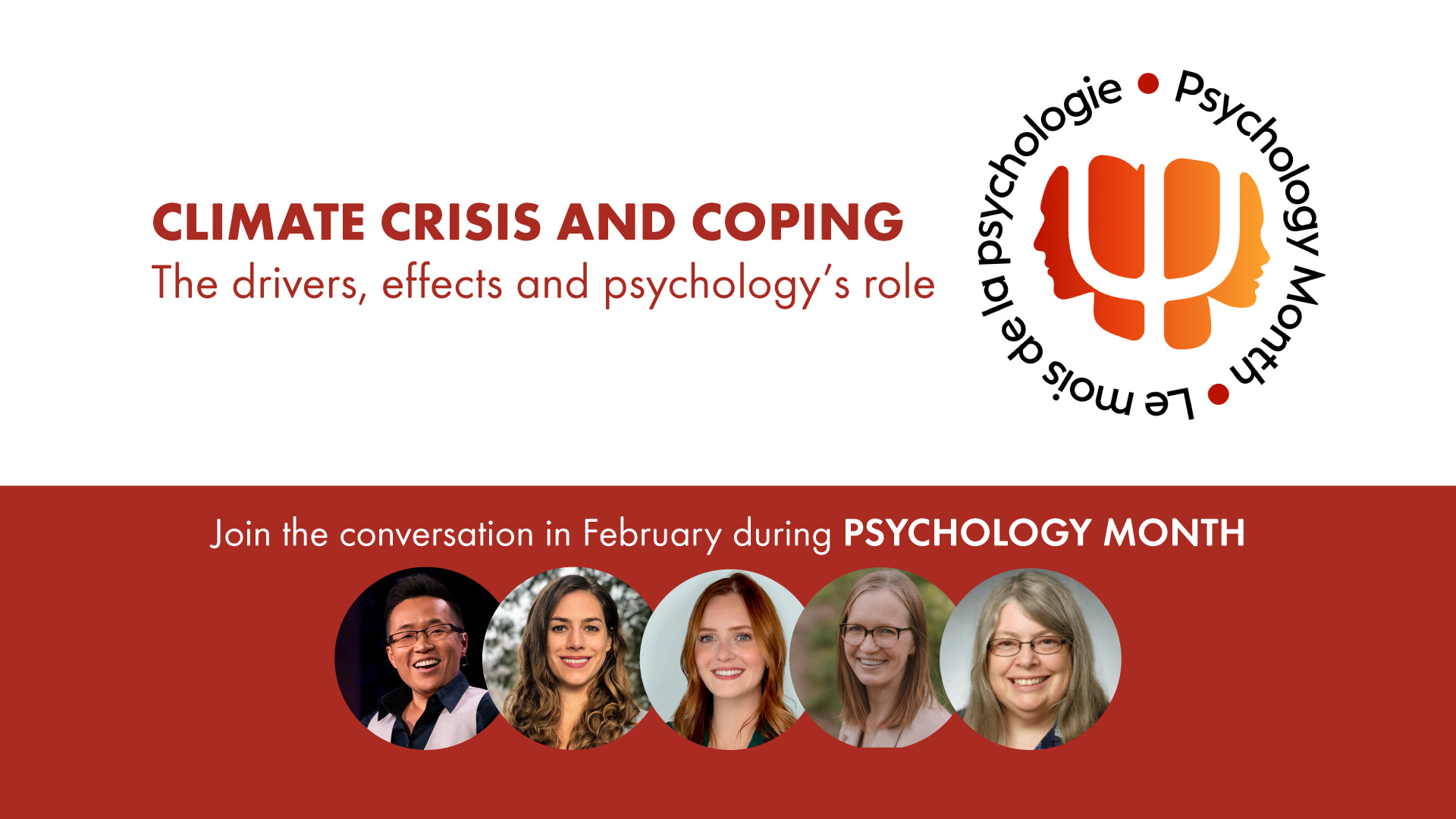
Starting a little more than a decade ago, climate science in Canada suffered a significant setback when the federal government cut funding for environmental research and restricted scientists from speaking with the media and sharing their findings. Climate scientists are still feeling the effects of those policies, and have still not completely regained their footing. In the interim, other scientific disciplines started taking a greater interest in climate change and making some strides. One of those disciplines was psychology.
Psychological scientists incorporate climate into their studies
When a researcher or student applies for money to conduct research, they have to convince the funders not only that their idea is a good one, but that they are the person who should be doing that research. Funders look at a lot of things including the impact of the research, the way the knowledge will be shared, the time it will take to complete, and the return on their investment (value for money).
In the Prime Family Lab at York University, lab director Dr. Heather Prime is discussing the future with her student Alex Markwell. Because of how they apply for and receive their funding, their research projects must be closely tied to the lab itself – in their case, that is the study of family dynamics. How parents and siblings influence children from birth to adolescence, or how major or minor external events affect families. The lab launched in 2020, just as the COVID-19 pandemic became a major external event that upended family dynamics across Canada and around the world.
Students come to a lab because of the expertise that the research program and supervisor bring to that lab. This is what drew Alex to the Prime Family Lab. Her area of interest is child development within a family systems framework and this is the lens through which she looks at potential projects. She has a keen interest in acting on climate change, but this was not something that was part of the discussion before her arrival. Only through conversations with her new lab director did they discover that this was a shared passion. Heather says,
“Alex brought up a year or two ago that the way we study the pandemic is really transferrable to the way we might study climate change.”
So they started thinking about ways they could integrate climate change into their established research program. As Alex thinks ahead to her Ph.D., which she will be starting in September, she has written a proposal for a scholarship focused on the pathways linking climate change to child and family well-being. One aspect of this proposal is the creation of a theoretical model from a family system perspective.
“Because climate change is going to be more and more relevant to more and more people, you need a map – which sounds annoying because it’s theoretical, but it can create a framework of ‘here’s what we think is going to happen based on everything we already know’. That takes a lot of work – you’re scouring the literature, bringing together a number of theories, and then creating this ‘map’.”
Specifically, Alex is talking about looking at how climate changes and climate change-related events may affect children’s mental health through disruptions to family functioning. She’s thinking that would be similar to the COVID family-disruption model that Heather published, about how the pandemic’s social and economic disruptions trickle down into families and affect their dynamics.
They can start looking at feasible interventions – something psychoeducational that could teach parents and caregivers how to talk to their children about climate change. Or maybe the social and economic ripple effects of climate change impacting family relationships where children may suffer, given that kids are so dependent on their relationship with their parents. First though, they must define the parameters of their study.
Are we talking about families who have experienced a major climate event – like losing a home to a wildfire – or families who are under threat of such an event (live in proximity to a flood zone) – or are we talking to families who are just generally anxious about the whole thing? Can they survey those people in Toronto?
There are many questions to answer before applying for research funding. Many more questions arise after that funding is secured.
Canadian climate scientists are still feeling stifled
Many of us remember the protests staged by scientists in 2013 over what they described as the ‘war on science’ being waged by the federal government at that time. Science funding was drastically cut, and the scientists who were still able to do research were prevented from communicating the results of that research to the public – which is kind of the point of doing research in the first place. An enormous amount of that muzzling was done around climate science, as the federal government sought to downplay the most dangerous effects – and even the very existence – of climate change.
Dr. Alana Westwood at the School for Resource and Environmental Studies at Dalhousie University researches natural resource management and science. Her lab recently completed two studies into interference with environmental research in Canada. Of the 741 environmental scientists surveyed, 92% reported experiencing interference with either the conducting or the communicating of their research. Dr. Westwood, along with her research associate Manjulika E. Robertson and Master’s student Samantha M. Chu, wrote an article in The Conversation discussing their findings and the ramifications of these pervasive invisible barriers.
Since that time, the policies at the federal level have changed. In theory, this means that scientists can get back to their work and can share their results with impunity. Alana’s studies suggest that this is, sadly, not the case.
An atmosphere of uncertainty is partly to blame – for a long time, certain kinds of science went unfunded and specifically shunned. Can scientists go back to those subjects, studying pollution and endangered species and emissions? Will they get funding if they do? What about funders – there is now a fair amount of external pressure on them to fund only certain kinds of research, pressure which has not necessarily abated just because of a change in federal policy. Alana says,
“We identified interference in two categories. One is externally imposed – when a researchers’ employer is putting restrictions on their ability to conduct or communicate their research. That could come from workplace policies, it could come from their manager, senior leadership, or their communications departments. The category we found that was new and more insidious was internalized interference. This happens when researchers themselves don’t want to communicate with the media, either out of fear of being misrepresented or of public backlash.”
Climate scientists exist within a system where the trickle-down effects of the war on science are still being felt. What has resulted is that a Canadian climate science environment that became fractured a decade ago remains fractured to this day, and important work in this space has been delayed or shelved entirely.
Back in the Prime Family Lab at York, Dr. Prime says she has not felt any external pressure that could be considered muzzling, and has not experienced any interference when it comes to the subjects she chooses to tackle. This may partly be a result of her lab being so new. It might also be because until now, her lab has chosen to focus mainly on COVID. But it’s likely that a lot of the reason is that the Prime Family Lab is a psychology lab – a discipline that has not been targeted by the same kind of scrutiny and interference over the past two decades.
Psychology has a role in the climate science conversation
“I think at this point, psychology probably has a primary role in the response to the climate crisis. Climate scientists and ecologists and environmental engineers have pretty much figured out the solutions to our problems. There’s a lot of work to do still, obviously, but now it’s more about people taking up those solutions.”
Dr. Katherine Arbuthnott is Professor Emeritus from Campion College at the University of Regina. She has spent the past couple of decades studying the health benefits of connection with - and spending time in - nature. Spending time outdoors, interacting with trees and wildlife and sun, has benefits for both our physical and mental health – and it has the added bonus of nudging us in the direction of environmental sustainability.
Katherine is quick to point out that psychology has long been a science focused on individual behaviours. What makes A person do A thing. In her time as a cognitive neuroscientist she would study individual brains to look at the processes of cognition. Clinical psychologists generally work with one person at a time, to help that individual in a personalized way that works best for them. A lot of the psychology around climate change interventions has been focused in this area.
Dr. Jiaying Zhao is the Canada Research Chair in Behavioural Sustainability and an associate professor in the Department of Psychology and the Institute for Resources, Environment and Sustainability at UBC. She has led studies like the one demonstrating that putting images of turtles and dolphins trapped in plastic debris on recycling bins and garbage cans reduced the amount of plastic waste people threw away.
“We found that when we placed those images on garbage stations, the amount of plastic waste was reduced – that is, the amount of plastic waste going into all streams, garbage and recycling alike. People are responsive to those images, and the principle is trying to connect our actions (throwing stuff away) to the downstream consequences of those actions (dolphins in distress).”
Jiaying has also launched an effort to connect sustainable behaviours with happiness. Jiaying, a behavioural scientist, collaborated with her colleague Dr. Elizabeth Dunn, a UBC psychology researcher specializing in the study of human happiness. What resulted was an idea for reframing the discussion around climate change from one of sacrifice (give up meat, shop less) to one of happiness. So many things that are better for the environment (eating more vegetables, riding a bicycle) are also things that improve our mental health and make us happier people!
Jiaying gave a TED Talk on that very subject which includes what the kids would call “hacks” to make you happier while benefiting the environment at the same time – like feng shui-ing your fridge. Or making the effort to carpool with people who can make the dreary drive in to work in rush hour traffic a more enjoyable and brain-stimulating experience.
To truly make a difference in the battle against climate change, it will take many people doing many little things, and many countries doing many big things. Individuals who do the little things are more likely to demand the big things of their communities and countries. And we’re getting there. More people than we realize are willing to take the actions that are required to stave off the worst of what climate change might bring.
Katherine speaks a lot about trust. The trust we have in other people to do the right thing, and the gap between our perceptions and the reality when it comes to the intentions of others. We, as people, tend to greatly underestimate the level of commitment in strangers to do the right thing, when in fact each of us is more likely than not to want to take actions that benefit all of us collectively. She also recognizes that truly addressing the climate crisis goes beyond simply engaging individuals to act differently.
Psychology can help. Yes, psychological science is a little late to the game. But it is now a player in the climate discussion – and can be an essential one, bridging the gap between the conclusions and solutions proposed by climate scientists and the implementation of those solutions by people and communities. Environmental scientists in Canada have been set back, and are only now starting to regain their footing. But they’ve done a tremendous amount of work over decades telling us all what’s happening and what we need to do. They are not ringing the alarm bell alone. Jiaying, Katherine, Heather, and soon Alex and many others like her will be adding their expertise in a truly interdisciplinary collaborative effort to put us all on the right path – toward sustainability, planetary health, and our own collective happiness.
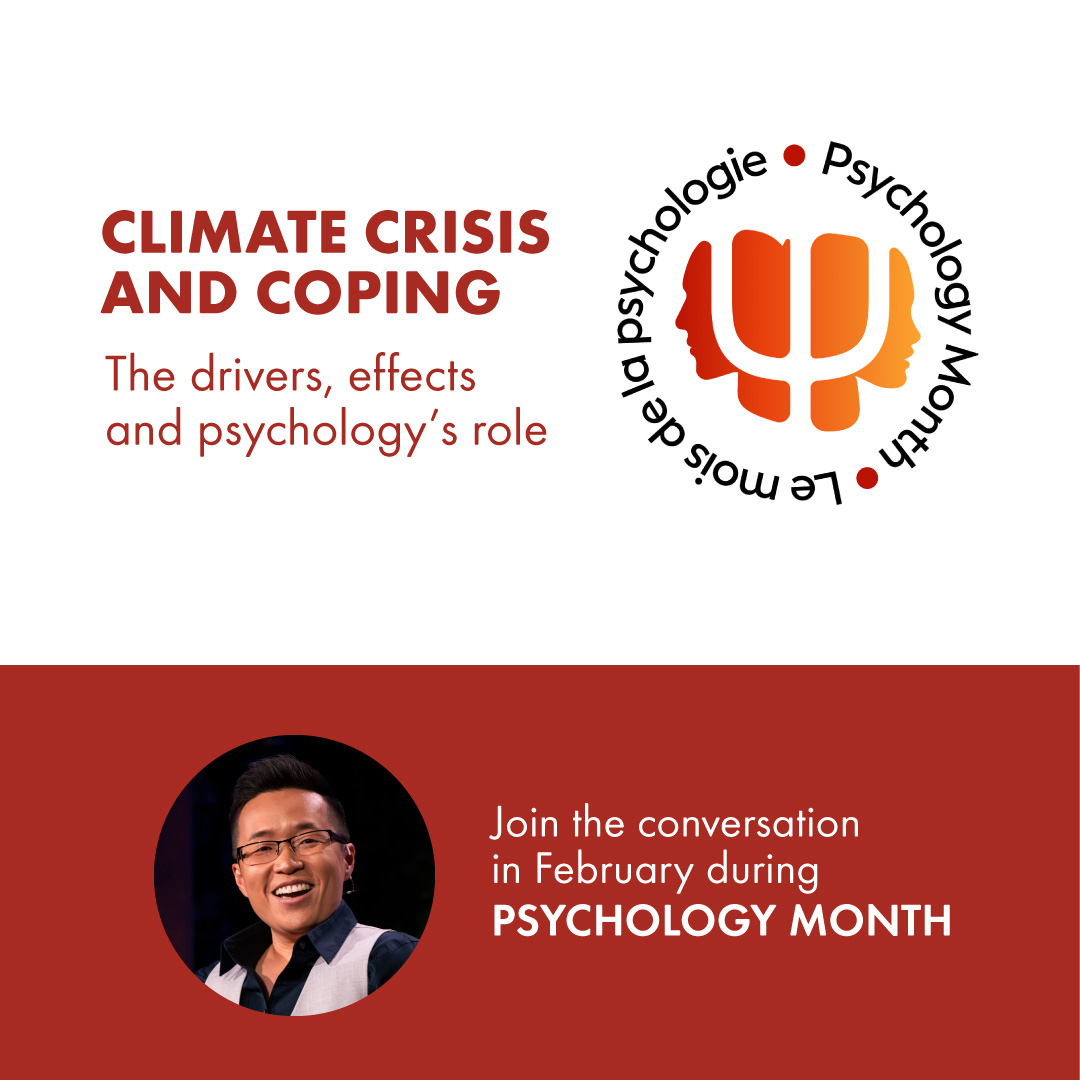
So much of the talk when it comes to the climate crisis is doom and gloom. It’s hard for many not to become a little defeatist or to throw their hands up and ignore the problem. The solution to that kind of despair is action – little actions that move us all toward a more sustainable future. And those actions – and the conversation about them – can be a happy one! Our podcast guest is Dr. Jiaying Zhao, who connects climate action to our own personal happiness in a way that we hope spurs some of that action – and makes you happy along the way!
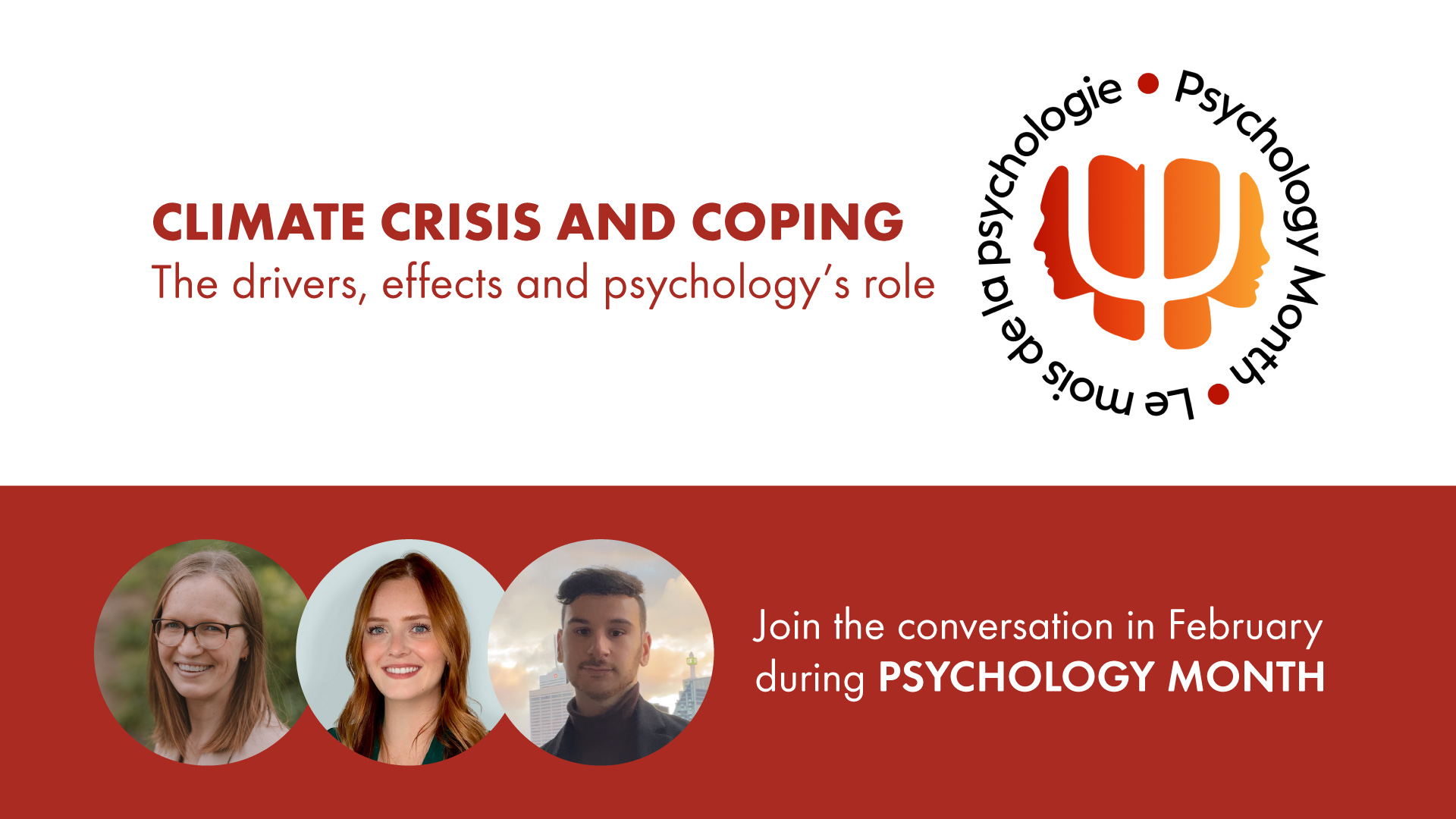
Dr. Heather Prime, Paul De Luca, Alex Markwell
A lot of action on climate change is aspirational. Pledges, pacts, and agreements are often non-binding and have no enforcement mechanisms. But aspirational action is action, and it often works – especially when the action is undertaken by many. York University’s Psychology Department is the first in Canada to sign on to the 1 in 5 Project, an initiative that asks academics and students to make climate change the subject of one in five projects or assignments.
The United Nations first recognised climate change as a major, urgent, global issue in 1992. In that year, the Rio Earth Summit resulted in the first international agreements on climate change. Then in 1997, the Kyoto protocol required developed countries to reduce emissions by 5% below 1990 levels – but developing countries (including China and India at the time) were exempt. Since that time, the developed countries have managed to reduce emissions by 17% (collectively). Germany had reduced their emissions 30% by 2020. The US backed out of the Kyoto accord in 2001.
More conferences, meetings, and summits have followed. 2009 in Copenhagen, 2010 in Cancun, 2011 in Durban, 2012 in Doha, 2013 in Warsaw. Agreements are reached, targets are set, countries back out, targets are missed, agreements fizzle.
In 2015, a landmark in climate change action was achieved in Paris. 196 countries signed on to the Paris Agreement, the most significant global climate agreement ever. The results? To be determined…countries can choose their own targets and there are no enforcement mechanisms to ensure they meet them. Since that time, there have been a lot more meetings…with mixed results.
All this said, many countries – including some of the most important ones – have made a concerted effort to meet the targets set by these series of agreements and accords and pacts. Although there is no enforcement mechanism by which they can be held accountable, the mere action of signing on to a global accord has, in fact, encouraged many of the world’s powers to move toward renewable energy and a greener infrastructure, though not nearly as quickly as many of us would like.
Climate progress is slow. But it is progress nonetheless. It may be frustrating. It may feel like it happens at a snail’s pace and not nearly fast enough considering the urgency of the issue. But it is happening, and hopefully the worst of what climate change could portend might be averted as a result.
In the past year, York University’s Psychology Department has joined the global 1 in 5 project. The project is a framework to allow the academic community to focus some of its collective brainpower on climate and biodiversity, and York is the first psychology department in Canada to sign on. The idea is that academic institutions commit to ensuring that one out of every five assignments, projects, or courses has an element related to climate change attached to it. Like other climate accords, agreements, and pacts, there is no enforcement mechanism, and no accountability – just the desire to improve the future for everyone on Earth.
Dr. Heather Prime, director of the Prime Family Lab at York University, has become a strong supporter of this project, which has meant incorporating climate change issues into her own curriculum as well as thinking about the climate crisis more regularly. The universities and institutions that sign on to the 1 in 5 project are not specifically held accountable for following the mandate. But there is still an effect. It may be slow – slower than we would like – but that is not on today’s researchers. The slow pace of social science around climate change is the result of years (and years) of avoiding the issue by the community at large. Says Dr. Prime,
“[The 1 in 5 project] serves as a kind of challenge to everyone to think about how you can consider climate change in your discipline. Moreover, it involves students in the process. In many ways later generations are more committed to the cause, because they’re the ones that will be most impacted.”
It has not been a straightforward process for Dr. Prime to implement the 1 in 5 mandate to her courses, and it may not yet be fully integrated. Her lab is specifically interested in family dynamics – how children develop emotionally within their families, how stressors on parents and caregivers trickle down to the kids under their care - that sort of thing. At first glance, this might not seem like the kind of place where researching climate change can have a major role. But it does.
As Heather, and her students, say – climate change is a factor in virtually every facet of our lives, which means it can have an impact in virtually every research project one can imagine. Not just in environmental science, but in the social sciences as well. Researching income inequality? That will be exacerbated by climate change. Depression and anxiety? For many those are made worse thanks to thinking about the impending catastrophe that faces us all.
And so, while the York University Psychology Department signs on to the 1 in 5 project, they are in the early stages of implementing it and have not yet reached the goal where 1 in 5 of their assignments is about climate change. As with so many climate change initiatives, it’s more of an aspiration than a firm commitment. But it has an undeniable effect.
Paul De Luca is a Master’s student in Dr. Prime’s Family Lab at York.
“I think the mandate of the 1 in 5 project is very motivating, because dealing with climate change can feel like a major uphill battle. But when you go on the 1 in 5 website and you see all these amazing projects that are currently ongoing, you feel like you’re part of a collective movement. And that in some ways informs the work I do, because I’m able to scroll through and see what other schools are working on and what other labs are doing. I can take that and let it inform the work I’m doing, and maybe identify some of the gaps. I think of it as a collective movement toward this shared goal of talking about climate change.”
It is sort of a soft target. One in five projects will be about climate change…eventually. But the mere act of signing on to the project, and to the pledge, has brought York’s psychology department into the conversation, and its students into the realm of climate-related science, and has encouraged them to think about their own particular specialties through that lens. Paul continues, talking about a study he saw on the 1 in 5 website.
“There was one proposed project about how childrens’ understanding of climate change and attitudes toward the environment change as a function of age. There was a fair amount of research from the adolescent perspective, but not so much from the vantage point of younger school-age children. When I see something like that, I start thinking about the measures we currently have that have been shown to work with pediatric populations. Do we have the tools to deal with things like knowledge of the climate crisis, attitudes toward the environment, and anxiety arising from that knowledge. And I don’t know that we currently do.”
Alex Markwell, another student in the lab, is working toward her Ph.D. and considering dissertation topics. She hasn’t paid much attention to the 1 in 5 project, and hasn’t looked deeply into it – her commitment to addressing climate change was a pre-existing condition. She does find the website and the fact that York has signed on to be encouraging.
“It’s nice to know there are a lot of other students who are interested and passionate in the same kind of things. I’ve mostly been focused on looking at the research that has been published over the past decade, but this is a good resource to look closer at what’s currently going on.”
For now, that is what the 1 in 5 project is for students and faculty at York – a resource. It’s also an aspiration. Changes to the curriculum so far have been minor. For example, Dr. Prime teaches an undergraduate class called Atypical Development, which is about the assessment and treatment of child mental health issues. For the past three years, she has assigned them a class activity centred around designing studies on COVID and families. This year, the assignment was focused on climate change.
The students came up with really interesting study designs. One proposed looking at how food scarcity relates to brain development. Another thought to track calls to crisis lines as a function of catastrophic weather-related events. A third proposed a study would look at recurring droughts in rural Canada and how that related to mental health issues. The students embraced the project, and for those who were feeling anxious about the climate crisis it was a useful way to channel efforts toward it. It’s a way of connecting people to their role in the outcome of the world.
The changes are small – but they are changes. The idea of the 1 in 5 project is fairly simple, that academics from all disciplines can come together to collectively tackle the biggest issue in the world, all by doing something small. This, it seems, is the path forward and the way out of the worst of the climate crisis – we don’t all have to change our lives to devote ourselves to this cause. We can all do little things, and observe those around us doing little things as well, and collectively that is a big deal for today and for the future.
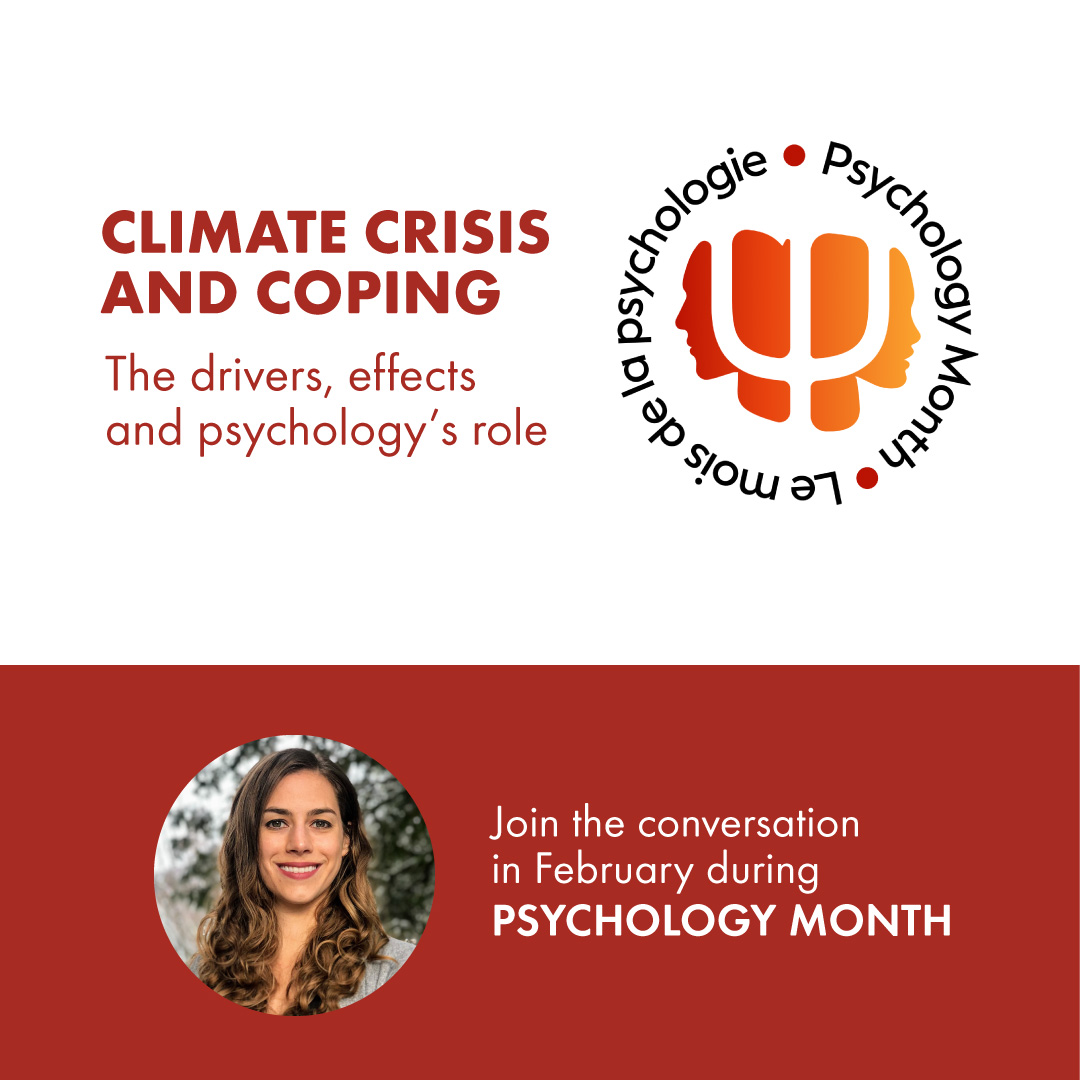
Dr. Alana Westwood and her lab at Dalhousie University recently completed a study of environmental researchers in Canada. Their results showed that researchers in this space still feel muzzled despite changes in federal policy designed to allow them more freedom to speak and share their results. On the CPA podcast Mind Full we discuss the reasons for this, the ramifications, and specifically what this means for environmental science – and the communication of that science – in Canada.
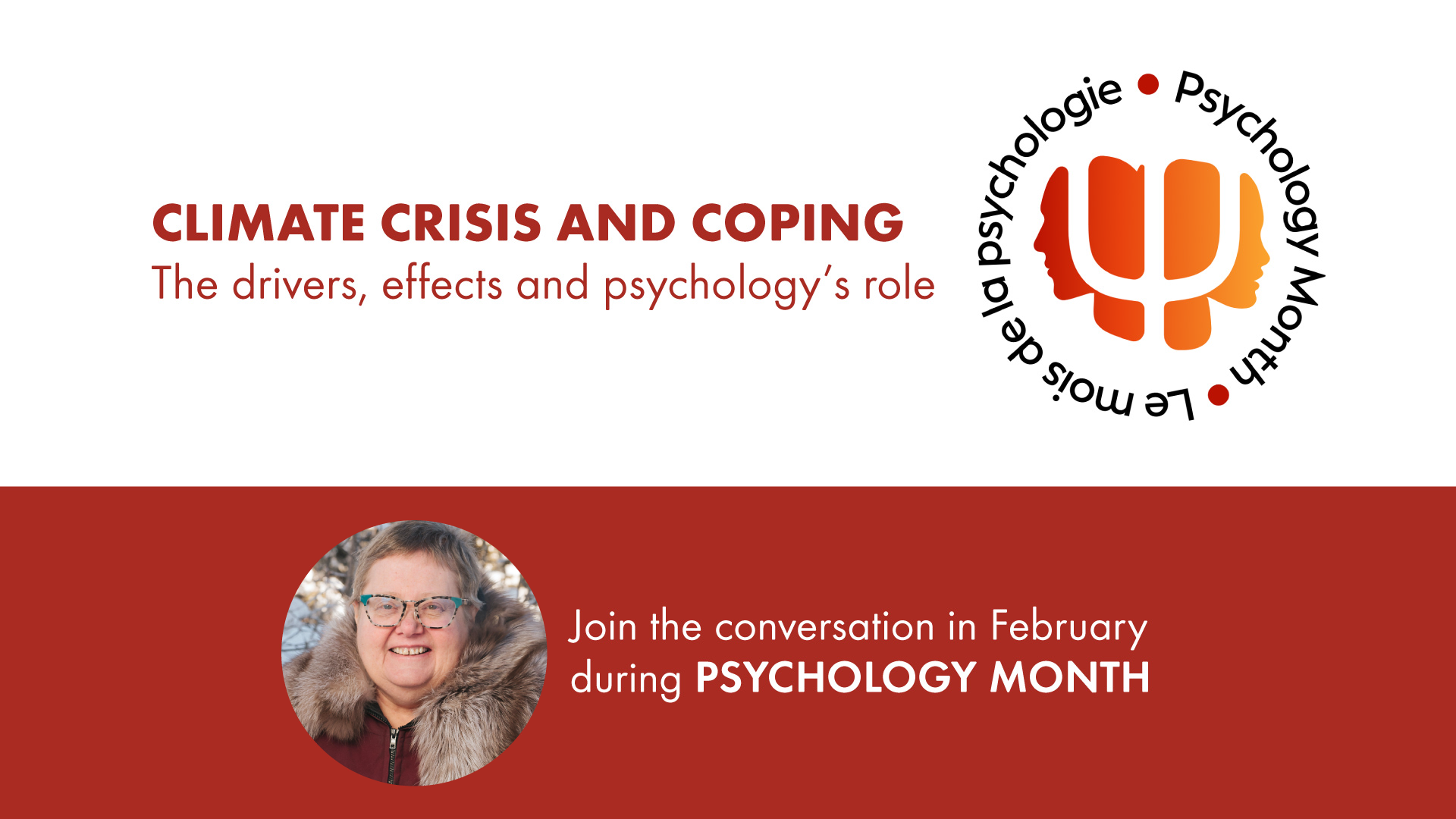
Merril Dean
In the summer of 2023, wildfires forced the evacuation of 70% of the residents of the Northwest Territories. There was a lot of trauma that resulted from leaving their homes behind. But there was also the stress of figuring out how to get supports through cultural and language barriers, and the shock that came when they returned to devastated communities. Yellowknife psychologist Merril Dean provides an inside look at the experiences of the people in the Northwest Territories, and makes some suggestions as to how schools can best help their staff and students upon their return from devastating climate events like these.
The unprecedented numbers of wildfires in the Northwest Territories (NWT) in the spring and summer of 2023 saw more than two-thirds (roughly 70%) of the territory’s residents displaced from their homes. Much of the population was evacuated from their homes for periods exceeding a month. Some communities faced multiple evacuations. On May 14 at 4:30 pm, Katlodeche Reserve, was evacuated across the river to Hay River. At 11 pm that very evening, the town of Hay River had an evacuation notice issued with citizens from (now both) communities urged to go to Yellowknife or head south into Alberta. On June 6th the population were allowed to return. Then on August 12th, the population of Fort Smith was evacuated to Hay River. Less than 30 hours later the communities of Hay River and Katlodeche faced yet another evacuation, this time to Alberta, finally able to return after September 13th. Communities north of Hay River faced evacuations through August, with Yellowknife being evacuated on August 13th. In total approximately 25,900 people were evacuated from their homes in the NWT during the summer of 2023.
Gerald Antoine, Grand National Chief of the Dene Nation, has called for an independent public inquiry to encourage everyone to talk about their experiences as the NWT government’s planned wildfire review does not include public engagement.
The massive evacuations of both large and small communities in the NWT this summer highlighted problems that may not be totally unique to the north, but became much more acute because of the relative isolation and the language and cultural component of many of the Indigenous communities in the north. In the past, communities that faced evacuation were typically encouraged to seek shelter in the closest larger community within the territory, thus ensuring at least some cultural and language supports were available; however, the breadth of evacuations in 2023 sent families south. For families with their own transportation and experience with travel, the evacuations, though stressful and frightening, were manageable. For families from smaller communities, or even Yellowknife, who had limited means and no transportation, the evacuation presented bigger hurdles. Families were loaded onto planes to be flown south. They were allowed to bring only 1 small backpack per person. In a number of situations the people did not even know where they were going when their planes took off. At least one flight was rerouted in mid-air and the passengers were taken to Calgary instead of Edmonton. In some cases Elders, who are unilingual speakers of their Indigenous languages, were evacuated to cities where there were no language supports. One educator reported that her grandmother was sent to Vancouver on the medical evacuation and it took the family 4 days to locate her and have a family member travel to join her to act as a translator.
The National Association of School Psychologists wrote a 2017 article about helping children and families after wildfires. Their article talks about how massive evacuations upset security and normalcy. The need to relocate, even temporarily, causes trauma, emotional reactions and coping issues.
For children and families who evacuated the NWT by road in the summer of 2023, additional stress was created by having to drive through fire on either side of the road, while also experiencing extremely poor air quality and visibility because of smoke. During this summer, families driving out of the north drove through the community of Enterprise, where 90% of the community had been burned down a few days before the northern evacuation. The sight of the burned-out community was devasting to children and adults alike.
For some students in the NWT, evacuations caused them to experience interrupted schooling through May-June and again in September before they were allowed to go home. Those students who drove back to their communities were witness to vast expanses of burned land, and active fires still burning or smoldering. Air quality was still poor. These sights made it apparent to the children that, despite being allowed to return home, the fires were still very real and close by.
The evacuations in the north were costly for families. While accommodations were provided through the Red Cross, or local disaster organizations in communities that accepted evacuees (these accommodations were paid for by the Government of the Northwest Territories - GNWT), those who were most economically vulnerable still experienced considerable economic stress. Hourly wage earners were suddenly without income, families on income support had already spent much of their monthly stipend on food that they could not bring with them during the evacuation. Promises of funding were implied by the government, but it wasn’t until near the end of the evacuation when details were shared – and evacuation financial supports were quite minimal. As a result, children and families faced food insecurity both during and after the evacuation.
Returning to the north following the evacuation exposed families to the sight of considerable changes around their homes and communities. Houses outside of their neighbourhoods had been destroyed by fire, and the burn areas approached the communities - in some cases encroaching right into them. Driving in their hometowns, children and families were constantly exposed to reminders of the evacuation and ongoing threat. Wildfires moved underground in the north, into the peat and as a result, at the time of writing (January 2024), fires are still smoldering – issuing smoke, and sometimes bursting into flames in the burn areas. While driving the highway between communities, where there was significant burn, people are still smelling and seeing active fires. While the burns are not currently threatening homes, their very presence causes unease and worry.
The massive number of people evacuated means that everyone in every community was affected. Teachers and counsellors were touched by the evacuation and threat of wildfires, and experienced the after-effects, just as their students and their families did. The added stress of financial strain caused by the evacuations has added to food insecurity and increased financial worries for families in the north.
Steps to support staff in schools, to ensure that they can also support their students, is important. The National Association of School Psychologists (NASP) recommends that school staff be given the opportunity to share their experiences and feelings and process them so they can support their students. Staff need to be aware of possible trauma responses from their students and be prepared to share that information with parents, who might be expressing the view that their child’s behaviour has changed since the evacuations.
(Anecdotally, psychologists working in fire-affected communities are reporting an uptick in parental referrals for children experiencing anxiety and behavioural symptoms that emerged during the evacuation and have not resolved.)
Schools with counselling support should be encouraged to create group crisis intervention discussions with their students to encourage them to share their experiences, process concerns, and help them understand wildfires. In schools and districts that have school psychologists, they could be the ones leading these discussions. In the NWT there are no school- or school district-employed psychologists, but similar support could be found through mental health youth counsellors.
As the community begins to return, it is important that schools continue to provide supports that allow students the opportunity to explore and process their experiences. It’s also important to discuss concrete steps that students can take and how to involve themselves in actions that can help them develop problem-solving skills for the future.
As climate-related events cause more upheaval and disruption to large numbers of population groups, it is important that schools and systems develop plans to support both their students and their staff. As the lived experience in the NWT shows, there are stages of response – from the immediate needs that come with an evacuation to the longer-term worries, concerns and impacts that an extended evacuation will cause. School districts are encouraged to ensure they have “return to school” plans that include longer-term mental health supports for students and families. They are also encouraged to promote long-term actions regarding the climate-related crises that are becoming more and more common throughout the country.
This article by Merril Dean originally appeared in the Fall-Winter newsletter of the CPA’s Education and School Psychology Section.
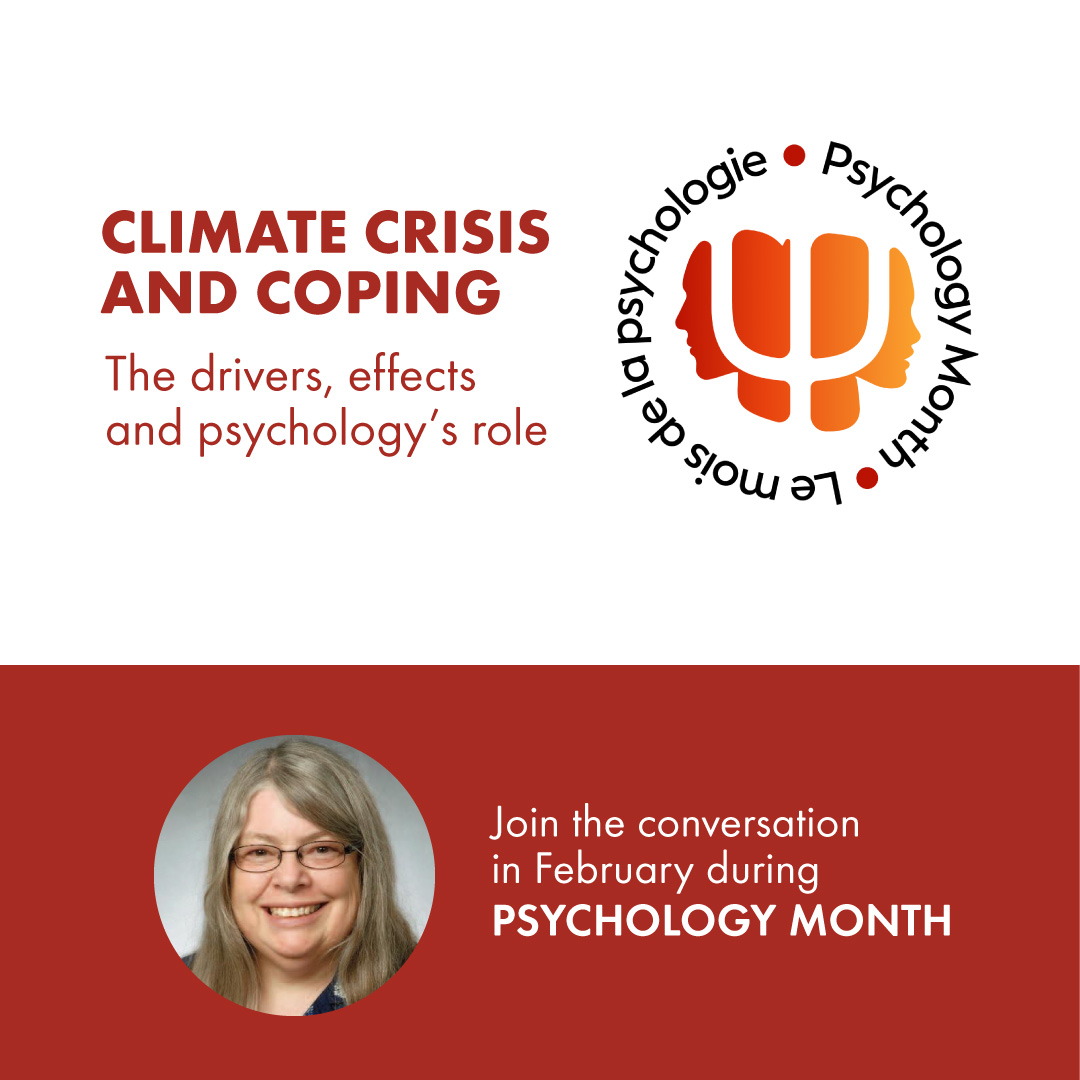
We kick off Psychology Month in February speaking with Dr. Katherine Arbuthnott about trust on the CPA podcast Mind Full. We tend to think of other people as self-interested, and we are therefore pessimistic about things like our ability to tackle major subjects like climate change. Dr. Arbuthnott is here to tell us this isn’t really the case – that most people are, in fact, willing to make sacrifices for the good of the communities and the people around them.
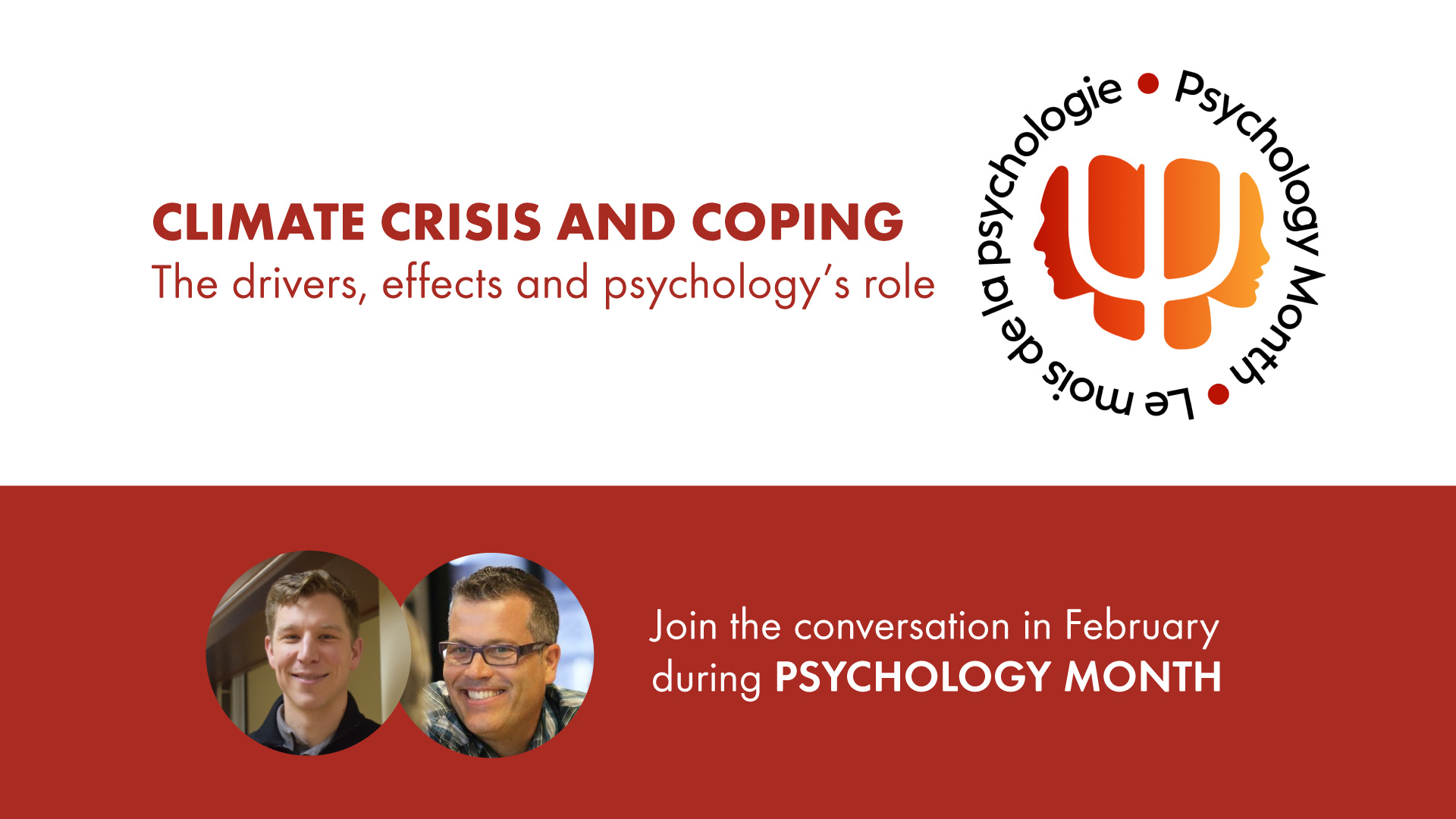
Dr. Todd Kettner and Dr. Kyle Merritt
Nelson, BC was right near some of the most extreme and devastating climate events of 2021. The heat dome and wildfires had a profound effect on the city and the surrounding area. Dr. Todd Kettner and Dr. Kyle Merritt stepped up to do something about it in their own practices and workplaces. Dr. Kettner is a practising psychologist and Dr. Merritt is an emergency room doctor. They are both part of an organization called Doctors and Nurses for Planetary Health, formed in the wake of the 2021 devastation.
In 2021, British Columbia spent late June suffering under a “heat dome”. Temperatures regularly reached 50 degrees Celsius, and by July 1st almost 500 wildfires were burning across the province, including the one that destroyed the town of Lytton. In Nelson, in the Kootenay region, psychologist Dr. Todd Kettner was living with his wife and children in a new housing community with a small ecological footprint. The day after the final home in that community was occupied, a fire sprang up a kilometre away. These eco-friendly buildings were now occupied by anxious homeowners as embers from the nearby fire landed on their brand new roofs.
At the Kootenay Medical Centre in Nelson, Emergency Room department head Dr. Kyle Merritt was seeing patients come in presenting symptoms associated with the wildfire smoke and the heat dome. Acute cardiac events are more common when there is wildfire smoke in the area, and other health issues can become more severe with intense heat. The hospital was not overwhelmed, but there was enough of a concern for Dr. Merritt to take an additional step – and to make headlines doing so.
“I met a patient who had to be admitted because of the heat during the dome. So I made a note, the way all doctors do, indicating what’s going on when you see someone, and in my note I indicated climate change as the underlying cause. The same way you’d say a person was a smoker all their life and now they have lung cancer. You don’t diagnose someone with smoking cigarettes, you diagnose them with lung cancer – but you might write down use of tobacco as the underlying cause.”
This move caused something of a sensation, as newspapers both locally and globally picked up the story of a doctor who had diagnosed a patient with Climate Change. Of course, this was not really what Dr. Merritt had done. One cannot be “diagnosed” with Climate Change, and listing the underlying cause is not the same as the diagnosis. But a clickbait headline remains a powerful force in our society, and the story spread like mint in my garden.
Author’s note - it might be time for us to update our idioms when it comes to the speed with which something spreads. Right now, almost all of those sayings involve either pandemic-type diseases or wildfire. It seems like the wrong phrase to use given the fact that we are still dealing with a global pandemic that has killed millions, and in this case are talking about wildfires that displaced thousands and caused several deaths of their own. And so I humbly suggest “spreads like mint in my garden”. Let’s make it happen!
The heat, the fires, and the devastating problems they caused prompted Dr. Merritt to join some colleagues in creating an organization called Doctors and Nurses for Planetary Health (DNPH). Health care professionals were seeing the direct effects of climate change on the health of the people they served, and thought they could do more. Since then the organization has expanded to include healthcare professionals of all kinds, including Dr. Kettner. They are a lobbying group, an advisory body, and a collective dedicated to making the fight against climate change a central part of their own practices in and around Nelson, B.C.
Nelson is a small city / large town in the Kootenays, with a population of about 10,000 and deep roots in the resource sector. Founded as a mining town 130 years ago, and maintaining strong ties to the forestry industry today, Nelson residents tend to feel a connection to the land around them in the way many small towns with picturesque surroundings do. Combine that with the influx of young, mostly liberal, Americans evading the Vietnam draft in the late sixties and you have the kind of town where establishing a collective like Doctors and Nurses for Planetary Health is a little easier than it might be elsewhere. As Dr. Kettner puts it, Nelson is going on “50 years of hippie-hood”.
Author’s second note – I really wanted to name this piece ’50 years of hippie-hood’ because I love the turn of phrase. I even promised, when I heard it, that I would do so. But I reconsidered at the last moment, because I am reticent to reinforce the harmful stereotype that climate action, and caring about environmental issues, is something ethereal that is solely the domain of aging hippies and young punk musicians. It is, of course, something that affects us all and something that people care about in all walks of life and across all cultural boundaries.
While the members of DNPH are environmental activists of one kind or another, it’s their position as healthcare providers that imbues their message with an authoritative tone. Dr. Kettner says “when we look at who people trust when it comes to the environment, it’s not politicians, or environmental activists or loggers or miners, it’s often healthcare professionals - nurses, or their family doctors.”
We’ve seen, over the past few years, an erosion in trust among the public when it comes to healthcare professionals. People protesting at hospitals, people disrupting life for everyone else over a false belief that the COVID vaccine is somehow responsible for people dying in greater numbers than COVID itself. While those people are the noisiest, they do not represent the majority of Canadians and doctors remain a profession that enjoys overall public trust.
This is especially true in Nelson. Another reason Dr. Merritt and Dr. Kettner and their group are able to produce results is that Nelson really is small. The people you play hockey with on Tuesday nights are the same people you see at the grocery store and the ones who reach out to you for professional help. In Dr. Merritt’s case, that means he has patients who have been under his care their entire lives. For Dr. Kettner, this means his practice and work is integrated into the community he has called home since he started his career as a psychologist nearly 25 years ago. Community connections create strong bonds, the kind that are tough to break. The kind that can weather the storm of online disinformation.
The DNPH group has been very effective in a number of ways (local infrastructure and transportation projects, reducing the footprint of their health system) but perhaps their biggest impact has been in making the connection between planetary health and human health. Recently they worked with the city to increase the delivery of electricity to homes while reducing the amount of fossil fuels in those homes. This not only benefits the environment, it improves the health of the people who are no longer living with emissions within their own walls.
Says Dr. Merritt, “you can’t have human health without a stable climate, healthy air, and healthy water. A lot of people aren’t making that connection all the time, and we try to think about it in everything we do”.
There are a lot of areas in every job where environmentally conscious and sustainable choices can be made. In healthcare-related settings, those choices almost always come with a health benefit as well. In Dr. Merritt’s case, it’s small things like ensuring the batteries used in the hospital are recycled, and bigger things like tackling the problem of anaesthetic gases and inhalers which include hydrofluorocarbons and chlorofluorocarbons that contribute a good deal to climate change.
“One of the advantages I have in working in primary care in a public system is that I get to interact with people from all walks of life, from cradle to grave within my community. It gives me a good opportunity to get to know what they’re going through. And in the emergency department, when events like wildfires or heat happen, it’s the most vulnerable people who are affected. And with mental health too – it’s people who have underlying mental health problems that get acutely exacerbated during these events, and they show up in the ER to compensate. Part of our role is doing advocacy for health, and climate change is now part of that.”
Author’s note number three. Dr. Kettner says that one of the things that keeps climate change top of mind for folks, and gets them to pay attention, is novel news and information. We’ve all heard a lot about polar bears and permafrost and the Great Barrier Reef for some time, and some have tuned out. Something new that might pique the interest of a person when you’re conversing could bring them back into the climate-aware headspace. Something like “hey did you know that anaesthetic gases are a significant contributor to ozone depletion and greenhouse warming?”
For Dr. Kettner, his involvement with organizations like DNPH allows him to share his expertise when it comes to the mental health effects of climate change. His work with the MIR Centre For Peace at Selkirk College has brought an additional lens of intersectionality with the climate crisis. Not only is there a crossover when it comes to health and mental health, there is a significant correlation between climate change and global peace, social justice, and inequality.
“I now feel like I’m focusing on the most important issues – the social determinants of health, greater access to mental health services for greater numbers of people, respect and reconciliation with Indigenous people. It’s where I want to focus a lot of my energy in the last 20 years of my professional career.”
Author’s note number four. While we were discussing Indigenous reconciliation, we spoke about the Haudenosaunee’s Seventh Generation Principle. It’s the philosophy they’ve abided by for hundreds of years, that states you are not only the steward of your environment for yourself and your offspring, but for their offspring and the generation after that and so on. Dr. Merritt shared what I think is an interesting thing to know – either for consideration in Canada or to one day help you win on Jeopardy! There is a new position that was created by the government of Wales in 2015. Sophie Howe completed the first term as Wales’ Future Generations Commissioner in 2023, the role is now held by Derek Walker.
There are several towns in the Kootenay region, and both Dr. Kettner and Dr. Merritt reference a sort of Springfield-Shelbyville type of rivalry between them. But this rivalry quickly disappears when it comes to achieving sustainable practices, and especially in the wake of the recent disastrous climate-related events. Dr. Kettner describes the situation as the wildfires of 2021 were abating.
“Teachers reached out to me from other towns around B.C. looking for resources to help their students with their anxiety when they returned to school after the raging forest fires that had sent them home for a month. That’s the kind of call I didn’t get as a one-on-one private practitioner seeing someone in my office for depression. Expanding our realm of influence to the public as well as to our patients is something I feel very strongly about.”
Stepping outside your immediate job always feels a little bit like a risk. It means doing something that may be outside your comfort zone, and risking a certain amount of venom from those inclined to oppose your initiative who demand you ‘stay in your lane’. It may feel a little less risky in a place like Nelson, B.C., but it still requires a little bit of daring. It’s a testament to the passion both Todd and Kyle feel, and to the immediate necessity of such action, that they have taken that step. And having done so has already made a significant impact.
Their DNPH group has been heavily involved with the city’s new Active Transportation plan, ensuring it is as sustainable and eco-friendly as possible. A number of their doctors and nurses present some of their advancements to neighbouring towns. The group is working with forestry experts on land adjacent to the city to decrease fire risk while increasing access for people to reap the mental health benefits of being able to go for a walk out in the woods. They are now being included in a lot of major decision-making, and their advice is sought on projects that have little to do with healthcare – except for the central thesis of Doctors and Nurses for Planetary Health. That is, that planetary health and human health are inextricably linked.
Author’s final note – while we were speaking, Dr. Kettner reminisced fondly about a series of TV commercials from his youth, which featured the Kokanee glacier in ads for Kokanee beer. He bemoaned the speed at which that glacier is now disappearing, an additional reminder of the devastating effects of climate change right there in their own backyard. In the course of this discussion, we discovered that Kokanee beer remains one of Canada’s best-selling brands to this day. Which surprised me, I didn’t think it was even being brewed any more, at least not since I was in high school and also saw those commercials. I thought that was interesting enough to add to this piece – Kokanee, it seems, has a great deal more staying power than I imagined it did!
Glaciers, sadly, may not have quite so much.
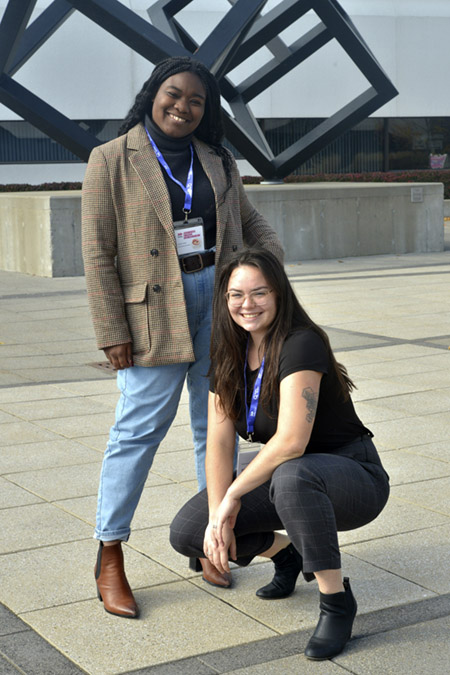
Marjolaine Rivest-Beauregard and Justine Fortin
Montréal psychology students Marjolaine Rivest-Beauregard and Justine Fortin created the podcast Sors de ma tête to combat disinformation and to make science accessible for non-scientists toward the beginning of the COVID-19 pandemic. They joined the CPA podcast Mind Full to discuss their work, which has branched out a little bit as they get ready to launch their third season.
Knowledge translation is a rare skill, not necessarily inherent in most people pursuing a scientific discipline. Being good at knowledge translation means you have to have the knowledge base in your subject matter, but also a communication style that can engage people outside that scientific bubble to want to learn more about that subject. Knowledge translation also requires an ability to take a 10,000-foot view of scientific information. What would regular people like to know? How do I explain this to them while still being as accurate as possible to the source material? What words might I use that would lose my audience, and what seemingly complex terminology and concepts might be grasped intuitively?
One of the best ways for people working in scientific disciplines to become good knowledge translators is – as it is with all skills that can be honed – practice. It was with that in mind that Marjolaine Rivest-Beauregard and Justine Fortin embarked on their passion project – explaining difficult psychological concepts and studies to the general public in an effort to combat online disinformation.
Justine and Marjolaine are about to launch the third season of their French-language podcast Sors De Ma Tête. Montréal psychology students and colleagues, they began this project in 2021 with an eye toward COVID and the disinformation surrounding it. They wanted to collect the data they had on COVID, then sit down with two other people. An expert to talk about the science, and someone with a large public platform to speak directly to people.
Justine is at UQAM, Marjolaine is at McGill, and they met thanks to the supervisor they had in common, Dr. Alain Brunet. Dr. Brunet of course became the first guest on the program (see the CPA’s podcast Mind Full, where the first guest was CEO Dr. Karen Cohen) to discuss the emotional reactions people were having to COVID and to lockdowns. The other guest on their first episode was Instagram content creator Cassandra Bouchard. Cassandra posts funny videos online and speaks about mental health issues – toxic relationships, quitting smoking, eating disorders – that sort of thing.
The process for choosing an online influencer to join Sors de ma tête is probably a more arduous one than the process for choosing the expert. After all, it’s clear who has the expertise in most subject matter – but for people who have a following and discuss mental health issues on their platforms, it’s a little tougher to narrow down who has both the competency and the communication ability to be part of the bridge to the public. Marjolaine says there are a few essential traits each person must have.
- They talk openly and often about mental health
- They are willing to speak openly about their own stories and experiences
- They are available on the day and time the podcast is going to be recorded!
Justine says they also look at the following of the people they invite. She says “we’re not known by people 18-35 years old, so people with large followings are great – our goal is to reach the most people we can”. She also says a lot of this comes down to personality and energy. She tries to find people with similar energy levels who match well in a public discussion like a podcast. Finding the right expert to pair with the right content creator can be a difficult exercise in itself, but can produce some very rewarding content. Says Justine,
“One of my absolute favourite episodes was the last one we did in 2022 [‘Trahison amoureuse avec Michelle Lonergan et Marie Gagné’]. We had so much fun, we were laughing the whole time, talking about betrayals we had lived through, the crushes we had as kids. It’s a bit of a sad subject but the conversation was light and super enjoyable.”
From here, Marjolaine’s main focus is on research. She hopes to get her doctorate degree and pursues research into the mental health effects of disasters and crises, with a focus on prevention. She is imagining a side gig as a crisis management consultant, someone who helps to mobilize the response to a disasters (the earthquake in Turkey, the recent tragedy in Laval) in a scientifically sound and evidence-based way.
Justine’s career path, at least as she sees it from here, is a little different. She is focusing on both research and clinical work, and hopes to one day open a clinic as a neuropsychologist. She really wants to continue working with people who have been diagnosed with cancer, and talks with passion about ‘chemo brain’ and the other issues affecting people in cancer treatment. She want to continue doing research as well, saying “I don’t want to be a professor, as such, but I’d love to keep doing research. Maybe in Marjo’s lab!”
It would be great to think that for years to come, these two partners and collaborators will continue to work together on projects big and small. The third season of Sors de ma tête will launch very soon, and while Justine and Marjolaine are cagey about the content this year, they let slip that climate change will be a big front-and-centre subject in 2023.
It’s unclear right now how long the podcast will last. Will it be a project they keep up until the end of school? The end of COVID? Maybe much longer? Only time will tell. The one thing we can say for certain is that people like Justine and Marjo, the people who have put in the time and the practice, will be the knowledge translators of the future. The people who can bridge the gap between scientists and the public, who can push governments to make decisions based on hard data and otherwise unknown studies. With the Sors de ma tête podcast, they’ve already spent two years doing just that.
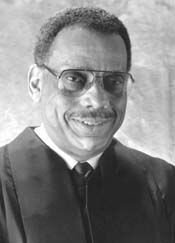
Dr. Herman George Canady
Herman George Canady has had a lasting influence on psychology, influencing theories like intergroup anxiety and stereotype threat. He was also one of the very early leaders in organizing a group of Black psychologists.
The current psychological theory of ‘intergroup anxiety’ describes a feeling of discomfort many people feel when interacting with people from groups that are not their own. A lot of that theory owes a great deal to Herman George Canady, whose work looked at Black students interacting with white examiners while taking IQ tests. If the examiner is white, and the Black child has experienced discrimination and prejudice from white people in the past, they are likely to be anxious and perform poorly on the test simply because it is administered by a person whose presence makes them nervous.
Dr. Canady’s study ‘The Effect of ‘Rapport’ on the I.Q.: A New Approach to the Problem of Racial Psychology’ was the first of its kind to look at intelligence tests through this lens and led to many further studies examining the effect of a distrust of White people on the test scores of Black children. In many ways, Canady was one of the first psychologists to focus research on the Black experience in the United States.
This lack of Black inclusion in research, and a lack of psychological knowledge for Black Americans in general, led Dr. Canady to lead a movement organizing Black psychologists. He wrote A Prospectus of an Organization of Negroes Interested in Psychology and Related Fields and sent it to fellow members of the American Teachers Association (formerly the National Association of Teachers in Colored Schools), proposing a psychology section within the ATA.
Canady presented his proposal at the ATA convention, held at the Tuskegee Institute, in 1938. It was unanimously approved – but then quickly derailed by the onset of World War II. In later years the cause would be taken up again when Black psychologists organized at an APA convention in 1968 to discuss their dissatisfaction with "psychology's exploitations and the white definitions for behavior that placed Blacks in a negative light."
Dr. Canady obtained his B.A., his Master’s, and his Ph.D. from Northwestern University. He later served 40 years as the chair of the psychology department at the West Virginia Collegiate Institute (now West Virginia State College) before his retirement in 1968. He died in 1970, but his influence is still felt in intergroup anxiety research, stereotype threat studies, and in the ongoing effort to move psychology out of a white-centric model.
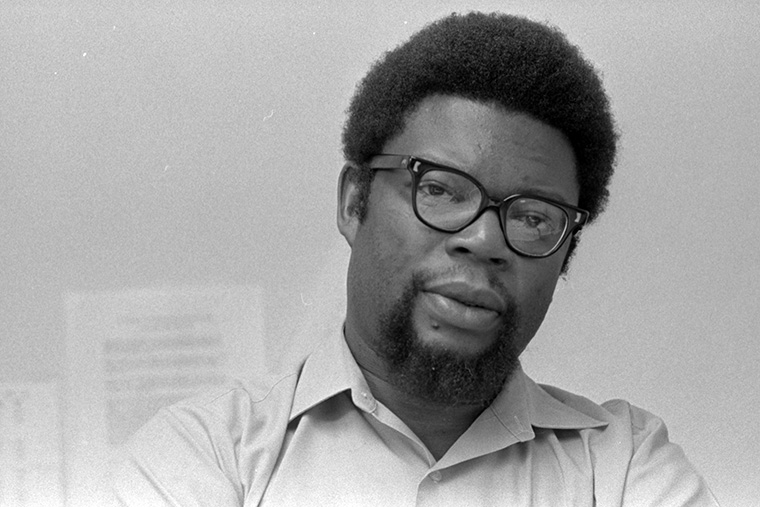
Dr. Robert Lee Williams II
Famous for three important books, and for coining the word ‘Ebonics’, Dr. Robert Lee Williams II spent his long and influential career combatting the racist stereotype that Black people were less intelligent than White people.
“Cars is whips and sneakers is kicks
Money is chips, movies is flicks”
- Big L., ‘Ebonics’
The word ‘Ebonics’ didn’t exist before 1973, when Dr. Robert Lee Williams II took the word ‘ebony’ and the word ‘phonics’, combined the two, and coined a brand new term for “linguistic and paralinguistic features which on a concentric continuum represent the communicative competence of the West African, Caribbean, and United States slave descendants of African origin." His 1975 book Ebonics: The True Language of Black Folks, traced the roots of Ebonics to Africa, arguing against the prevailing prejudiced opinion that Ebonics was just slang, or bad English.
Dr. Williams was born in Arkansas in 1930, and enrolled in Dunbar Junior College at the age of 16. He dropped out after only one year, having become quickly disillusioned upon being asked to take an IQ test. The results of the test suggested he was more suited to manual labour than he was to more intellectual pursuits. While this test had a huge impact on his self-esteem, racial bias in standardized testing later became the driving force behind some of his most important work. In particular, the Black Intelligence Test of Cultural Homogeneity, or BITCH-100, which he created in 1972 to account for the cultural factors affecting Black Americans differently than White Americans.
Dr. Williams obtained his Ph.D in clinical psychology in 1961 from Washington University, and in 1968 was a co-founder of the Association of Black Psychologists, later serving as its second President. The ABP was created as an alternative to the American Psychological Association, which was criticized for intentional and unintentional support of a structurally racist American society. The ABP’s membership saw themselves as “Black people first, psychologists second”.
He went on to found the first department of Black Studies at Washington University, where he worked as a professor of psychology, African studies, and African-American studies from 1970-1992. He continued to maintain a high profile through media appearances supporting his books – 1981’s The Collective Mind: Toward an Afrocentric Theory of Black Personality, 2007’s “Racism Learned at an Early Age through Racial Scripting”, and 2008’s History of the Association of Black Psychologists: Profiles of Outstanding Black Psychologists.
Dr. Williams was married to his wife, Ava Kemp, for 70 years until she died in 2018. He passed away in 2020 at the age of 90. He had eight children, four of whom went on to become psychologists.
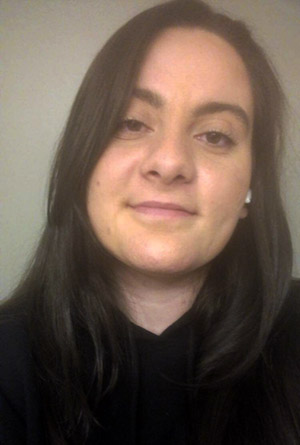
Nardeen Yalda
Our podcast Mind Full spoke with Nardeen Yalda and her professor at the University of Western Ontario, Dr. Leora Swartzman. Dr. Swartzman has created a program to pair students with community organizations to implement change on the ground. That program led Nardeen to working with organizations helping the homeless.
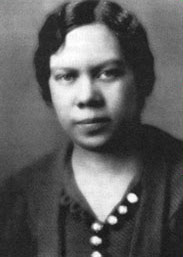
Dr. Ruth Winifred Howard
One of the first Black women to earn a Ph.D. in psychology, Ruth Winifred Howard trained Black nurses and worked with children and youth during her long and exemplary career.
There is some debate as to who was the first Black woman to obtain a Ph.D. in psychology. Some say it was Inez Beverly Prosser, who received her Ph.D. in 1933 from the University of Cincinnati. Others think it was Ruth Winifred Howard, since they consider a psychology Ph.D. to count only if it comes from a psychology program – she graduated in 1934 with a doctorate in psychology and child development from the University of Minnesota. There is no record of whether either woman cared at all about the distinction.
Ruth Winifred Howard was born in 1900 in Washington D.C. Her father was the minister at the Zion Baptist Church and was heavily involved in many community initiatives. Ruth would later say this example was what led her to desire a career helping others, and led her on the path to becoming a psychologist. That path began at Simmons College in Boston, where she majored in social work and earned a Bachelor’s Degree in 1921. It ended at the University of Minnesota, where she obtained her psychology Ph.D. 13 years later.
For her doctoral research, Dr. Howard studied triplets. Specifically, she launched the most comprehensive study ever done on triplets, studying more than 200 sets ranging in age from birth to their 70s. For reasons yet unknown, it took more than a decade for that research to be published, in 1946 in the Journal of Psychology and in 1947 in the Journal of Genetic Psychology. By then, she had married fellow psychologist Albert Sidney Beckham and moved to Chicago.
With her husband, Dr. Howard opened a private practice where she worked with children and youth, while working as a psychologist at the dated and terribly-named McKinley Center for Retarded Children. She was also the staff psychologist at the Provident Hospital School of Nursing, training Black nurses, and was a psychologist for the Chicago Board of Health until 1972.
In 1964, Ruth’s husband Albert died. She kept working for a few more years, both in private practice and with the Chicago Board of Health. Dr. Ruth Winifred Howard died in 1997, just a few days shy of her 97th birthday, having left an important legacy. More than just a pioneer, paving the way for others to follow in her footsteps, Dr. Howard’s work made a marked difference in the lives of hundreds of children in Chicago and around the world.

Nancy Tangon
Nancy Tangon is a CPA student representative at the University of Alberta. Her South Sudanese family has played an enormous influence in her life, including her decision to pursue a career in psychology.
With her friend Priscilla Ojomu, Nancy created the online forum Canada Confesses, where they collect anonymous testimonials from people that shine a light on the racism that exists under the surface in Canadian society. They spoke with the CPA podcast Mind Full about their project. https://soundcloud.com/user-389503679/mindful-9-canada-confesses-01162023-mixdown-1/s-Y9IhuOvB5gY
“We did a three-hour boot camp over Zoom about how to create a presentation and become a better public speaker.”
The first lesson, when it comes to creating a presentation, is not to make that presentation three hours long. A boot camp though? That can be as long as you like. In this case, Nancy Tangon and her CPA Student Representative colleagues at the University of Alberta chose the boot-camp format – and the Zoom format – out of necessity. Because of the pandemic, many things have become more difficult. Finding ways to connect with people virtually has resulted in a fair amount of chaos – and a ton of creativity as well!
Such was the case when Nancy and her fellow student Priscilla Ojomu were looking to create a project. Pre-pandemic, they met in On-Site Placement’s Diversity Awareness & Skill Building Youth Program on campus – in-person, if you can remember when we used to do such things! Through that program they learned a lot about issues affecting diversity in a number of settings, and were tasked with creating a project at the end of the course. Unfortunately, by that time COVID-19 had arrived and the project would have to take a virtual form.
Over the course of the pandemic awareness of many issues has increased – particularly those dealing with discrimination and inequality. In Canada, many of us felt isolated from those issues – like they were a uniquely American thing, or that we were somehow better off. As Priscilla says, “a lot of Canadians aren’t aware that these issues exist in huge numbers within Canada”. So how could she and Nancy help to increase that awareness?
Their answer was Canada Confesses. A project that started out small but has since taken on a much larger audience and significance. The concept was simple. There’s a disconnect between what Nancy and Priscilla learned in their program, as well as their own lived experiences, and what fellow Canadians understood to be the situation. So they created a place where marginalized people could tell their stories anonymously, access resources to help them, and help other Canadians understand the reality of what’s happening in our country. It’s not the anonymous poster who is confessing, although they call the posts ‘confessions’ – it’s Canada itself that is confessing to the ongoing harms and structural marginalization of many communities. You can hear all about Canada Confesses on the CPA podcast Mind Full.
As the co-creator of Canada Confesses, Nancy has not yet submitted a ‘confession’ of her own – she’s very busy! In addition to running a suddenly successful online platform which continues to grow by leaps and bounds, she is also a fourth-year psychology major and biological sciences minor at the University of Alberta. She maintains a strong presence in the CPA, with two years as a Student Representative on the campus and a significant role on the CPA’s human rights and social justice committee as one of the leaders of the subgroup for ableism and disabilities.
“I was a little bit intimidated to [join the Human Rights and Social Justice committee]. Everybody who’s a part of it is either a grad student or a professor, and at first I felt a bit like the undergrad student tagging along. But it’s been really great! I got to learn a lot from Dr. Ada Sinacore and Dr. Laurie Ford, who’s also a part of our subcommittee.”
Nancy, undergrad or not, brings a lot of experience to the CPA board committee – and to her life, her studies, and her activities. Much of this stems from her family and her community, with whom she is very close. Her family on her father’s side is from the Bari tribe in South Sudan, a place Nancy has been able to visit only once. She keeps up contact and correspondence with her family who remain there, and also maintains strong ties to the South Sudanese community in Edmonton.
“The South Sudanese community in Edmonton is fairly large, I know a lot of people here – especially compared to when my family used to live in Halifax. I even see some of the community members in my classes, which is really cool. When I decided to go to university, I wanted to do something amazing in my community. In the South Sudanese community, psychology is very interesting to a lot of people.”
Her family, and her community, were some of the factors that shaped Nancy’s desire to go into psychology in the first place – and even had a guiding hand in deciding on some of the courses she took once she got there. Nancy’s family loves to talk about their dreams. She says, “when I wake up I have to talk about my dreams. I talk about it to at least five people before I start my day! I have to analyze it just a little bit, I have to get someone else’s interpretation, and I absolutely love dream analysis.” Of course, she felt she just had to take that particular psychology course before she graduated, and now speaks excitedly about the ‘subjective’ and ‘objective’ levels of dream analysis.
It didn’t take long for Nancy to determine that psychology was the right program for her – or in which direction she wanted to go with it.
“I was inspired by my very first professor on my very first day. Her name is Dr. Peggy St-Jacques. She was pretty new to the university at the time, and she was doing research in memory. I said, I don’t know exactly what I want to research, but that is certainly what I want to do as a lifelong career.”
Nancy is now well on her way, working as a research assistant and planning for a future where research is part of her every day. She’s particularly drawn to developmental psychology, and hopes to work with pre-school children between the ages of three and five. It will be a long road, but Nancy has the determination, the ingenuity and the curiosity to make it a successful one. And when she does, it will be another in a long line of successes that started right there in Edmonton.
“When I started working on Canada Confesses, it was almost impossible to see where we would end up. I’ve had the chance to meet so many people working in the same field, and to interact with other projects online. Now, I have a best friend for life, an amazing team, and so many things to anticipate for the future.”
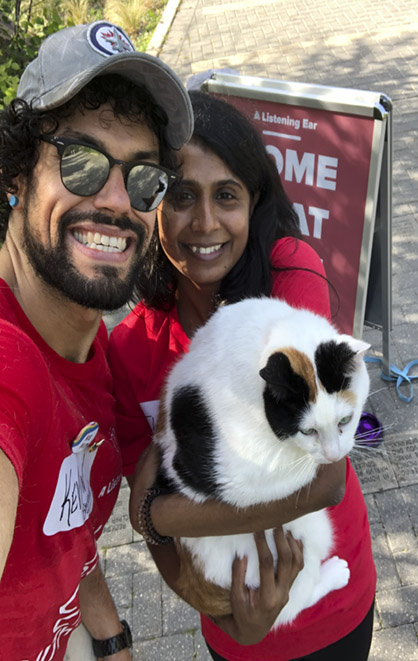
Kevin Prada
Kevin Prada is a student at the University of Manitoba, where his research focuses on the difficulties faced by the French-speaking 2SLGBTQ+ community in Manitoba.
Kevin and his colleagues, including Thilini Dissanayake, started an initiative in their area called A Listening Ear. They joined the CPA podcast Mind Full to explain the project. https://soundcloud.com/user-389503679/psychology-month-kevin-prada-and-thilini-dissanayake-lend-a-listening-ear/s-Ze0rXFQvsaN
“French is a pretty binary language. It’s something you maybe don’t think about, but how do you become gender-neutral in a language that depends so heavily on a gender-binary?”
We hear a lot about ‘intersectionality’ these days, referring to the way social categorizations interplay with one another. An individual, or a group, can be connected to others based on their race, their sexuality, their gender, or their socio-economic status, among myriad further distinct, yet inextricable identities. As such, each person’s identity is unique, but each connects, intersects, and overlaps with others, leading to unique forms of oppression or stigmatization for some, privilege for others, or a mix of both for others still.
Such is the case for all of us, but few of us are as keenly self-aware of such intersectionality as is Kevin Prada – both personally and in his research. Kevin is a student in the psychology honours program at the University of Manitoba. A queer Franco-Manitoban, Kevin has long seen the gaps in the Manitoba mental health system for both the 2SLGBTQ+ community and the French-speaking community. This led him to collaborate on his first major research project[i], one that earned him the Ken Bowers Student Research Award from the CPA’s Clinical Psychology Section.
His research focused on both of those identities – 2SLGBTQ+ communities and official language minority communities in Manitoba. In the first study of its kind in Western Canada, Kevin and his colleagues launched an exploratory analysis into the needs of doubly-minoritized French-speaking 2SLGBTQ+ Manitobans. Initiated by the Collectif LGBTQ du Manitoba, whose first mandate was to collect data about the needs of this very specific community, this community-based project was conducted by researchers at Université de Saint-Boniface.
“Before we start doing anything for a community we’d better understand where they’re at, what their needs are, and what their experiences are in terms of discrimination and stigmatization. We know that minority Francophone populations in Manitoba have lower indicators of health than the general population. We know similar trends have been observed across the board with queer populations in Canada and abroad. When the two identities are put together, it stands to reason that those problems probably compound.”
This has always been planned as a multi-tiered research project. Kevin and his colleagues have completed Phase One, surveying 80 respondents over the age of 18. Phases Two and Three have already begun, focusing on school and family contexts, to determine both the needs of queer and questioning Francophone minors in school settings, and also to examine the transition to parenthood for queer families in an official language minority context. This has led to many opportunities for Kevin to speak at professional development days for Francophone and French-immersion schools and school districts, where he says,
“Many staff are ready and willing, and want to build proactively queer-friendly classrooms, but don’t always know where to start. Invaluable questions and discussions have ensued, which show me how important it is to discus these sometimes-complex issues with folks in an open and non-threatening way, especially with an eye toward the potential implications within school environments.”
When intersectionality is approached in the right way, there is often a ripple effect – sometimes one that is by design, sometimes an unintended one that comes as a surprise. For Kevin, these ripple effects have been overwhelmingly positive, affirming, and a reinforcement of the direction he wants his career to take.
“We now have folks in Alberta and elsewhere who are starting with our research project to create their own in their own province. So the impact has been even greater than we’d expected. And for myself, as a queer Franco-Manitoban student and researcher, to be able to have done this for my community was really life-giving. We also really put an emphasis on ensuring that this would be by the community, for the community, and from the community. Not only were community members involved at every step (myself included), but they were also the first to hear what we found. We conducted two community engagement meetings where only people from our community were invited. Following one of these, one participant emotionally shared that ‘this is what we’ve known and been saying for decades – now our experience is reflected in that data’. It was kind of a cathartic experience for a lot of people.”
Kevin’s big goal, overall, is to work with minority communities. To ‘hear the unheard and see the unseen’, as he puts it. This feels like a personal mantra to him, the kind of thing he says to himself before starting a project or taking the next step. The kind of thing that he will one day have embroidered and framed and placed on the wall across from his desk as a constant reminder of why he’s doing what he does.
“Using intersectionality as one of the major frameworks for this study was really important. Understanding that a French-speaking queer person cannot be understood by just looking at their Francophone identity, or just by looking at their sexual or gender diversity. It’s ‘both-and’. Those two identities AND their age, AND their socioeconomic status, AND their health, whether they are a visible minority, the list goes on. In fact, we found there was a fairly large group of respondents who felt welcome neither by the French-speaking community because of their sexual orientation or gender identity, OR by the 2SLGBTQ+ community in Manitoba because they’re French-speaking.”
Of course, there are many language minorities in Manitoba besides French. In a project completely unrelated to this research, Kevin and his colleagues Saeid Maghsoudi, Thilini Dissanayake, and Aman Mir started an initiative called ‘A Listening Ear’, where they set up booths around Winnipeg to converse with complete strangers in NINE different languages – enticing them to stop for a chat by displaying, for example, a Sri Lankan flag. The effort was a tremendous success, and you can hear more about it on the CPA’s podcast Mind Full.
This is the kind of outreach Kevin is making his brand. He felt first-hand, from a young age, how important reaching out could be and how lonely life could be when no one extends that hand. This is one of the reasons he chose psychology as a career path.
“I grew up in a home that had fairly significant psychological obstacles, especially with my mother. I saw a failure in the system when I was just this little boy who nobody bothered to ask ‘hey, how are you doing?’ In my household, there were multiple suicide attempts, manic episodes, and through it all nobody took a step back and said, ‘oh my God there’s an 8-year-old boy here – is HE okay?’ In retrospect, I saw all this and figured if I went through it I’m sure I’m not the only one. So my first desire to get into psychology was to kind of make sure that the collateral impact of mental health issues is top of mind, especially in families who might be struggling with issues of this nature.”
As he grew up, he saw more and more failures in that system – for 2SLGBTQ+ youth, for Francophone communities, and especially for those like him who lived at the intersection of the two.
“I never had a chance to speak to a queer person growing up, never mind a queer psychologist. The first time I ever met a queer counselor was a huge experience for me, and I only got to access this support when I was 27. So to be able to do something for a marginalized community, especially within the psych discipline which has historically not been super-friendly with queer folk, is exciting.”
Kevin’s ultimate goal is clinical work, where he can meet people, get to know them, and offer culturally competent clinical support. He does not know of any practicing French-speaking clinical psychologists in Manitoba, has not encountered any openly practicing queer clinical psychologists in his province, and highlights the extreme difficulties in the province just obtaining information on queer physical and sexual health in French. There is definitely a lack of representation and, as his research demonstrates, a need for more culturally competent services in Kevin’s immediate area. He wants to be one of the first to provide those services.
“With the right tools, mindset, and adequate understanding of trauma and minority stress, anyone can be a good clinical psychologist with a queer person. But it brings it to another level when you’re actually speaking from a place of personal experience.”
The French language, just by the nature of the language itself, makes some communication difficult for the 2SLGBTQ+ community. When even a table, or a propellor plane, or a block of cheese are assigned either a masculine or a feminine gender, it can create a bigger hill to climb for those people who identify as neither. In English, we use ‘they’ as a pronoun that can be understood by everyone. In French, they’ve proposed brand new pronouns, with ‘iel / iels’ being the most commonly used. However, to this day those new words have still not been officially accepted by the Académie Française.
Understanding our unique identity through an intersectional lens can be an empowering or disenfranchising, oppressive or uplifting, confusing or clarifying journey. In many cases, it is all of these things. Navigating those waters is no easy task, especially for those whose intersecting identities are both marginalized and in conflict with one another. Kevin’s personal experience, his direct involvement in affected communities, and his mantra - ‘hear the unheard and see the unseen’ – make him well-suited, and well-equipped, to be on the vanguard of the change Manitoba so desperately needs.
[i] Living in a liminal space: Experiences of 2SLGBTQ + official language minority Canadians during the COVID-19 pandemic
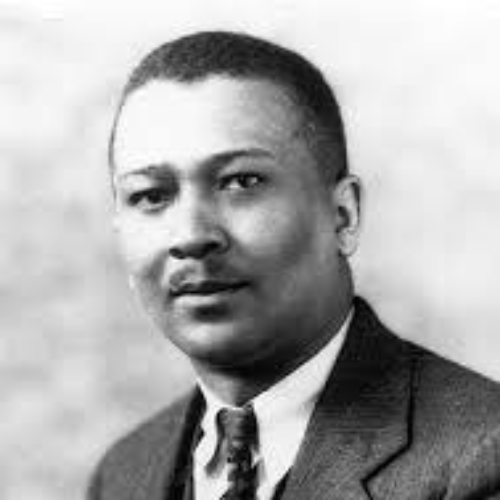
Dr. Francis Cecil Sumner
The first Black person to earn a Ph.D. in psychology, Francis Cecil Sumner spent his career working to elevate African-American education through more funding and more teaching of Black history.
The first Black person to receive a Ph.D in psychology, Francis Sumner was born in Arkansas in 1895. His parents worried about the quality of the education young Francis was receiving at his local elementary school, and so they taught him at home from what books they had available. When he applied to Lincoln College, a historically black university now known as Lincoln University, his application cited ‘private instruction in secondary subjects by father’ as he did not have a high school diploma.
Dr. Sumner passed the entrance exam and began his schooling at Lincoln at the age of 15. At 19, he graduated as valedictorian with a degree in philosophy. He moved on to Clark University for a second bachelor’s degree, where he became part of a mentor-mentee relationship with then-President of Clark, the pioneering psychologist G. Stanley Hall.
Sumner was drafted into the US military in 1918 and served in Germany in World War I before returning to Clark to complete his doctorate in 1920. Then, as now, psychological science was very Eurocentric, and Dr. Sumner focused on dismantling the racism and bias influenced by that Eurocentrism. Specifically, the studies at the time that purported to show intellectual inferiority in African-Americans. He tackled inequality in the judicial system and unequal outcomes in mental health between people of different races.
In 1939, his application for membership in the Southern Society for Philosophy and Psychology was rejected, after the SSPP changed its bylaws for the express purpose of excluding a Black member. Other members of the society threatened to resign if Dr. Sumner was not accepted, and his application was eventually improved, with the leadership of the society blaming a secretary.
From 1928 until his death, Dr. Sumner served as the chair of the psychology department at Howard University, a historically Black research university in Washington D.C. While there, he taught many Black psychology students including Kenneth Bancroft Clark, an influential leader in the civil rights movement and the first Black president of the American Psychological Association.
Dr. Sumner’s legacy endures to this day, as his lifelong efforts to elevate African-American education through more funding and more teaching of Black history and the Black experience have influenced modern education in many ways. Upon his death, he was memorialized with tributes of all kinds, including some that referred to him as ‘Howard’s most stimulating scholar’ and others that called him the ‘Father of Black Psychology’.
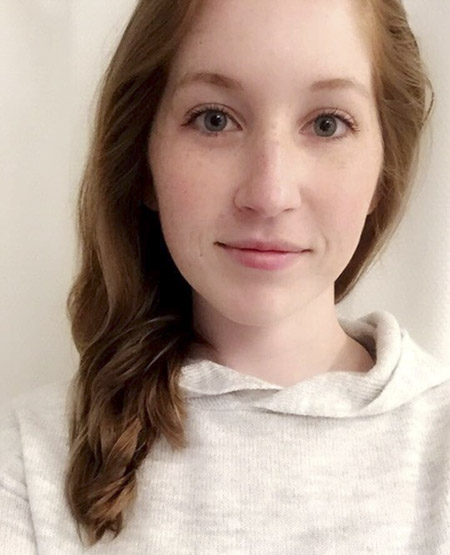
Sam Ayers-Glassey
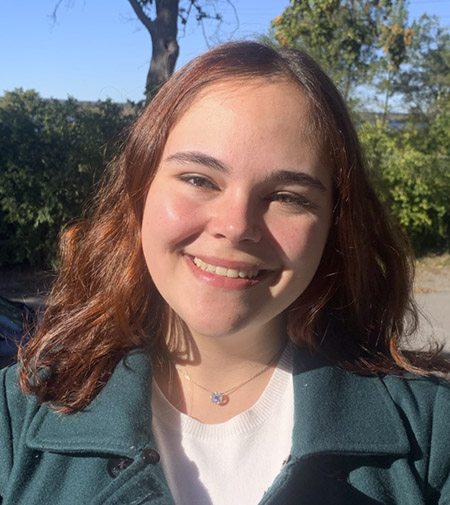
Naya Goguen
For many students in the CPA Student Section Mentorship Program, the most valuable advice a mentor can provide is around applying to grad school. For Naya Goguen, the most valuable advice she got from Sam Ayers-Glassey was quite the opposite.

Maya Atlas
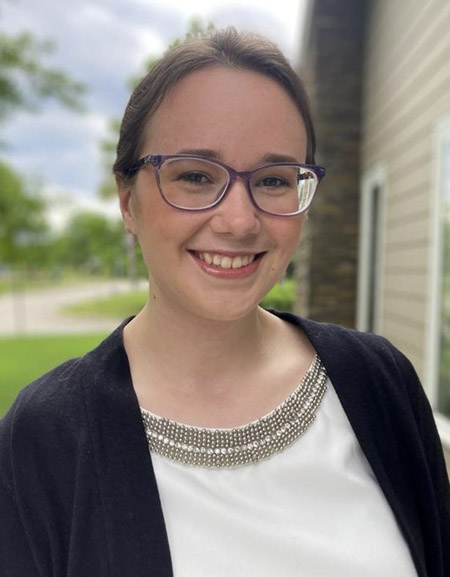
Kiana Chubey
Mentor Maya Atlas nominated her mentee Kiana Chubey for Student Section Mentorship Program Mentee of the Year. Although their paths to studying psychology were vastly different, the two have a strong connection based on similar goals.
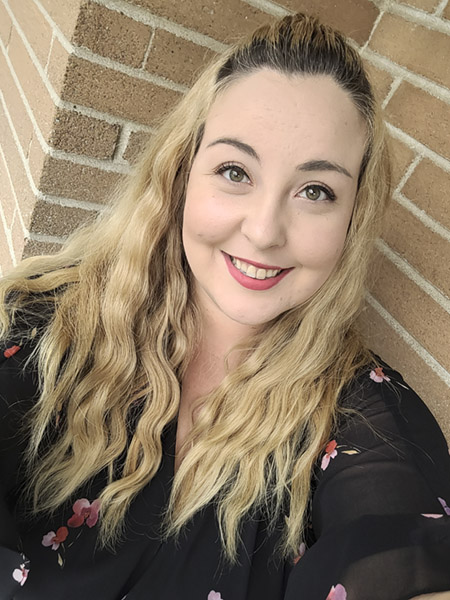
Linnea Kalchos
Linnea Kalchos is the new Chair of the Student Section of the CPA. She is hoping to continue, and expand upon, the Student Section’s legacy of social justice work.
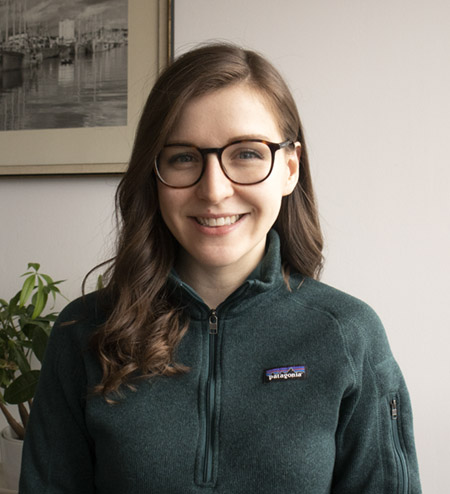
Kayla Hollett

Liran Leidershnaider
Kayla Hollett has been a mentor in the CPA Student Section Mentorship Program for a while, and this year nominated her mentee Liran Leidershnaider for the Mentee of the Year Award. Their connection is strengthened by the virtual platform with which they interact.
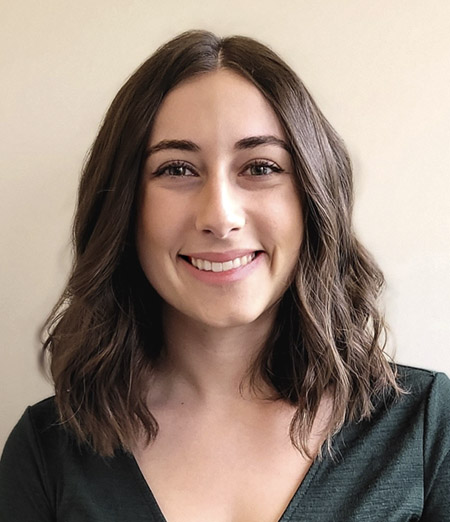
Stephanie Woolridge
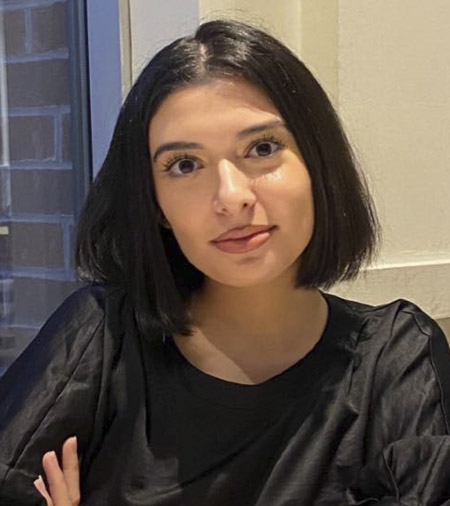
Ava Homiar
Stephanie Woolridge was the runner-up for the CPA Student Section’s Mentor of the Year award. Her connection with mentee Ava Homiar is profound, and goes much deeper than just academics.

We speak with members of the Sexual Orientation and Gender Identity section about issues facing the LGBTQ+ community during the pandemic, the history of the fight for marriage equality and the more recent effort to ban conversion therapy. We also learn a new term: ‘Femmephobia’.
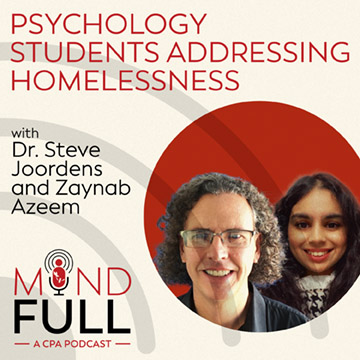
Dr. Steve Joordens gave his first-year psychology class a group project – bust some myths around homelessness by collaborating with a local organization. Zaynab Azeem was inspired to work with Blankets for TO, and has turned that inspiration into a podcast of her own!
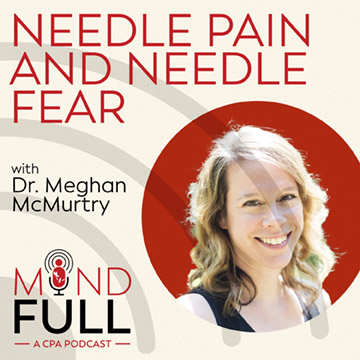
Dr. Meghan McMurtry joins Mind Full to talk about needle fears, needle pain, and coping strategies for all of us who experience one or the other. This includes advice about vaccinating infants and very young children.
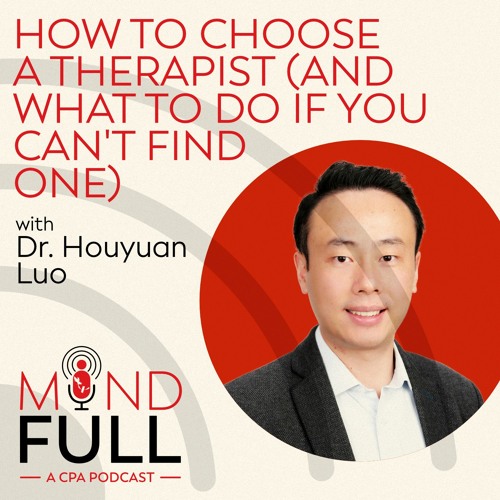
Dr. Houyuan Luo joins Mind Full to talk about his own struggles during the pandemic, and how he tries to avoid burnout. We also discuss options for people who are able to access therapy, and for those who can not.
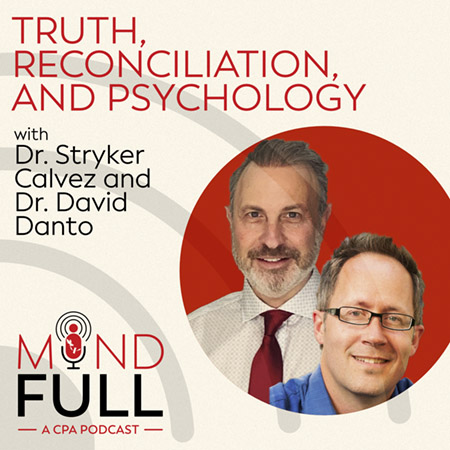
Dr. Stryker Calvez and Dr. David Danto talk Truth, Reconciliation, and the role of Psychology from the perspective of an Indigenous psychologist and an ally. We discuss Indigenous ways of knowing and how the apply to psychology, as well as the genocide perpetrated by Canadians against our Indigenous people.
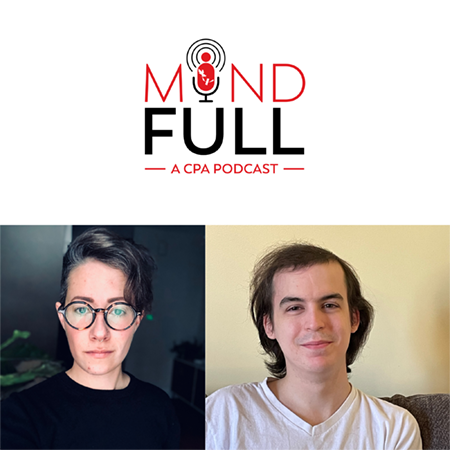
Dr. Jesse Bosse is a gender-queer psychologist in Ottawa who works primarily with trans, non-binary, and gender-diverse people. Aida is a young trans person who is currently undergoing Hormone Replacement Therapy. We spoke to them both about the issues confronting gender diverse people, human rights issues, and the effects of the pandemic on this population.”
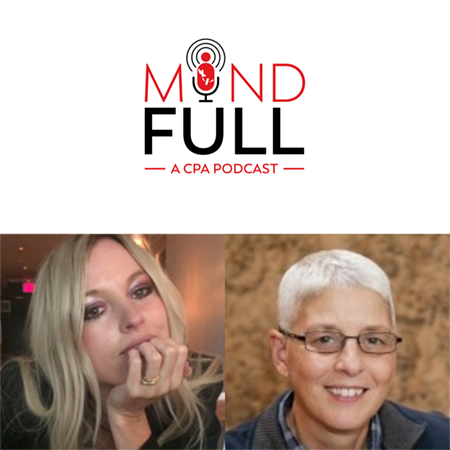
Dr. Ada Sinacore is an expert in human rights issues surrounding gender diversity. Dr. Keira Stockdale is an expert in the psychology of criminal justice. They are part of a group working to put out a statement on gender diversity amid an increase in violence and legislation targeted at the gender diverse community. We discuss LGBTQ2s+ rights in relation to education, the criminal justice system, and the discipline of psychology itself.

Canadian Indigenous Artist Betty Albert has created a design for a T-shirt that the CPA sold at the 83rd annual convention in Calgary. All proceeds went to an Indigenous charity working towards healing for Indigenous communities in Canada. We discuss art, residential schools, and the remarkable capabilities of Photoshop!
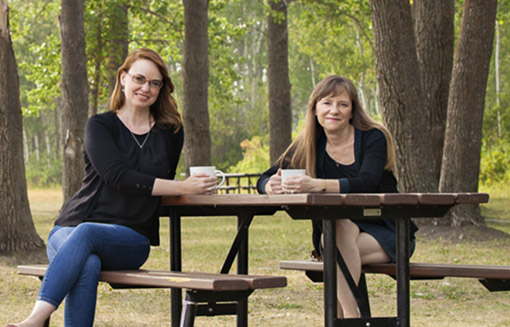 Drs. Karen Dyck and Melissa Tiessen started the Intentional Therapist initiative to help female practitioners with self-care. They will be hosting a pre-convention workshop at the 2022 CPA Convention in Calgary.
Drs. Karen Dyck and Melissa Tiessen started the Intentional Therapist initiative to help female practitioners with self-care. They will be hosting a pre-convention workshop at the 2022 CPA Convention in Calgary.
Intentional Therapist
It was September 2007 and Melissa Tiessen had just begun her year long post-doctoral residency with the University of Manitoba’s Rural and Northern Psychology Programme, where her primary supervisor was Dr. Karen Dyck. Melissa was no stranger to rural and northern living, as she grew up in a northern Manitoba community. Karen was one of the first psychologists hired into the Rural and Northern Psychology Programme in 1997. Although Karen wasn’t raised in a rural or northern community, she was from Manitoba, and her interest in rural and northern psychology came about during the completion of her doctoral degree in clinical psychology at the University of South Dakota; a program that specialized in community and cross-cultural psychology. Little did Melissa and Karen know at the time, that this would be only the start of a long-term relationship that would move from supervisor-supervisee, to colleagues, to friends, and eventually to co-founders of Intentional Therapist.
During the 15-year span of their relationship, Dr. Melissa Tiessen and Dr. Karen Dyck shared many professional experiences, from working within the public health system in rural Manitoba to eventually moving to private practice. Although Melissa left Manitoba in 2010, they continued to connect with one another and have in-person visits when their travels took them to similar locations. It was during one of these visits in Manitoba in 2018, when Melissa and Karen began discussing self-care, burnout, and many of the issues affecting psychologists and other mental health professionals. Having worked in both the public and private healthcare systems, they observed and experienced firsthand, some of the challenges mental health professionals can experience related to self-care. They reflected on how these challenges can be similar across all mental health professionals but that there may also be some unique challenges related, for example, to the work setting (e.g., rural and northern mental health clinicians may experience equally impactful but different challenges than their urban counterparts) and gender.
And so it was that Melissa and Karen came up with the idea of The Intentional Therapist, an online community that provides resources, workshops, newsletters, and – most importantly – connections to other female mental health professionals. The reason they chose to focus on female practitioners specifically is that, in addition to the pressures and stresses that affect all mental health professionals, women face a few extra hurdles. Melissa explains,
“The biggest factor that affects female mental health professionals in terms of self-care challenges is gender socialization. Many women grow up from the day they’re born being exposed to different messages than those who identify as male. These messages are very much about taking care of others, doing for others, and prioritizing others. Sometimes it can be good to put others’ needs before your own, but that can create a scenario where a girl becomes a woman and goes into a care-taking profession. She has been receiving these messages about taking care of others in her personal life, and now it is part of her professional life as well. It can then become very difficult to do what one needs to take care of oneself.”
This gender socialization has become even more scrutinized during the past two years during the pandemic. Women, including those with high-paying professional careers, have often found themselves taking on more archaic gender roles. The work of men has, in many cases, become more prioritized while the work of women becomes diminished in order to take on caregiving roles for children or elderly parents.
Karen is a caregiver to elderly parents as well as a clinical psychologist in private practice in Oakbank, Manitoba. She says that work and caregiving are not the only places where there is a discrepancy. Leisure time for women has also, historically, been tied to their partner’s leisure time. As men’s status and income improved, they had more access to leisure. Women’s leisure then became tied to that of their partner, and they were often not entitled to their own spare time on their own terms. Leisure activities being so important for self-care, this can make taking time for oneself even more difficult.
So what does that self-care look like? For Karen and Melissa it comes down to the four C’s. The first is ‘connection’ (like the network of like-minded mental health professionals that form the Intentional Therapist). The second is ‘compassion’ (toward oneself, toward your clients). The third is ‘courage’ (meaning doing something that may cause you discomfort). For many mental health professionals, any discussion around money can feel awkward. But raising your fees, for example, might be a necessity. Having that initial uncomfortable conversation can make future conversations of a similar nature much easier.
The final C is ‘creativity’. As Karen says, self-care involves a lot more than just chocolates and a bubble bath. Creativity and a playful attitude can help people find humour in their every day lives and discover activities that help them cope. These activities, and this outlook, is different from person to person. While Karen and Melissa happen to share a love for cake decorating, that certainly isn’t the case for everyone.
For some it might be running, for others painting, and for others it may be weaving plastic bags into doormats (like Melissa did during the pandemic). The important thing is that self-care is intentional. That it is made a priority, and that it remains important day in and day out. Hence The ‘Intentional’ Therapist. Melissa and Karen’s initiative is meant to be pro-active, to reach practitioners before they start to see the symptoms of burnout. Their newsletter, workshops (including a pre-convention workshop at this year’s CPA Convention), and network of female mental health professionals is intended to serve as a kind of regular reminder. You are important too – and in order to provide great care for your clients, you must also take great care of yourself.
Psychology Month Profile: Dr. Charlene Senn and Dr. Lorraine Radtke, Section on Women And Psychology
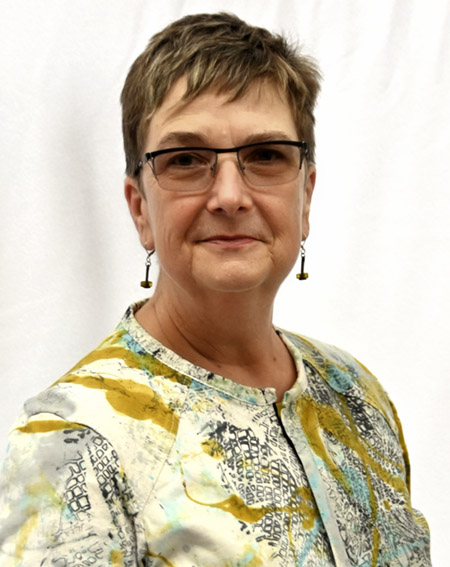
Dr. Charlene Senn
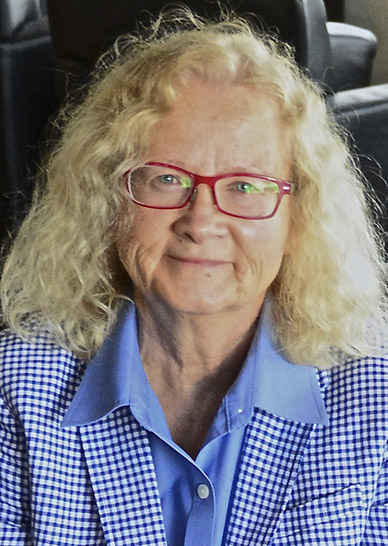
Dr. Lorraine Radtke
Dr. Charlene Senn, and Dr. Lorraine Radtke, Section on Women And Psychology
The CPA’s Section for Women And Psychology (SWAP) creates a community of researchers, teachers, and practitioners interested in the psychology of women and feminist psychology. Today’s Psychology Month feature talks to Dr. Lorraine Radtke and Dr. Charlene Senn about the work they’re doing in this space.
SWAP (Section for Women and Psychology)
The year is 1976. Martha Lear has just coined the term ‘second wave feminism’ in New York Magazine, and that movement is in full swing. In the United States, Title IX has just passed, prohibiting sex-based discrimination at any school that receives federal funding. In Sweden, Group 8 has just been founded, advocating for equal pay, kindergarten expansion, and a 6-hour work day. And in Canada, the CPA is hosting their annual convention at a hotel in Montreal.
There is a different hotel across the street from the CPA convention. While that hotel is unaffiliated with the one where the convention is taking place, the two are connected by an underground tunnel beneath the street. While the convention is in full swing, many women are stealing away, passing quietly through that tunnel to have a clandestine meeting of their own just across the street. These graduate students and untenured feminist researchers are there to present papers - to one another. These papers are on topics relevant to the psychology of women and girls, and they have one more thing in common. When they were submitted to the CPA for inclusion in the convention, they had all been summarily rejected.
This off-site, convention-adjacent meeting became known as the Underground Symposium. Not so much because it was clandestine – there was in fact a fair amount of media attention – but more likely because it was accessed through that underground tunnel between the two hotels. The event was a huge success, where ideas were flowing and the room was overflowing. It was that success that led, four years later, to the designation of an “interest group” known as “on Women And Psychology”. This later became the Section for Women and Psychology, or SWAP – and that is where we are today.
Members of SWAP need not identify themselves as feminist scholars, but many still do. Section chair Dr. Lorraine Radtke certainly maintains the tradition of that origin story. Dr. Radtke is a professor emerita in the department of psychology at the University of Calgary, where she worked for close to 40 years. She says,
“I identify as a feminist psychologist. It’s because I put women and girls first, and I take a critical perspective when it comes to the status quo. I’m focused on social change and improving the lives of women and girls.”
Feminist psychology has changed over the years. One of the biggest ways it has changed is that research and clinical practice is now conducted in an intersectional framework. This means being open to both the commonalities and the differences among women and girls. It also means being attuned to how their social circumstances such as gender, ethnicity, sexuality, and socioeconomic situation affect their experiences. Dr. Charlene Senn is a professor at the University of Windsor affiliated with the Applied Social Psychology program, and she says her research, and that of her colleagues is always conscious of that intersectional framework. She also says that the study of women and psychology is a broader topic than many may think.
“I am a feminist social psychologist – the distinction I feel is important because psychology is seen as being individual, when in fact it’s also concerned with environmental, cultural, and social forces. I teach a graduate course on feminist psychology and the psychology of women and gender. We look at the tremendous work being done by feminist psychologists in so many different fields, where psychology is being transformed by the work that’s happening in those areas.”
SWAP was not limited from the beginning to feminist psychologists, and today has a membership that involves researchers across all fields, students from various departments across Canada, and clinical psychologists, some of whom work primarily with women and girls. Says Dr. Senn,
“Parallel to feminist work, or work related to women and girls, there is feminist research on a variety of topics - masculinities, for example, and a thread of research also looking at the status of women in psychology, looking at things like inequalities in the field. So there is a real variety.”
Dr. Radtke agrees, and says that this kind of wide variety of work from the lens of women and girls’ psychology forms a big part of SWAP’s history.
“In the early years, members of SWAP were very active in the CPA and other professional associations in Canada, pressing for gender equality and for women to be involved. They advocated for changes to ethical standards that would incorporate a sensitivity toward the concerns of women and girls. It has always had an activist side, and to this day SWAP has a Status Of Women Committee to ensure that all genders and all sexes have equality within the discipline and that those standards continue to be upheld.”
It’s because of the broad approach and diverse membership of both the SWAP section and the Status of Women Committee that they were able to collaborate with the Indigenous Peoples’ Psychology section, the Student section, and the Rural and Northern Psychology section to organize a virtual panel at the 2021 CPA Convention to address the findings of the final report of the National Inquiry on Missing and Murdered Indigenous Women and Girls, and the implications for psychology in Canada. Says Dr. Radtke,
“It was a big collaboration, and very successful. It was decided that they would follow up that panel with a report not only on the panel itself but also with some recommendations. It’s quite an undertaking for a relatively small committee, and they’ll be focused on that in the coming year.” Editor note – as this will be published in February, check back to see if the report has been sent out by then, include an update if it has.
The panel discussion on Missing and Murdered Indigenous Women was a central event at CPA 2021, no one had to sneak across the street to have their voices heard. Dr. Radtke points out that progress has been made both in the discipline and in the organization itself.
“Obviously CPA has become more egalitarian. We’ve seen more women presidents of CPA, we see more women serving on the Board of Directors than was historically the case. Although these problems are less significant in current times, there are still a few issues that require attention, for example, the nomination of more distinguished women for CPA awards.”
These issues will never disappear altogether, and there is a lot more work to do for the members of SWAP and psychologists who work in this space. During the pandemic, the jobs of husbands have taken precedence over the jobs of wives – even when the wife is an academic, even when she out-earns her husband – as childcare is still seen too often from a traditionally patriarchal lens. Instances of violence against women continue to rise as too many are trapped at home with their abuser. Dr. Senn’s specialty is campus sexual violence prevention, and she says that when campuses reopen the rates of sexual assault will likely go right back to pre-pandemic levels. In fact, they have not declined since the 1980s.
The field has come a long way since the Underground Symposium, but getting their work acknowledged remains a work in progress. Dr. Senn says, “we still have to push to have the knowledge we have from the incredible research being done by feminist psychologists incorporated more into the mainstream.” She pauses and exchanges a knowing glance with Dr. Radtke. “Including intro To Psych textbooks.”
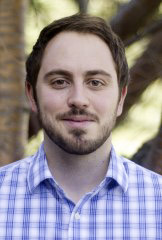
Dr. Joshua Bourdage
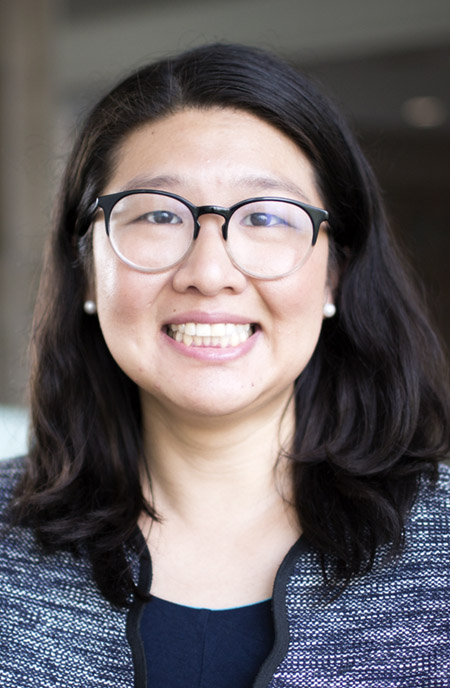
Dr. Winny Shen
Dr. Joshua Bourdage and Dr. Winny Shen, Industrial Organizational Psychology
Industrial/Organizational psychology is the study of psychology in the workplace. We spoke to Dr. Joshua Bourdage and Dr. Winny Shen about workplace culture, organizational structure, and the vast variety of work I/O psychologists do.
Industrial Organizational Psychology
When I was in high school, I went for a job interview after responding to an ad I had seen in the newspaper. I was hired on the spot and immediately onboarded, working my first shift an hour later without fully understanding what the job entailed. The very first thing they had me do was stand in a circle with my new co-workers, arms around each others’ shoulders, while they turned off all the lights and played ‘Eye of the Tiger’ in its entirety. Then, presumably adequately motivated, we were sent off – to sell Meat Of The Month subscriptions door-to-door. I learned that this was the process every single day. ‘Eye of the Tiger’. Every single day. I walked home midway through that first shift and never returned.
It was the 90s – you can tell, perhaps, because job ads still came in the newspaper, and people still thought ‘Eye of the Tiger’ was the ultimate pump-up song because Jurassic 5 had yet to release ‘Jayou’. It was also before Industrial/Organizational (I/O) psychology became more formalized in Canada. Dr. Joshua Bourdage is an associate professor at the University of Calgary, and the current chair of the Canadian Society for Industrial and Organizational Psychology (CSIOP), the CPA Section for Industrial/Organizational psychology. The discipline dates back many decades, the section was founded in the mid-70s, and Dr. Bourdage says the discipline really took hold in Canada in the early-90s.
“A lot of it traces back to the idea of scientific management and Frederick Taylor [an American mechanical engineer who was known for improving industrial efficiency around the turn of the 20th century] and how we can optimize people and tasks to be done in the most efficient way possible. So a lot of our early work was around selection, assessment, sorting, and increasing productivity. Then we adapted, alongside the rest of psychology, with things like the human relations movement – the idea that people have feelings and emotions and internal states. We then started to think about things like whether happy workers are productive workers, or what are the things that actually motivate people beyond just carrot-and-stick – intrinsic and extrinsic motivations, and that sort of thing. That’s where we branch more into the studies of leadership, and change, and politics and so on.”
Dr. Winny Shen is an I/O psychologist working at York University in the Schulich School of Business. She is the Past Chair of CSIOP, and her studies deal with diversity and inclusion, leadership, and worker well-being. She points to the first two World Wars (to date, the only two World Wars…) as the moment when I/O psychology was really created as a formal discipline.
“The desire to apply psychology to solve practical problems has been around from the very beginning. One of the catalysts for the growth of I/O psychology as a discipline was the two World Wars. The military and also the government realized they had a massive number of people with a ton of jobs that needed filling, and they didn’t actually know what was the best way to allocate people to the right job, to make sure we’re making the most of the people that are in these important military positions. That became the basis of a lot of I/O psychology – assessments, intelligence testing, personality assessment, and job analysis. After the wars, there was a recognition that a lot of these processes and skills could be applied to private organizations and industries, and there were all these people who had been trained in doing it as part of the war effort, so it grew from there.”
Put very simply, I/O psychology is the study of psychology in the workplace. Put a little less simply, it’s the application of psychological principles to study the world of work – workers in the context of teams, in the context of the organization as a whole. It’s a field interested in work at multiple levels and in multiple perspectives. This means that I/O has a vey broad range of perspectives and specialities. Dr. Shen explains,
“You can find us in a wide array of places. Some folks are academics like me and Josh. We do a lot of the research in terms of understanding workers’ experiences and organizational phenomena. You can also find I/O psychologists in a lot of applied settings. We’re typically trained as scientist-practitioners so we do both. We might work for an organization – for example, making sure their hiring processes are scientifically supported, or maybe helping with their training in terms of making sure their employees have the knowledge and skills required to succeed in their jobs. It could also involve issues of motivation, or climate – some of those softer-side things that make sure workers have positive experiences on the job and that they have a good relationship with their co-workers and the organization as a whole. We can also be coaches. We can work in analytics. Some work in very specific fields – for example, there are a large number of I/O psychologists working in health care right now. A lot of us work in collaboration with educational psychologists around issues like credentialling and licensure. Once you know where to look, you can find us in a ton of places!”
A previous Chair of CSIOP is one of the I/O psychologists contributing to understanding workplace issues in health care, where collaboration with many other psychological disciplines is very much a part of the job description. Dr. Bourdage explains a little more.
“One of our previous chairs, Dr. Tom O’Neill, does work with teams in a healthcare settings. Specifically, he works with resuscitation teams to maximize their performance. A human factors person, like an environmental psychologist, might look at the layout of the room and the equipment in it to see how it influences the work, whether some of it impedes people. Whereas Tom is looking more at communication, conflict, those sorts of things.”
When I first started working in radio, my job was as a producer for a show called Sentimental Journey on the local Oldies station. The host of the show would record his show on a reel-to-reel machine, then provide a list of the songs he had mentioned in the show. Some were on CD, some on the computer, and some on vinyl. I would have to make sure that there were 60 minutes of music and talk in any given hour – but the host was less concerned. Sometimes an ‘hour’ contained 35 minutes worth of music and talk, other times 85 minutes. I am likely the last person in radio – at least in Ottawa – who actually played music from a turntable on the air, and who had to splice reel-to-reel with a razor blade and scotch tape. I tried to teach the host how to use the computerized ‘voice tracking’ software, which involved booting up the program, then pressing the space bar to record and pressing it again to stop recording. I could really have used an I/O psychologist to help me convince him that pressing a space bar did not make one a ‘computer geek’, and that technology sometimes helps and makes things easier!
Technology, and its rapid advancement in the workplace, has been a big topic of discussion for I/O psychologists over the past ten plus years, but Dr. Bourdage says that it is just one small part of the work and research being done into workplace culture and enhancement.
“It’s extremely broad – the types of work that were presented even just last year at the CPA convention were very diverse. We had presentations about personnel selection – how do we enhance hiring and recruit the right people to apply for a job? How do personality and different situational elements like leadership impact employee attitudes and behaviours? We also covered more current and urgent topics like gender and diversity in the workplace, and the use of technology in the workplace. And there are a lot of people rising to the challenge of understanding how work and the practices we engage in are changing because of COVID. How do we still foster good team dynamics through the move to remote work? How do people cope with remote work productively? And of course we have a lot of people interested in mental health. We have members who work with healthcare workers to get a better understanding of burnout and stress, and their impact in the workplace. How can we intervene to help workers and organizations in that realm?”
When I was in college, I had my first taste of virtual work. I got hired by a promotional company, and after the first interview I never again saw a single one of my co-workers. I would get a phone call telling me where the ‘product’ was. (I always joked with the voice on the phone about the dangers of talking about ‘product’ on a cell phone, but I don’t think he ever understood what I was getting at.) I would then show up to the address provided, where there was a big truck. I’d get in, see what the ‘product’ was, and then spend the day offering free samples of the new Dempster’s bread at a local grocery store, or Dasani water at a gym, or Miller Genuine Draft at a bar. Okay, this is not ‘virtual work’ as such – just work without any co-workers!
There has got to be a study in motivation around a setup like this. There was absolutely no way to know for sure how well I had done my job – or, in many cases, whether I had done it at all! I also had no contact with co-workers, so I had no frame of reference to know whether they were doing their jobs to the absolute best of their abilities, or whether they were taking that extra case of Corn Nuts they hadn’t distributed home at the end of the day to share with a bunch of equally poor and starving college roommates. As with all virtual work, there is probably some good and some bad, as Dr. Shen maintains.
“This large-scale move to virtual work is complicated! There might be some good things, like a more objective evaluation of employees’ work as you see the work sort of divorced from the person doing it. But there are also negatives, like managers feeling like they don’t have control anymore because they can’t physically see people working. Additionally, the lines between what is work and what is private are issues that companies are trying to manage because it hasn’t really been as big of an issue in the past.”
Dr. Bourdage says that while this move to virtual work and the embrace of new technologies has been a major shift – both in the workforce and for psychologists – the expertise of I/O psychologists provided the groundwork for an easier transition to this new reality.
“We had already seen a move toward new technology, whether that’s machine learning or AI, in a decision-making capacity or hiring or moving toward more virtual work. In some ways COVID has just accelerated certain things, the same way it has accelerated or highlighted certain inequities – like who is more likely to be bearing the brunt of childcare responsibilities, for example. A lot of the work and research we’ve been doing for decades does inform some of these things – we’re lucky to have expertise on things like mental health and stigma in the workplace, workplace safety, selection, hiring, and recruitment. So we already have this expertise and it’s just sort of shifted to this new application, I’d say.”
When it comes to equity, diversity, and inclusion, one of Dr. Shen’s specialties, she says that the pandemic has been something of a double-edged sword when it comes to making workplaces more welcoming and comfortable.
“I think that on one hand this virtual working capacity has been something that disability advocates, for example, have pushed for a long time as it would make the workplace much more inclusive and serve as a kind of accommodation that would be helpful for a wide range of disabilities. But it’s one that many companies have felt like was not a “reasonable” accommodation for many of the jobs in their repertoire. But now the pandemic has highlighted how some of our assumptions about how work gets done or what kind of work can be done virtually – often quite effectively – have been too conservative. Companies and organizations might have previously been too reticent to try some of these things.
The other side of the coin is that we have to be a little careful in terms of the balance between what is an employee responsibility and an employer responsibility. That becomes a little more of a grey area. Things like if I need very expensive internet in order to do my job, who pays for that? Or you get injured at home doing something related to your work – is that a workplace injury? There’s a little bit of research that suggests we’re not as careful in our email communication as we would be saying things face-to-face, and that can contribute to feelings of being bullied.
There are a lot of issues we have to work through. There is definitely the opportunity to reshape work more equitably, but there are also a lot of potential issues that are more invisible in some ways. Sometimes people might not feel comfortable sharing some of those aspects of their virtual or personal space. Companies have to be really diligent in not assuming that all employees have the same kind of resources or the same kind of setup.”
Dr. Shen did a study with colleagues at the beginning of the pandemic into the experiences of Asian-Americans and Asian-Canadians in the workplace, as xenophobic sentiment started to show itself. She is currently doing research that looks at the division of labour in households during the pandemic, and how that impacts workplace attitudes. In particular, women’s tendencies to feel like they have to downshift their careers in order to accommodate changes in household responsibilities. More generally, because of social movements like Black Lives Matter and Every Child Matters, I/O psychologists have a renewed interest in studying the experiences of Black and Indigenous workers. Dr. Shen says it is very important that evidence-based practices remain at the fore when considering issues of diversity and inclusion in the workplace.
“I’m involved in a big consortium where we’re trying to help employers develop toolkits for both employers and employees to try to help with disability disclosure conversations during the hiring process. There are a lot of employers who want to be involved, but don’t necessarily know how to proceed if an employee or an applicant discloses a disability. There is a wide range of issues that stem from the notion of ‘we want to create an inclusive atmosphere, what does that mean, and what does that look like?’
As we become more aware, there are a lot of people who want to make changes. But a lot of these things can be misinterpreted and lead to cascading effects. As an example, there’s a growing body of research that shows some of the policies around hiring and employment equity can be interpreted by people as ‘the standards are different’ or ‘they’re only here because of X’, and that can have pretty insidious and negative consequences for people who are perceived to have benefited from these policies in the workplace. It’s very important, but very complex.
There’s often a tendency to focus on representation rather than inclusion. That can create issues because the focus is on bringing people in, without realizing that the environment into which you’re bringing people is not very supportive. This can ultimately lead to retention issues where there’s this revolving door of under-represented groups.”
The importance of basing your policies and procedures on quality science is echoed by Dr. Bourdage.
“One of the things we espouse is evidence-based practice. I think there’s this notion that a lot of these things are common sense, but I think there’s a lot of knowledge and training and expertise that is required to understand not only equity, diversity, and inclusion but also organizational change, organizational culture, how reward systems impact people, or organizational politics. These are all areas that I/O psychologists dig into with different lenses to understand these things and inform evidence-based practice.
Basically everything from the time you decide to apply for a job, to what questions you’re getting asked in an interview, to how you get socialized and onboarded at the new office, your day-to-day interactions are all guided by and investigated by I/O psychologists. It will tangibly affect almost everyone, every single day, for a huge chunk of their lives.”
When I was in university, I answered a job ad looking for lifeguards to work at Ottawa apartment pools throughout the summer. By the time my job interview was over, I had been hired not only as a lifeguard but as middle management at a security company, working alarm dispatch and supervising security guards across the city. It was a company that took on every contract that it possibly could – I was also answering employee complaint lines for a variety of Canadian clothing stores and keeping records for building maintenance companies…among dozens of other things. Lifeguarding paid minimum wage, middle management in the control centre paid $0.15/hour more. The job ad at the time, 1999 or so, said only ‘lifeguard’ and included a phone number. Things are a little different now, says Dr. Shen.
“Every time you go online and look at a job ad, it has probably been created through some sort of job analysis that I/O psychologists do to understand what is at the heart of a job. The basis we use for how to match a person to a job is to first understand exactly what that job is and what it entails.
The annual performance appraisal that maybe you hate or maybe you love – there’s a lot of science there. Maybe your workplace has a 360-degree feedback where you rate your boss and your co-workers. A lot of I/O psychologists were involved in that, and in popularizing it.”
When I worked in radio, I had an annual performance review where a series of bosses would sit down with me to set goals for the following year and review my progress toward the previous year’s goals. It would invariably go something like this – ‘you have exceeded expectations on four of your five goals, and met the fifth. Great work! I’m going to give you 4/5 across the board’. Why was I getting 4/5 when I had exceeded the goal? And also when I had met the goal? It turns out there was a company policy that said if an employee got a 5/5 on the report turned in to head office, they had to be given a raise. Dr. Bourdage says, “I/O can provide the tools, but whether people use them well or not is kind of on them! The job of I/O psychologists is to work with organizations to help guide them in adopting these tools and best practices”
The Oldies radio station I worked at no longer exists, the security company no longer does security or lifeguarding, and the promotion company is defunct. I am not certain about the door-to-door meat subscription company, as I no longer remember their name. I am guessing they too no longer exist. I wonder though, were they still around, how they’d be doing. On the one hand, the pandemic might have created a demand that hadn’t existed previously for a meat-subscription service, but it also would have made the door-to-door sales model something of a non-starter. By now though, some of the work of I/O psychologists would likely have trickled down to them, and they would probably have a better work environment – if only replacing ‘Eye of the Tiger’ with ‘Turn Down For What’. Dr. Bourdage thinks most companies are moving in a better direction.
“As the current Chair of CSIOP, I look around at the work being done and I feel like our field is uniquely situated to help with the problems of the day.”
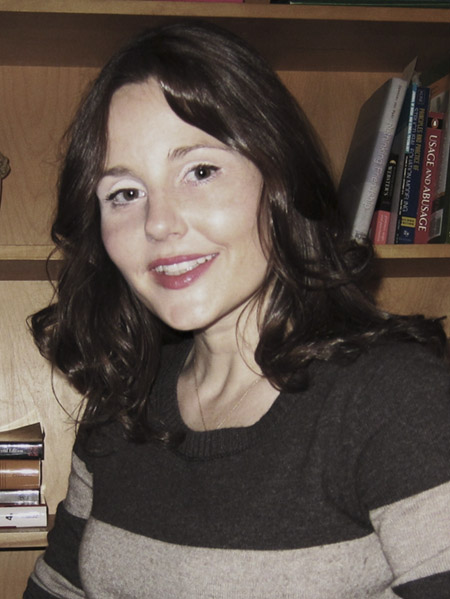
Dr. Cheryl Harasymchuk
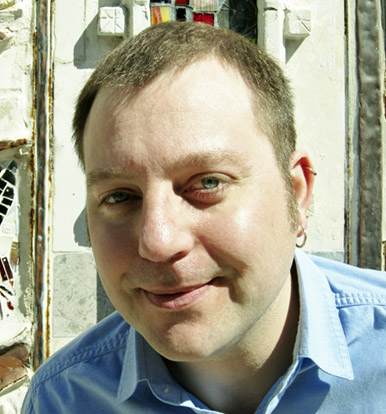
Dr. John Zelenski
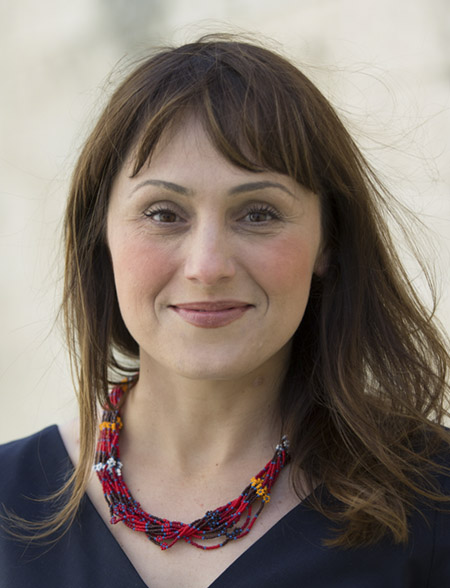
Dr. Katherine Starzyk
Dr. Cheryl Harasymchuk, Dr. Katherine Starzyk, and Dr. John Zelenski, Social and Personality Psychology
Social and Personality Psychology is really a description of two different disciplines that are inextricably linked. We spoke to Dr. Cheryl Harasymchuk, Dr. Katherine Starzyk, and Dr. John Zelenski about the contentious history and harmonious present, and the work they do to influence us all to be better.
Social and Personality Psychology
Dr. Cheryl Harasymchuk is an associate professor in the department of psychology at Carleton University, where her research focus on relationships from a social-psychological perspective. She is the Chair of the CPA’s Social and Personality Section. Dr. Katherine Starzyk is an associate professor of social and personality psychology at the University of Manitoba, where she studies how people respond to social injustice. Dr. John Zelenski is a professor of psychology at Carleton University, where personality psychology is the longest-running of his many research areas.
If you are following along with our Psychology Month series, you might remember Dr. Zelenski as having also participated in our spotlight on Environmental Psychology. As with so many psychological disciplines today, there is a huge amount of crossover between social/personality psychology and other fields of study.
“My first work in environmental psychology was to try to measure this individual difference that we call ‘nature-relatedness’. It refers to the degree to which people feel connected to, and part of, nature and the environment. The way we think about it is almost like a social relationship, and so we borrow some techniques and measurements from social psychology. Since ‘nature-relatedness’ is related to good things, like happiness and sustainable behaviours, it would be nice to increase it.”
This mirrors something that’s going on in personality psychology more broadly. 20 years ago the field was trying to sort out which were the most important personality dimensions. There of course thousands of potential individual differences, so they were trying to make some sense of it. That work remains ongoing, but personality psychologists have come to at least a bit of a consensus in the past couple of decades. Now they can start to ask questions about how behaviours and traits change over time, or how to increase desirable traits and appeal to some kinds of people. Says Dr. Zelenski, “I feel like personality psychology is getting on to these more interesting questions of substance and change and stability, rather than just figuring out what we’re talking about.”
There is a difference between ‘personality psychology’ and ‘social psychology, and at one point the two were not very sympatico. Some say (like Dr. Zelenski) that it was akin to a sibling rivalry. Others say it was a battle of extremes. Either way, there has been a rapprochement over the years to the point where the two now form part of the same team and are in many ways inextricably linked. Like when Nas and Jay-Z finally stopped writing diss tracks to each other in their songs, and joined together to make beautiful music on the (in-aptly named) ‘I Declare War’ tour. Dr. Harasymchuk makes the distinction.
“Psychology is the study of why and how we behave as we do. Social psychologists study how people are shaped by the people around them and the larger environment. And personality psychologists study how to define and measure the important differences between people – ranging from genes to cultures.
In the beginning there were some extreme positions, where two camps were at odds. One said it was only the context, the other said it’s only how you were born that would shape your behaviour. Since that time there has been a lot of evidence that it isn’t one extreme or the other. As an example, I study relationships from a social-psychological perspective, which means I’m mainly interested in how a person’s partner, or best friend, shapes their behaviour. But in all my research, I also examine individual difference variables. Situations depend on that person’s personality, and how they might respond to their partner or best friend. If they have a history of responding very negatively to stressors, then in the context of a relationship where they’re having a fight, their behaviour might be more negative and exaggerated than it would be for someone better able to cope with their emotions.”
The integration of social and personality research has many tangible benefits. Dr. Starzyk has worked with collaborators and partners to increase government motivation to act in response to the First Nations clean water crisis. The group includes social/personality psychologists, sociologists, economists, legal scholars, soil scientists, and more, all thinking about ways they can apply pressure to alleviate the crisis, and all supporting the work of the advocate organizations who are the public face of the effort. It’s a multi-pronged approach, where the social and personality psychologists are the ones working on influencing public opinion.
“Some of our research is on understanding things like when, and why, people will start supporting better access to clean water for First Nations in Canada. Or at what point will people become concerned about racism, or the things that are necessary to move (re)conciliation forward. Even in this context, where we’re studying things that seem very group-based, this year we’re looking at how most of the individual personality variables predict each of these things together. So once again we’re dealing with a real integration of the social and the personality science. While we can set up frames that are more likely to make people act and be concerned about these things, we’re also interested in understanding who those frames will influence more, who can we move more easily, and maybe who requires a different approach. It’s taken a long time, but the intersection is finally here!” Integrating her work in psychometrics and intergroup relations, in February 2022, the Canadian Reconciliation Barometer has released their first report (https://reconciliationbarometer.ca).
Another big shift in the last couple of decades has been toward a different outlook on the way the science itself is conducted. Dr. Harasymchuk explains,
“One of the major changes that has impacted psychology in general, as well as social and personality psychology, is a greater emphasis on promoting practices in our research through transparency and replication. It’s more common in our field now to see researchers pre-register their study hypotheses. Meaning that before they start conducting the study and collecting data, they state publicly what they expect the study to find.
Related to that is the shift we’ve seen toward a more collaborative science. If you need to get enough participants to be more confident in your results, you need to pool across many labs and resources. We were always committed to doing good science, but in the last 20 years we’ve learned so much about the importance of replication and strong sample sizes.”
The work of social/personality psychology has not only undergone many changes in the last 20 years, but it has also contributed enormously to the changes we see around us in our everyday lives. Any ad you see online or on TV, any social media platform or interactive app, is built around the way people think. Dr. Starzyk says she sees this directly quite often, “Facebook and Google and ad companies explicitly recruit graduates from social and personality psychology – we see their booths at our conferences!”
While a lot of what surrounds us is informed by social and personality psychology, our own behaviours can be explained (or perhaps studied) by researchers in the field – every decision we make, every action we take, is probably of interest to a psychologist somewhere! Dr. Harasymchuk offers an example.
“There is a subdiscipline that concerns judgement and decision-making. It’s not about the objective things we experience in a situation, it’s about our perception of them. Our perception can shape whether we decide to drive an extra ten minutes to a gas station where we know we can save a few cents per litre rather than going to the station closest to us.”
The role of social and personality psychologists has come under a bit more scrutiny this past year, as they are at the forefront when it comes to finding ways to get people to adhere to public health measures. It is certainly not as simple as ‘craft your message this way and everyone will wear a mask and get vaccinated’. It’s more about what kind of messaging, imagery, and rhetoric will encourage the most people to take the necessary precautions. Dr. Zelenski says that this process is certainly a complicated one.
“In one of my graduate seminars just last week, we were considering these competing articles in a very high-profile journal, and one of them said ‘here are all the things social psychologists have learned, apply it to the pandemic!’ and the other one was from a group that contained mostly social and personality psychologists who said ‘wait a second there – we’ve done a ton of studies, but mostly on students. This science might not be game-day ready just yet.’ Then between those, you have politicians and policy-makers who have to make a decision right now who are demanding to know if this science is helpful or not. So even within the field, I think you have some debate. We’re certainly asking and addressing those questions, and while our advice is not as good as it might be five years from now, a lot of people would say that at least it’s good enough to be helpful in the moment.”
Dr. Starzyk says a big part of the difficulty is maintaining peoples’ trust in government in order to get them to trust the public health measures being advocated by that government.
“Governments don’t always translate research into policy, and they behave really inconsistently. We know a lot about what causes trust in government. When they say you can go mask free wherever you like, and then three days later have a different guideline, people start to question whether that policy is grounded in some good reasoning.
Even though we know the contact issue is not so important, and you don’t need to sanitize everything in your home anymore, one of the reasons governments were reluctant to repeal that kind of advice is because then people might trust them less. I feel that’s probably not so wise, you want to go with what’s the best science at the time and avoid having people spend money on things they don’t need.”
The science of personality and social psychology has come a long way, but remains a little misunderstood among the general public. Hopefully this will change going forward. Social and personality psychologists help us address racism, behave in more environmental ways, and try to convince us to wear masks and get vaccinated. To live better lives.

Dr. Randal Tonks
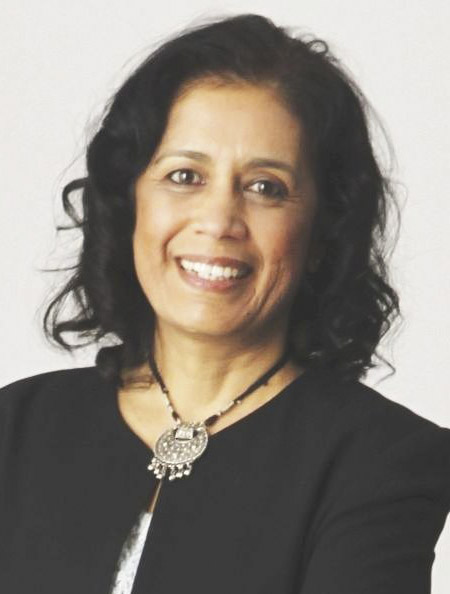
Dr. Gira Bhatt
Dr. Randal Tonks and Dr. Gira Bhatt, International and Cross-Cultural Psychology
International and Cross-Cultural Psychology are two separate but related fields. The study of cultural differences and similarities has long brought needed perspective to psychology, and that work has been accelerated as the world becomes more and more globally connected. We spoke to Dr. Randal Tonks and Dr. Gira Bhatt about the work they do in this space.
International and Cross-Cultural Psychology
When I was eight years old, I moved with my family to Winnipeg. It was a bit of a shock the first time schools were closed because of the cold – I was pretty used to snow days in Ottawa and the thought of having one without any snow was a little odd. But my friends seemed to think this was quite normal and I did agree that being outside at that time was unpleasant enough that I too would prefer not to be in school. But the day in the spring when school was closed – because of mosquitoes – was a lot more stunning. I couldn’t wrap my head around the fact that my friends were treating this like it was normal. “Oh yeah, let’s hang out in the basement and pretend to play Corey Hart songs in our air band. It's a mosquito day!”
Even a move from a city like Ottawa to a very similar city like Winnipeg can, for some of us, produce a small amount of culture shock. Imagine how different Winnipeg must feel to Rohit Gupta, an elite cricket player from India who moved there to study psychology at the University of Manitoba. Cultural differences, and the psychology that comes along with them, can be vast or minute – and they are all around us.
Dr. Randal Tonks is a psychologist and an instructor at Camosun College in Victoria, BC where he does a lot of research into identity and adjustment. He is the Chair of the International and Cross-Cultural Section of the CPA and says that while there is a lot of overlap, International and Cross-Cultural are really two different areas.
“International psychology is really an umbrella term that describes the fact that a lot of psychologists work internationally on global issues. Cross-cultural psychology examines the similarities and differences of peoples’ psychological abilities and traits and so on as can be seen across different cultures.”
It was an inter-Canadian cultural difference that started Dr. Tonks down the path of cross-cultural psychology, as he too moved across the country to experience a different part of our large nation.
“I grew up in Vancouver and went to UBC as an undergrad, but I always had a passion to go to Montreal, so I moved there after I graduated from UBC. Living in that Quebec culture in the mid-1980s, things were arguably a bit more polarized even than they are today. I suddenly became aware of the role of culture and the issues I was going through. I could pass as a local as long as I didn’t open my mouth. But as soon as I spoke, I was immediately identified as someone from ‘somewhere else’. I came to see all these prejudices and biases and expectations about who I was. From those experiences, when I then decided to apply for graduate school, I came to be very interested in the processes around acculturation when people move from one place to another, and our sense of identity in the way we think of ourselves in cultural terms.”
I once spent a few days in Dalhousie, New Brunswick, where I ended up being part of a softball game against the local city council. There were no bases, but rather beer kegs that appeared to be permanent fixtures of the softball diamond. It seemed to be well-known to everyone there that if you hit a home run, the opposing team had the chance to jump over the fence, chase down the ball, and return it to the infield. If they did so before you were able to drink a beer at every base and then cross home plate, you were out. There was a self-contained limiting factor to the drinking, which was that once you had rounded the beers once there was a marked increase in the chance you would strike out the following time up. I asked what they called this sport, and they looked at me as though that was a very strange question and said ‘baseball’ with a shrug.
Dr. Gira Bhatt teaches psychology at Kwantlen Polytechnic University in Surrey, BC. She has spent almost 2 decades involved with the International and Cross-Cultural Section of the CPA. Her research involves culture, identity, acculturation, and prejudice – she is currently doing applied community research with ethic minorities in Canada, exploring the dynamics that pan out around them. She says one of the things cultural and cross-cultural psychologists must keep top of mind is translation. It's one of the reasons that researchers who come from the community where the research is taking place is so important.
“I was involved in one research study where we were comparing individuals from China, India, and Canadians with European backgrounds. One test item was ‘what’s your profession’? A ton of the participants in India wrote ‘service’. My colleague in China said ‘wow, isn’t that humble, that they all say they’re doing service!’ and I said ‘no no no – it doesn’t mean that. It’s just that when you have a paid profession in some companies, they call it service. It’s a distinction between running a business and doing a paid job, and it’s just the expression they use.’ If the local researchers are not involved, it can lead to those kinds of miscommunications, poor translations, and misinterpretations.”
In the past two years, there has been a renewed media focus on cultural differences, especially in terms of the pandemic. What countries are handling it best? What communities are most likely to adhere to public health guidelines? Of course, it isn’t that simple as every country and every community is made up of individuals with their own ideas and their own value systems. Dr. Bhatt says these ideas have led to a huge amount of new cross-cultural research.
“Michele Gelfand has received a lot of media attention for her work on tight culture and loose culture, especially in the context of COVID. People in China seemed very compliant, they shut themselves inside their homes and didn’t leave for three weeks, whereas here we have an anti-vaxx movement, and all these protests happening. This difference has been studied very deeply now, as to how culture shapes us in terms of compliance where social norms are more important in terms of how people adhere to public health measures. Whereas here, we have the mindset of Western individuals that ‘I do exactly what I want to do’. That’s been very relevant for us to understand.”
In something that would be unthinkable in, say, South Korea, the last few weeks have seen protests all over Canada demanding ‘freedom’ from public health measures. Along with those protests has come an undercurrent of xenophobia and racism. These are things that have been on the rise since COVID first became a global pandemic, with anti-Asian hate crimes and other racist incidents happening across the country. Dr. Bhatt and Dr. Tonks were involved with several others in preparing the fact sheet on racism for the CPA, describing the underlying psychological dynamics of prejudice, hate, and discrimination. Dr. Tonks says this is a big topic in cross-cultural psychology.
“I don’t actively research prejudice, although of course in my teaching that’s one of the really big topics I bring up. When teaching cultural or cross-cultural psychology, I bring up issues around prejudice and things like colonialist perspectives in psychology. In some of my courses now I’m working on decolonizing the curriculum to bring in more Indigenous perspectives that show respect to other ways of thinking and forms of knowing. This kind of thing can contribute to change in the greater academy and the large body of psychologists carry out research across different cultures.”
A lot has been made in recent years of the breadth of psychological science, and how the vast bulk of scholarship over the history of the profession has been from a Western lens. Some of the people trying to redress this deficit, and correct for it, are cross-cultural psychologists like Dr. Bhatt.
“For a very long time, psychology was very Euro-centric. Now we understand that different cultural practices pertaining to mental health contain so many variations. So if you want culturally competent counselling, which is now kind of a buzzword, how do you prepare those therapists to be culturally competent? We can’t have a list that says ‘if someone is from X background, this is what they will be like’, because they’re living here! Their adaptation to Canada changes from one individual to the next, and we can’t have one-size-fits-all. The work on this is ongoing in the counselling and clinical fields, and a ton of work has been done – but the potential for growth is enormous.
Sometimes there are accusations that Western psychologists are ‘creating’ a syndrome. You heard this for a long time with attention disorders, and now we know there is some biological basis for these. But you come up with these terms and people from other cultures never heard of it. It doesn’t mean it doesn’t exist, just that it may be labeled differently. And there are syndromes that exist in other parts of the world that Western psychologists don’t know about.”
This might be the crux of cultural psychology. When culture is a variable, it affects the diagnosis, the treatment, and even the onset of psychological syndromes. There are few diseases that affect only one group of people but not others, but this does happen in psychology. Depression has been shown to manifest differently across different cultures. People from more Western, North American, or European cultures complain more about the psychological components of depression – feeling down, low energy, that kind of thing. But depression has often been identified among many of the Asian and some of the Middle Eastern cultures as more of a somatisation [a maladaptive functioning of an organ system, without underlying tissue or organ damage]. It manifests more in terms of bodily complaints, and people don’t so much report their feelings but rather these conditions affecting their bodies. Dr. Tonks provides a few more examples.
“There’s something called TKS, or Taijin Kyofusho Scale, which is a Japanese condition that has to do with a type of anxiety, with maybe a little bit of depression mixed in. It’s a fear that one is offending others with one’s presence. They may develop delusions that, for example, they have a foul body odour and that this is offensive to other people around them. This is a condition that has been well recognized within the Japanese psychological circle, and maybe starting to be recognized a bit in a few other places. This is one of those conditions that doesn’t really show up in other cultures but very clearly exists in Japan.
On the flip side, something like anorexia nervosa might be a Western kind of disease that isn’t really seen across other cultures, and it might be in part due to the socialization and cultural factors that people in North America and Europe tend to live with. In recent years, we’re beginning to see a bit of a rise in this syndrome in some other places where they have become more Westernized, and exposed to more Western media and Western culture.”
I was visiting a farmer’s market in Bangkok many years ago when an elephant sidled up next to me and took a melon. The stall keeper looked up, unperturbed, and the elephant walked away with her melon, equally unperturbed. I figured this was probably quite normal in Thailand, and farmers are likely quite willing to give up some of their produce to the local fauna – it almost certainly beats the alternative of trying to fight them for it. What seemed a little less Thai was the graffiti. The elephant was spray-painted with tags. This seemed like a very American thing to me, something that started in New York subways in the 70s, but it had obviously made its way to Thailand. I’m not sure of the effectiveness, as I understand graffiti tags being a way to mark one’s territory – and an elephant is rather mobile. But there were few elephants wandering the downtown squares unvandalized. Dr. Bhatt says that as Western culture spreads around the world, so too do the good things – and the problems – that come with it.
“The world is coming closer and closer through technology, and because of the pandemic we’re doing Zoom all the time. We’re finding that the various parts of the world which were so far away are now really close. Teenagers in other parts of the world know exactly what American teenagers are doing, and they’re very aware of where trends are going. So a lot of issues are not limited to just one culture, they’re spreading all across the globe and everyone is impacted. We know that body image is changing across time and across cultures. What’s considered attractive keeps changing, and it’s really fascinating.
I’ve learned that women in Middle Eastern countries are now wearing all kinds of expensive Western makeup under their niqabs. There have also been some sad cases where someone in Europe lures a teenager in Canada to take their own life. These are alarming times for us now. Technology has given us lots of good things, but it’s also something to worry about, as the insularity of culture does not exist the way it once did.”
Although its roots and origins can be traced back much further, cross-cultural psychology really got going in Canada in the 60s, when pioneers like Dr. John Berry (one of the founders of the International and Cross-Cultural Section of the CPA) started publishing their research. The push toward multiculturalism in the 60s and 70s led the field to grow and develop. We started to see a lot of studies on identity, and language – in particular French and English as a lot of the issues came from the politics of Canada. Dr. Bhatt and Dr. Tonks, along with Dr. John Berry, wrote a paper tracing this history, but stopped when they got to about 2000. Dr. Tonks says,
“All of a sudden, around that time, it seemed like everyone was talking about culture in one way or another. People who were not traditionally doing cross-cultural research now wanted to look at culture as a variable in their studies. Maybe the biggest change in this discipline is not the growth in the number of cross-cultural psychologists themselves, but that psychologists and other researchers outside the field are looking at facets of the way in which culture comes to play a role in, say, education or childcare or criminal justice.”
Some of those researchers outside the field of cross-cultural psychology are evolutionary psychologists, who are now looking at the role culture plays in human evolution. Others are neuroscientists, who are looking at differences in cognition between one culture and another. There have been countless examples making the news recently – when people were shown an optical illusion with two lines of identical length, African people knew right away that they were the same length, where North American people thought one was longer than the other. Another study showing people an aquarium screen saver showed that Americans saw three big colourful fish first, while Japanese people saw the water and the rocks first. Dr. Tonks says there are even a few brain studies that are starting to yield some results.
“Steve Heine from UBC in his book Cultural Psychology identified that if you do fMRI scans of Americans versus Chinese individuals and you get them to think about themselves, and then to think about their mothers, the Americans have two separate areas of their brain that are lit up – one for themselves and one for their mothers. Whereas for the Chinese participants they have the same areas of the brain lit up. It suggests that neurologically, they’re coding information about their sense of self as being connected to family in a single site, as opposed to North Americans encoding themselves separately within our brains. So some of these properties that we talk about – individualism and collectivism, for example, can arguably be seen in some neuropsychological evidence.”
We may have different brains as a result of our cultures, different syndromes and different experiences and a wide variety of mental health outcomes. But we do have a common goal – that of a collective humanity striving continuously to be better. Dr. Tonks says that cross-cultural psychology promotes “awareness of ourselves, and what our cultural biases are. Learning how other people operate culturally leads to greater sensitivity when interacting and communicating across different cultural lines. The goal a lot of cross-cultural psychologists strive toward is working in a cooperative way to build a better society.”
Preferably, a society with very few mosquitos.
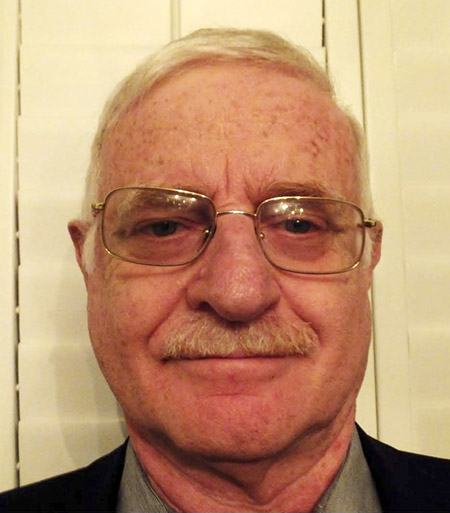
Dr. David Nussbaum
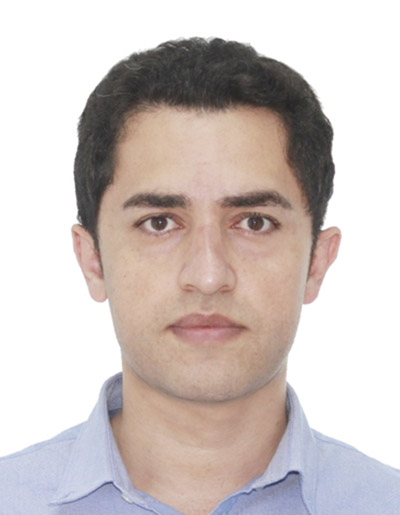
Dr. Yusef Karimi
Dr. David Nussbaum and Dr. Yusef Karimi, Extremism and Terrorism
Extremism and Terrorism are not limited to a geographic location or to a time period. We see the results all over the world, here in North America, in the Middle East, and most recently in Europe. Dr. David Nussbaum and Dr. Yusef Karimi discuss psychology’s role in understanding, and possibly preventing, violent extremism.
“I had a classmate in high school who was extremely intelligent. He wasn’t religious at that time – most Kurdish people are secular; they don’t believe much in the way of fundamental or extremist religion. When I was a Master’s student at university, I heard that he had joined Al Qaeda in Afghanistan. At the time, I was wondering why some people wanted to join Al Qaeda and other extremist groups. Especially when most of my friends and I were always against those groups in my province. About a year later, I heard the news that he had been killed in Afghanistan along with Abdullah Masood. I was shocked – why? Why did he join? What was the psychological root of this process?”
Dr. Yusef Karimi is Kurdish, and came here to Canada from Iran two years ago. He finished his Ph.D. in counselling psychology in Iran, where he was particularly interested in understanding what make people join groups like Al Qaeda and ISIS. He went to villages at the border of Iran and Iraq for Friday prayers and then through the rest of the weekend, interviewing members of extremist groups over the course of about 4-5 years.
“I communicated with them, gathered lots of information about them, and interviewed 16 Salafi Jihadists. Unfortunately, after these interviews, three of them joined ISIS in Syria and were killed there. As a human being and as a psychologist, I had got to know these people for a while. I became depressed after they were killed. My main idea at that time was to find a way to convince people not to join these extremist groups in the first place. To this day, I’ve been still trying to find an answer for this question.”
The answer, says Dr. Karimi, is most definitely not what the West has been doing in terms of counter-terrorism, invading Afghanistan and Iraq with the goal of ‘nation-building’, drone strikes in Syria and Somalia, and all the other interventions that start with military aggression and occupation. He points to the recent events in Afghanistan, the resurgence of the Taliban after the US withdrawal, as a good example of this flawed strategy.
“I think what has been done in the Middle East in terms of understanding and fighting extremism is doomed to failure because of the use of ineffective methods. The attempts for understanding and dissolving such extremist groups require phenomenological approaches that get to the roots of the problem. Politicians and decision-makers usually prefer to define and evaluate current extremist groups in the Middle East in terms of their existing organizational capacity rather than the actual threats posed by that group.
As a psychologist, as someone who has been in those countries in the Middle East and has been a part of that culture, what we have observed in recent months in Afghanistan is the failure of the ‘nation building’ efforts of the past 20 years. We can consider lots of factors that have led to this failure, but in my opinion, there is one factor we should consider most seriously. That is, a lack of knowledge of the psychological characteristics of the Afghan people. Psychology, in this circumstance, can provide us with a great amount of knowledge of the characteristics of an individual in a community. That can go a long way toward peace making and conflict resolution.”
The Taliban, now back in charge in Afghanistan, made headlines in recent weeks when they joined the rest of the world in calling for a peaceful resolution to the Russian invasion of Ukraine. This, in itself, caused a lot of reaction around the world ‘when the Taliban calls for peace, you know this is a terrible thing…’ that lacks a lot of nuances and understanding of the region.
Back in 1989, the Afghan mujahideen defeated the Soviet Union, driving them out of Afghanistan after a long and costly war. They then managed to topple the communist-backed Afghan government in place at the time, but soon fractured and, following a second civil war in Afghanistan, ceded power to the Taliban. The splintered mujahideen went off in all directions, one of which was that of Osama Bin Laden, who had been the most well-known backer of the mujahideen.
The Soviet, and now Russian, aggression is nothing new. Prior to their abhorrent invasion of Ukraine recently, Putin’s Russian military and bot farms had been engaging in cyber terrorism across the world, which could have been a signal to the rest of the world that they were building up to something more traditionally violent.
Dr. David Nussbaum is the Chair of the Extremism and Terrorism Section of the CPA. Dr. Nussbaum has a PhD in biological psychology, but says he really learned clinical psychology by driving a cab a couple of nights a week for four years while finishing his PhD. Following his PhD, he did a postdoc in neuropsychology, where he got interested in forensic psychology. He joined the Criminal Justice section of the CPA, and headed it for 7 years. There he met Dr. Wagdy Loza, who was the chief psychologist at the Kingston Penitentiary at the time. Dr. Loza started the Extermism & Terrorism Section, and when he did Dr. Nussbaum was one of the signatories who got it initial status. This gave him an orientation in middle eastern terrorism, but he has been talking about the link between communism, extremism, and terrorism for many years.
“People are lured by this promise of a Communist utopia, the paradise of the working man. Except once they’re five years into a Marxist economy, they’re lucky to be eating. They might then say they’re experiencing buyer remorse and they want to get rid of this government. That’s when the totalitarian, draconian nature of the statist comes out. You have Russian gulags, and so on.”
The totalitarian, draconian nature of Putin the statist is currently on full display, as the world responds to the invasion of Ukraine with almost universal condemnation. It is, however, interesting to see the difference between the world’s reaction to this invasion when contrasted to the US invasion of Afghanistan, or the Saudi Arabian offensive against Yemen. War is war, whether it takes place in the Middle East or in Europe, and Dr. Nussbaum is clear that there is no one location where terrorism, or the ideologies that produce it, thrives.
“Terrorism is not limited to one geographic location, one specific ideology, there are terrorists around the world and there have been for millennia. Now, in the last 25-30 years it has become a major issue because of various ideologies that seek to take over the Globe (or huge parts of it). One of the things they do to influence governments and citizens is the use of terrorism to instill fear, so that people will comply with their dictates. It’s always done for a political end.”
Dr. Karimi points out that over the course of history, we have often had to recalibrate what we thought we knew, thanks to extremist violence that we had not previously considered.
“We had some experience with fascism and racism in Germany before World War II. In the 20th century Hannah Arendt said with rising totalitarianism we were faced with a new phenomenon, and a new reality. The political thought had never faced this before, so she said we had to establish a new science of politics to explain and interpret totalitarianism. Like what Alexis de Tocqueville said in the 18th century after the French Revolution. Today, psychology – and political psychology in particular – is faced with yet another new phenomenon, and a new reality. It raises many questions, like how can we understand the individual in a society like Afghanistan, Syria, or Iraq, where social order is established mostly on a tribe structure? Trying to ‘build a new nation’ in Afghanistan was not at all in line with that culture.”
After 9/11, extremism started to become a serious problem in North America, with far-right groups springing up with an anti-Islamist foundation. Western efforts to suppress those groups and avoid giving them a platform worked only so long, and in the last few years that extremism has reached new heights as it has grown in power. We have seen tendrils of those extremists reaching into events like Charlottesville, the January 6th attack on the US Capitol, and more recently the ‘freedom convoy’ that occupied downtown Ottawa for three weeks this year.
For Dr. Karimi, the solution to this problem is similar to the solution to Middle Eastern terrorism – get to people before they become extremists. It will be a long process, and can’t happen overnight, but understanding the culture and embracing it will sow the seeds for a de-escalation of extremism in the future. He says of Canada, his home for the last year,
“Lots of immigrants come to Canada, which is good because they bring a lot of external knowledge with them. But we should have a plan to integrate these people and their culture. It’s all well and good to take in a lot of immigrants, and refugees, and so on – but there has to be a plan to integrate them into the Canadian society. To have them live together with other Canadians in an integrated way so they are not seen as ‘the other’ the way so many currently do. It’s good that we have a multicultural country, but we could be doing so much more to use this multiculturalism to improve Canada.”
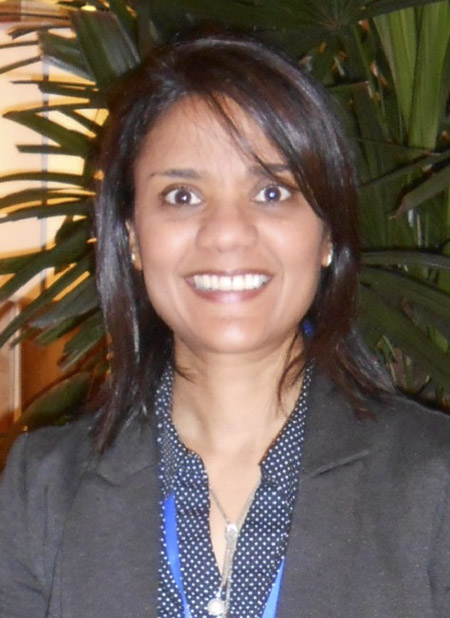
Dr. Wendy Darr
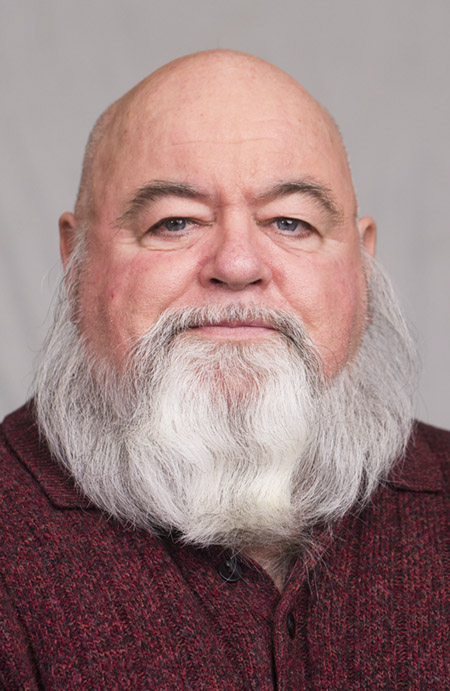
Dr. Allister MacIntyre
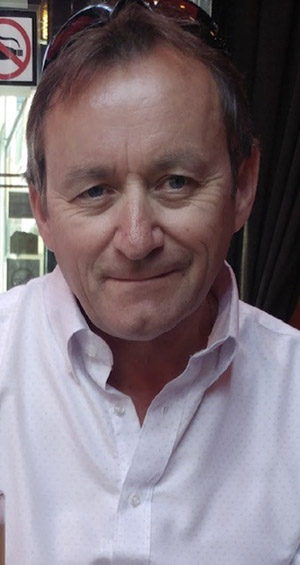
Dr. Damian O’Keefe
Dr. Wendy Darr, Dr. Allister MacIntyre, Dr. Susan Dowler and Dr. Damian O’Keefe, Psychology in the Military
Psychologists in the military play many roles, from personnel selection to designing training to a number of therapy roles. We spoke with Dr. Wendy Darr, Dr. Allister MacIntyre, Dr. Susan Dowler and Dr. Damian O’Keefe to learn more.
In the mid-1980s, “a real military exercise was taking place in Europe, involving countries from all over the world. The West Germans were put in charge of ‘psychological warfare’. Although it was a training exercise and everyone involved knew that it wasn’t a real war, they put a single pamphlet together that ground the entire exercise to a halt. They waited until about late in week two of this exercise. The soldiers who were ‘front line’ had been sleeping in mud, they were filthy, and they were tired. If they were sleeping at all, they were sleep deprived – basically feeling absolutely miserable. The pamphlet the West Germans dropped looked exactly like an advertisement from a nearby pizza parlour – offering to deliver free pizzas to the rear echelon folks - the medics, the supply people and those who weren’t on the fighting end. When the soldiers in the field saw that while they were living in filth and eating ration packs, their fellow soldiers were back there eating free pizzas, they said screw it and they quit. You wouldn’t do that in an actual wartime scenario, but in this peacetime scenario this huge discrepancy between how they were living and how they perceived others were living was enough for them to say they weren’t playing anymore.”
Dr. Allister MacIntyre spent 31 years in the Canadian Armed Forces as a Personnel Selection Officer. He has a PhD in social psychology, but his dissertation was more concerned with work behaviour – culture, climate, and leadership in the Canadian Air Force. When he was still in uniform, he spent time in West Germany completing their army’s psychological warfare course for NATO Officers, and now brings some of the principles he learned there into the influence and persuasion course he teaches at the military college.
When many of us think of ‘psychological warfare’ we think of the US military playing Van Halen at full blast for days on end to torture Manuel Noriega out of his fortress in Panama. (Playing Panama by Van Halen in this scenario was, in this writer’s humble opinion, cheesy and way too on-the-nose.) Recently the so-called “freedom convoy” that gridlocked Ottawa for three weeks was accused of ‘psychological warfare’ by politicians, judges, and law enforcement for constantly honking horns and blaring sirens that disrupted the sleep patterns and daily lives of residents in the area. Dr. MacIntyre says the general concept is a lot broader than that.
“’’Psychological warfare’ is not viewed as a discipline in psychology, it’s much more of a military discipline that uses psychological principles. It involves things like propaganda – to influence your enemies and also to gain support on the home front. People think psychological warfare is all about doing something to the enemy, but a lot of it is garnering support from your own nation to say ‘we’re really doing some legitimate work here’. Some of the things I learned on that course were really quite fascinating, in terms of getting to know the culture of the group you’re trying to influence so you know what triggers to use to get them to sway one way or the other.”
Dr. Damian O’Keefe has his PhD in Industrial/Organizational Psychology, studying human behaviour in the workplace. Like Dr. MacIntyre, he has 30 years military service, and he currently works as a civilian Defence Scientist in the personnel research and analysis division of the Department of National Defence where he conducts applied research to support personnel policy for the Canadian Armed Forces. He’s quick to point out that Canadian psychologists do not engage in psychological warfare.
“Almost all of us would have done our psychology degree in Canada, and so we all follow the CPA code of ethics. Do No Harm is the fundamental principle by which we guide ourselves.”
The most common job for a uniformed psychologist in the Canadian military is as a Personnel Selection Officer. Psychology has been part of the Canadian military since the Second World War, when psychologists helped the army come up with an efficient way to choose volunteers who would be taking up a number of different positions within the military. Ever since then, psychologists have been involved in selecting military personnel. You can learn more about the origins of psychology in the military, and the associated jobs psychologists currently do, in a chapter of the Canadian Handbook for Careers in Psychological Science, co-authored by Dr. O’Keefe, Samantha Urban, and Dr. Wendy Darr.
Dr. Wendy Darr is also involved in selection and assessment, and she recently took over (from Dr. O’Keefe) as the Chair of the CPA’s Psychology in the Military Section. She is also a civilian Defence Scientist who conducts personnel research and analysis for the military. Dr. Darr’s research involves developing new selection tools to screen and recruit people who want to become soldiers, sailors, and aviators. She describes the criteria for being accepted into the military in Canada.
“We are largely looking for what 100 years of research shows is the best predictor of job performance, which is general cognitive ability. The Canadian Armed Forces trains everyone, and a lot of that training is expensive. So we want to make sure we’re investing in someone who has the aptitude and the capacity to succeed, especially in some of the more technical jobs. So at the very basic level we’re looking to see if you’re of sound mind and have the ability to learn. The second thing is personality. Do you fit in with the demands of the military environment? We are looking for those who espouse military values. Does someone have the innate ability to succeed in a rules-based environment, to be organized and structured, and to lead when necessary? We’re also looking for people who have what it takes to perform in this adverse environment. Are you emotionally stable? Military training can be tough, so we want to make sure they have what it takes to handle the pressures of training.”
The military relies on disciplines across psychology. They have industrial, organizational, and social psychologists as well as clinical psychologists to help military members who struggle with mental health issues These psychologists work in military health care clinics and certain specialized units. The vast majority of psychologists work in the 31 military health care clinics located across Canada, which include seven Operational Trauma and Stress Support Centres (OTSSCs) and provide mental health services very similar to what is delivered in hospitals. (Also taken from the Canadian Handbook for Careers in Psychological Science.)
Dr. Susan Dowler is the Chief Clinical Psychologist at the Directorate of Mental Health within Canadian Forces Health Services. She is the senior practice leader for psychology, which means she is involved in establishing the practice guidelines and compliance, doing investigations if there are problems, and setting up educational training. Unlike personnel selection officers, clinical psychologists are always civilians.
“As far as clinical psychologists are concerned, they’re not military members, they’re not in uniform. They’re either public service employees or they’re contracted resources. Some other countries have clinical psychologists embedded in units – the US for example does this – but this is generally not done in Canada.”
In January of 1994, Romeo Dallaire sent a now-famous ‘genocide fax’ to the headquarters of the UN, warning that a genocide was being planned in Rwanda. A few months later, the genocide began as between 500,000 and 1,000,000 Tutsis were killed over a period of about 100 days. Dallaire, feeling abandoned and ignored by the UN and having witnessed months of unimaginable horrors, suffered greatly from Post-Traumatic Stress Disorder (PTSD) after Rwanda. He pushed to create specialized mental health services for individuals suffering from operational stress injuries. Dr. Dowler says the first OTSSC was created in 1999.
Clinical psychologists have become more and more involved with the military over the years, and play an essential role when problems present themselves. The stigma associated with seeking mental health help has always been prevalent in society, but especially in the military where, as Dr. MacIntyre says, “people are expected to be strong”. He and Dr. O’Keefe both did tours in Australia, working with the Australian army. They noted many years ago that every single soldier who had been deployed for any reason had to visit a psychologist upon their return to Australia. It was just for a screening, but it eliminated some of the stigma of going to talk to someone because everyone had to do it. Dr. Dowler says there is a similar practice in the Canadian military as well.
“We have had mandatory post-deployment screens for a very long time. Within 3-6 months after deployment, soldiers fill out some questionnaires and have an interview with a clinical social worker. If any information is flagged as potentially problematic, they are referred to mental health services. To see a psychologist you have to be referred from the medical personnel.”
The post-deployment screenings are just part of a process for soldiers after experiencing combat. Psychologists have added another step to make returning to Canada and home life a little easier and more successful. Dr. O’Keefe explains,
“When soldiers come back from overseas deployment, they go through ‘third location decompression’. That’s a two or three day period in which they come out of theatre which has been potentially very bad. They go to a very calm, mostly warm location where they get briefings from people like Susan (clinical psychologists) and other professionals who tell them ‘if you’re experiencing this symptom, here’s what you need to do’. You can’t put soldiers on an airplane and send them straight home from Afghanistan. They need to have time to decompress and to process what happened. And, of course, to get professional help if they need it.”
Psychologists are involved in the military process from the moment someone enlists right up to all the years after they complete their last tour. Helping them train, perform, and heal so that they will be as healthy, adjusted, and emotionally stable as possible when they head out to that pizza party.

Alejandra Botia
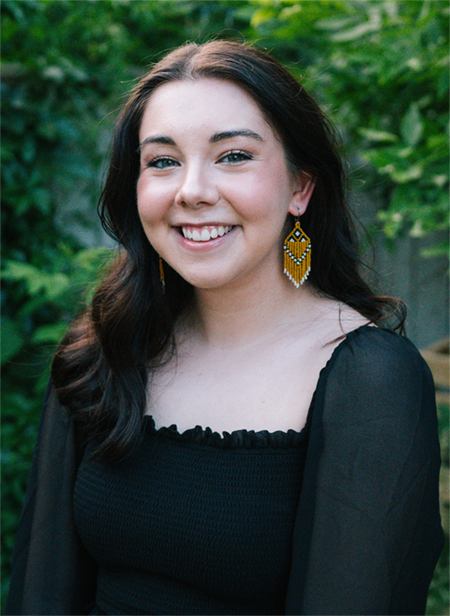
Emily Winters
Alejandra Botia and Emily Winters, Students in Psychology
Students in psychology, like students everywhere, have had a tough adjustment to make these last two years. Alejandra Botia and Emily Winters spoke to us about what they’re doing to help their fellow students navigate the new challenges presented by COVID.
Emily Winters is much less green, about three and a half feet taller, and speaks much less cryptically than Yoda. She is a doctoral student in clinical psychology and the University of Regina, and the first member of the JEDI executive of the CPA Section for Students. This is the first year the Student Section has had an Justice, Equity, Diversity, and Inclusion executive – and yes, the name was an intentional choice thanks to input from other student members.
“I’m the first person in this role, and I was excited to see it created. We’ve already started recruiting a bunch of volunteers to form a JEDI committee, and that should be on the way soon. Their primary role will be in compiling lists of resources to be made available to section members. We’re also hoping to develop an event for the upcoming convention in 2022 targeted toward students in the area of justice, equity, diversity, and inclusion.”
When the Jedi High Council was convened, the members were chosen very intentionally. Plo Koon was Kel Dor, from Dorin – he’s the one who had to wear goggles and a face mask so he could breathe in certain atmospheres. Adi Gallia represented the Tholothian people, Ki-Adi-Mundi with his binary brain represented Cerea. And Mace Windu was chosen to please all the fans who really enjoy watching Samuel L. Jackson do stuff. The Student Section JEDI committee will be similar – a committee dedicated to diversity and inclusion must also be interested in representation.
“Because it’s a role through the section for students, that’s a very large focus for us – making the student population as diverse and equitable as possible. It’s also important to think long-term so that clinicians, researchers, psychologists in general are incorporating those values into their work and their practice. I try to be really mindful of the idea that just increasing the population of students from marginalized groups isn’t going to result in meaningful change. That can’t be our only strategy. We have to make sure that existing psychologists are thinking this way – who they’re recruiting into their labs, what the makeup of their practice looks like.”
This idea – that simply recruiting students from diverse backgrounds is not going to result in long-term diversification – is something that is being taken up at the board level of the CPA as well. Alejandra Botia is a third-year psychology student at UBC in counselling psychology, and the Chair of the Student Section. Part of her role as Chair means being the Section representative on the board of directors.
“I joined the board in the summer of 2020, when we were having a lot of discussion around social justice and racial injustice. My favourite part of having joined the CPA in this role is meeting people like Emily, and being on the board around people who work so hard and care so much to come together and have conversations that can be challenging and difficult. It takes a lot of courage and humility to be able to show up in those spaces. What I’m seeing is the board coming together to do that. And I’m so inspired by the students that I’ve been meeting and encountering as well. Oftentimes it takes even more courage to show up in that space because as students we’re often in positions of less power. In my role, I’ve been trying to advocate for student voices to be heard more and more. One of the wonderful things we did last year was come up with a survey of student members to find out what they would want in Emily’s role now. What was important to them? What they wanted us to consider, even up to and including the name. It’s there that I can really connect what the student section is doing with what the board is doing.”
The members of the Student Section executive have had to do their jobs in a time of unprecedented turmoil, as the pandemic has made virtual meetings the norm. The executive are now all Ki-Adi-Mundi, who never seemed to attend a single Jedi High Council meeting in person and always showed up as a hologram. This has presented difficulties not only for the executive, but for students in general. Emily says,
“The transition to university has been quite difficult through the pandemic, likely more difficult than it would have been otherwise – especially for undergrad students. The transition to online learning has been tough, and a lot of people don’t like it. For some it works great, but it has been a real challenge for many. Also being isolated has been very tough for students. A lot of students in my program move away from their home provinces to attend graduate school, so they’re leaving living with their parents to living completely alone in a very cold Saskatchewan winter. Being a student is tough, and feeling like you’re doing it alone makes it that much more difficult.”
Alejandra says that there have also been many practical difficulties, in addition to the isolation.
“Another thing we hear from students a lot is that this has disrupted their research and their practice. Not being able to go to the campus, to conduct research in the ways they were used to, means they have to either get really creative, or put it on pause. Some practicums weren’t taking students any more because they couldn’t. So having to wait, and maybe delay some of their program requirements because of the pandemic had a lot of students really worried. Financial issues also cropped up – students don’t get paid a lot, if anything, and not being able to hold a job you previously had, or take advantage of opportunities you might previously have been able to access.”
Connection of any kind in this time has become more important than ever. Mentorship is one of the ways these connections have been established in the student section. Where would Luke Skywalker be without the mentorship of Yoda? Or Anakin without Obi-Wan…never mind that last one. Alejandra was in charge of the CPA student mentorship program last year, and while it was always virtual – undergrad students and their graduate student mentors were rarely in the same city, let alone at the same school – she says it has become more important and helpful than ever during COVID.
“The mentorship program has been great, partly for the connection with another person but also to brainstorm ideas. There were a lot of questions that popped up ‘I can’t get a practicum, what else can I do?’ that kind of thing. It was such an unfamiliar situation, especially for undergrads, that to have someone there to help them through it was a really nice outlet.”
The pandemic has exposed many divisions in Canadian society, most particularly in illuminating the inequalities borne by Black, Indigenous, and People of Colour much more heavily than by others. The psychology students of today, and the members of the student section, are no exception. Says Alejandra,
“I think the events we’ve experienced and witnessed over the past few years have also taken their toll. I’m thinking about Black and Indigenous people and racial injustices and systemic oppression that a lot of people have been experiencing and continue to experience. Also the hate crimes against Asian people, where many students themselves have experienced racially-motivated hate throughout this time. For students of colour it has been a particularly difficult time. That’s one of the reasons it’s so important to continue to create spaces and opportunities for people to connect with one another.”
Emily is now in charge of creating one of those opportunities for connection, through the JEDI initiative. It’s just getting off the ground, but she and the rest of the section executive have a particular vision for this new group.
“It’s still pretty early days and I want to make sure it’s a very collaborative process. In creating the committee, I want to make sure it’s as diverse as possible in terms of advocacy groups. I want to make sure we have someone who can focus on disability, someone who can advocate for problems that are relevant to Black folks, that sort of thing. Trying to make sure we have that representation as best we can, without expecting them to speak for an entire community and be the sole perspective! From my perspective, one of the things I really want to advocate for is for Indigenous people. I am Inuk-Settler. My dad’s family comes from Nunatsiavut, a stretch of land along the coast of Labrador, so that’s something that’s personally important to me. I think it is for a lot of folks, especially with the confirmation of graves at residential schools, it’s on a lot of peoples’ minds. One thing I’d like to do through my role is dive into the Truth and Reconciliation Report and the calls to action. To see what we can do from our perspective and in our role as the Student Section. And to look at where we’re at as the field of psychology in general and where we can go from here and what we can implement. I also think it’s important to look at COVID and how it’s impacted racialized communities in very specific ways because we know the pandemic has disproportionally impacted BIPOC.”
What Emily didn’t say – but maybe could have said – is “you must unlearn what you have learned…Try not. Do. Or do not. There is no try.”
Psychology Month Profile: Dr. Jim Cresswell and Dr. Thomas Teo, History and Philosophy of psychology
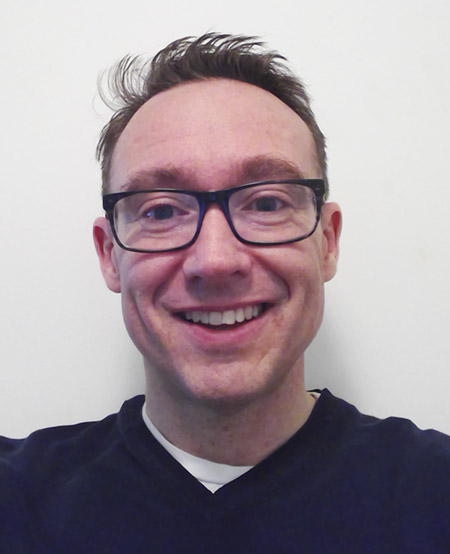
Dr. Jim Cresswell
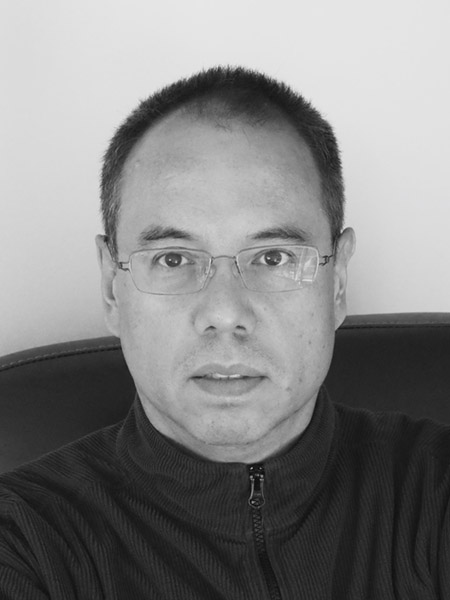
Dr. Thomas Teo
Dr. Jim Cresswell and Dr. Thomas Teo, History and Philosophy of Psychology
The History and Philosophy of psychology is long, broad, and a truly enormous field of study. A lot of it involves ‘big-picture’ thinking. We spoke to Dr. Jim Cresswell and Dr. Thomas Teo about how they see the ‘big picture’.
History and Philosophy of Psychology
“Think about zombie movies and zombie shows – zombies are literally subhuman. You can kill a zombie, you can mistreat it completely, they don’t have any rights. In fact, you have a duty to kill a zombie because they’ll take our way of life away.”
Dr. Thomas Teo is a faculty member in the Historical Theoretical and Critical Studies of Psychology program at York University. He has been active in the advancement of theoretical, critical, and historical psychology throughout his professional career. He started out with an interest in the history of racism, worked on the relationship between psychology and racism, and on the question of the degree to which scientific psychology can be a form of violence – which Dr. Teo refers to as ‘epistemological violence’ (epistemology is the branch of philosophy concerned with knowledge). Recently, he has been studying the re-emergence of ‘fascist subjectivity’, based on subhumanism and racism, and the idea of cultural supremacy that we can find in the West.
“Whereas racism can be based to a certain degree on science, for instance using numbers and graphs, the notion of people being subhuman can’t be. Subhumanism - think about zombies - is strictly a visual ontology [the branch of philosophy dealing with the nature of being]. You just “see” and know what a zombie is and you don’t need a scientific explanation for that. And it is like this for some people when they see, say, migrants coming to the border. They run, the “caravan”, they walk on foot with suitcases through snow to the border, to a place where they can’t gain “regular” access. It appears to be “abnormal” behaviour, deviant from how ‘regular’ Americans or Canadians behave,. It shows visually that ‘they’ are not like ‘us’, that that are a class of subhumans. You can mistreat them, separate them from their families, throw them into cages.”
Dr. Teo suggests that, in fact, throwing them into those cages is a way to make them appear even more ‘subhuman’ to the general public. This stems from a long tradition of dehumanizing other people by portraying them as filthy, parasitic, dishevelled and desperate. Which is exactly how migrants will look after being kept in cages at the border without showers or soap or decent food, for weeks or months on end. He goes on,
“I’m basing this argument on two sources, one of whom is an American writer [Lothrop Stoddard] who wrote about the ‘underman’ which included ‘inferior races’, poor people, communists and Bolsheviks. The second source is an education manual by the SS in Nazi Germany that published a booklet with the actual title ‘Subhuman’. There was very little text; they just used pictures that contrasted human with subhumans: German versus Soviet soldiers; proper German versus Jewish mother; German versus degenerate art. It’s all visual, we can see that the ‘subhuman’ doesn’t have the characteristics of a full human being. They look to be in shambles, dirty, disorganized. It also means that anyone can become a subhuman. Not just Blacks and Jews but anyone who is an enemy of Germany – Churchill and Roosevelt were included. The concept of the ‘subhuman’ is a very malleable concept. This concept of the ‘subhuman’ does not just mean that you’re less than others, it also means there is an imperative to do something about you. If you are a parasite, a cockroach, a rat, “I” have to exterminate you or remove you.”
Dr. Teo speaks a lot about ‘subjectivity’, suggesting the field of psychology needs to focus in this area a little more in order to make sense of the enormous amount of information we have gleaned from empirical studies over the decades. For example,
“We divided subjectivity into thinking, feeling, and willing. Then we divided thinking into attention, perception, cognition and memory. Memory can be divided into short-term, long-term, episodic memory. Then you look at how one small aspect in a subdivision of a subdivision relates to another small aspect. And it’s very difficult to relate this back to the whole, to a first-person perspective (subjectivity)”
Looking at the big picture is a mantra of those who work in the area of history, theory, and philosophy of psychology. Dr. Jim Cresswell is a professor at Ambrose University, and the Chair of the CPA’s History and Philosophy Section. In addition to his work in history and theory, his areas of expertise are social and cultural psychology, and immigration and adjustment in the context of community-based research. He too talks about the necessity of looking at the bigger picture.
“Psychology as a discipline is having to grapple with post-colonialism, which means talking about subtle but ubiquitous systemic biases against marginalized people of all sorts. We don’t exactly have the cleanest track record in psychology, and a lot of that has to do with the fact that we don’t have a lot of training in thinking about what our theories mean in terms of big picture issues like systematic discrimination. We’re often focused on supporting the individual and doing empirical work in the present moment, but psychologists find themselves in a kind of cultural milieu where a focus ‘just on what the science or data say’ about the individual is not cutting it like it used to. We need to grapple with how and why our empirical efforts worked really well for certain populations, but quite badly for others.”
Although these interviews were conducted several months ago, a lot of what Dr. Cresswell and Dr. Teo said at the time resonates particularly loudly today, especially for those ‘other’ populations who are having a pretty bad time with the recent abhorrent invasion of the Ukraine by Vladimir Putin, and the fascist-style propaganda and disinformation campaigns that have accompanied it. Dr. Teo describes ‘fascist subjectivity’ this way:
“You can have fascist politics with authoritarianism and disinformation and propaganda, and so on. Fascist subjectivity is an individual dimension. If I believe that wealth should not be shared with ‘the other’, and I provide racist or sub-human arguments or feelings for that, then I am entering fascist subjectivity. It is based on the idea that wealth should exclude ‘the other’ or that wealth can be extracted from ‘the other’. In classic fascist subjectivity I can go into other countries and extract wealth from ‘these people’ because they are inferior, they are sub-human, they are parasites. They even can be exterminated if they become a burden”
The global pandemic of the past two years is another example of society’s attitude toward human life. Dr. Teo makes a distinction between those who are dehumanized to the point where extermination is no big deal, and those who are dehumanized to the point where their deaths are no big deal – though the two are clearly two sides of the same coin.
“We have ideas about ‘kill-ability’ and ‘die-ability’. In classical Nazism, Jews are killable, so are Gypsys and homosexuals and enemies, and so forth. Because they are inferior races, or sub-human, they don’t have the same status that we have and there’s no problem with killing them. Die-ability is a more interesting concept, because it moves us from a more classical fascist subjectivity to its re-emergence in our time, where it applies also to liberal democracies. We have debates in this culture, especially during the pandemic, where people say the elderly might be die-able, people with pre-existing medical conditions might be die-able, people in prison and precarious workers are die-able. People have provided economic arguments for the die-ability of many of their fellow citizens: ‘If you want to maintain your way of life, and our economy, then we have to accept that certain people will die.’
In Canada, we have seen that for a long time. Indigenous people were considered killable, and an argument could be made that in many parts of the States Black people are still understood as killable, without consequences. Currently, in liberal democracies we really need to discuss the problem and reality of die-ability, the softer version of kill-ability in a fascist subjectivity.”
That subjectivity – based on a philosophy of big-picture thinking and overarching theories that attempt to connect a variety of schools of thought to one another – is not new. Dr. Cresswell says that psychology in its early years started out with a keen focus on subjectivity, but has drifted over the past century away from this kind of big-picture thinking. Only recently has a concerted effort been made to meaningfully bring this philosophy back into psychology.
“Early psychologists, James, Hall, and Piaget – to name a few – were about 100 years ahead of their time in terms of thinking about topics such as subjectivity, research, and pluralism. Behaviourism and cognitivism that came later moved away from some of that early thinking, which was broader and more systematic. When you go back and look at some of these early writers, you find a lot that’s pertinent to the discipline of psychology’s current context.
Psychologists in the 20th century largely focused on empirical work and shifted away from the theory that underlies that empirical work. The cultural turn started in the 90s brought about a conversation concerning the possibility that our work could be ethnocentric. The result is a recent shift where we’re now starting to pay attention to the theory that informs our research and what we think our observations mean.”
Although not ‘philosophers’ by the strictest definition, both Dr. Teo and Dr. Cresswell certainly speak more philosophically than do most psychologists. As students of history, they are also students of the evolving philosophy that informs the discipline today. As with big-picture thinking, Dr. Cresswell says that philosophical thinking in the realm of psychology started more than a century ago.
“It’s probably more accurate to look at figures such as Sigmund Freud, or William James, as theorists who outlined presuppositions about how to examine the world. In contrast, consider how first- and second-year textbooks will talk about them as researchers who have been disproven in the progress of science. We tell students that they can move on past them without raising questions about what counts as science according to whom it counts. This message is a bit of a problematic stance to take. If you take cognitive theory and examine behaviourism or psychoanalysis from your cognitive paradigm, behaviourism or psychoanalysis will always be ‘disproven’. If you look at cognitive theory through a lens of behaviourism or psychoanalysis, cognitive theory will always fail. My point is that we have to teach students to deal with background paradigms that set the conditions for our empirical work. So when a textbook says we’ve moved on past this or that, they’re actually missing the fact that psychology doesn’t have a clear progressive development as a unified discipline. We actually have multiple disciplines within it and we have to recognize there are different paradigms, which means training students on how to think about history and theory.”
There has been an uptick in interest of late to go back to some of the periods where these ideas rose to prominence – particularly, the turn of the 20th century, the 1960s, and the 1990s. I know, thinking of the 1990s in terms of ‘history’ might be a little disconcerting for some. Like, Alanis Morisette released Jagged Little Pill just a few months ago, right? (It was in fact 26 years ago today that she won a Grammy for that album. She is now 47.) Dr. Cresswell says that yes, indeed the 1990s are part of history.
“Consider Wilhelm Wundt, who’s credited with structuralism and the creation of the first psychological laboratory. Half of his work was about völkerpsychologie, which is basically the ‘psychology of the community and people’. There is value in going back to such cultural theory. Another body of literature that we see in history and philosophy today is the continental critiques and philosophy. People like Foucault and the phenomenologists who partly enabled a birth of post-colonial thinking that largely happened worked outside the discipline of psychology, but there is value in understanding such theory in a milieu where we have to grapple with systematic injustice.”
The field of psychology is remembering, and learning from, its own history. Something we as a society should probably be doing a lot more as well. I’m reminded of another historic moment in pop culture, also from the 1990s – 1994, to be precise. A protest song released in memory of Johnathan Ball and Tim Parry, two men who were killed in the Warrington bombings carried out by the IRA the previous year.
“But you see, it's not me
It's not my family
In your head, in your head, they are fighting
With their tanks, and their bombs
And their bombs, and their guns
In your head, in your head they are crying”
- The Cranberries, Zombie

